

MAGAZINE ISSUE 11 | | |הכרבה תא ‘ה הוצ ןאכ ד”סבTISHREI 5783 / SEPT 2022 NO STRANGER TO PAIN Rabbi Gershon Schusterman’s life SLEEPLESS SIMCHAS TORAH Rebbetzin Shula Kazen’s resolve CROWN HEIGHTS SERGEANT Mike Baratta is nicknamed “Rabbi” MISDIALED CALL FROM GERMANY A story of hashgacha protis CELEBRATING TISHREI Stirring Selichos in Lubavitch Tishrei in Russia & America A Tahalucha to remember 12 Tips for hosting guests Modern recipes by Kim Kushner Chol Hamoed trips gone wrong A BRIEF GUIDE TO FINDING A SHIDDUCH • CROWN HEIGHTS KOSHER RESTAURANT LIST

CONTRIBUTION, GET THE MITZVAH EVERY SINGLE DAY OF THE YEAR

Our Sages teach us the great importance of the mitzvah of tzedakah and encouraged us to do so daily.

The Lubavitcher Rebbe, of blessed memory, established a unique fund, in 1953, which ensures that we perform the mitzvah of tzedakah—every single day of the year.














Make one contribution to Machne Israel’s Keren Hashana, in an amount corresponding to the number of days in the new year (355), and monies from the fund will be distributed on your behalf twice daily, before shacharis and before mincha, for charitable purposes.
As we begin the new year, contribute to the Keren Hashana daily tzedakah fund, for yourself and for all your family members.
With blessings for a


ה״ב KEREN HASHANA THE DAILY GIVING FUND הנשה ןרק אי וכ וט וט וט דכ י גי טי
הקותמו הבוט הנשל הבוט המיתחו הביתכ MAKE ONE
M Y K EREN H ASHANA.COM דכ VISIT MYKERENHASHANA.COM CALL ( 718 ) 774 4000 MAIL IN YOUR CHECK TO: MACHNE ISRAEL 770 EASTERN PARKWAY BROOKLYN, NEW YORK 11213 אי EST. 1953
TISHREI
vote counts
No stranger to pain
Facing
Selichos in Lubavitch A stirring description

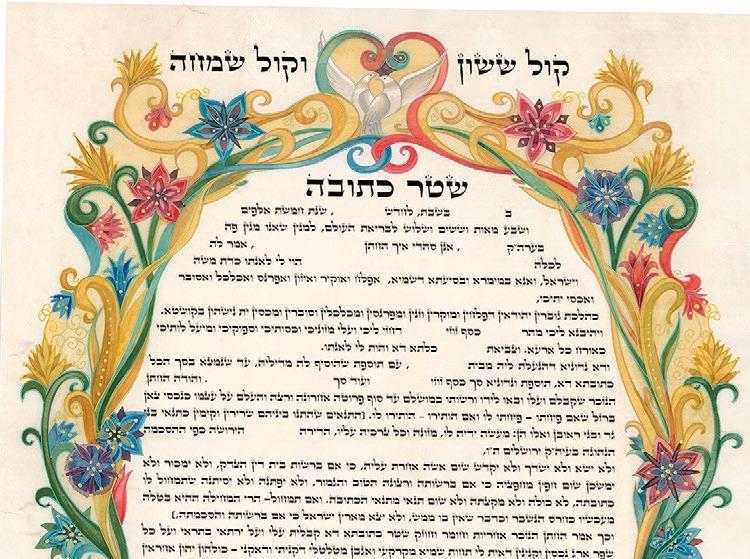
Stories by Reb Mendel Tishrei in Russia & America
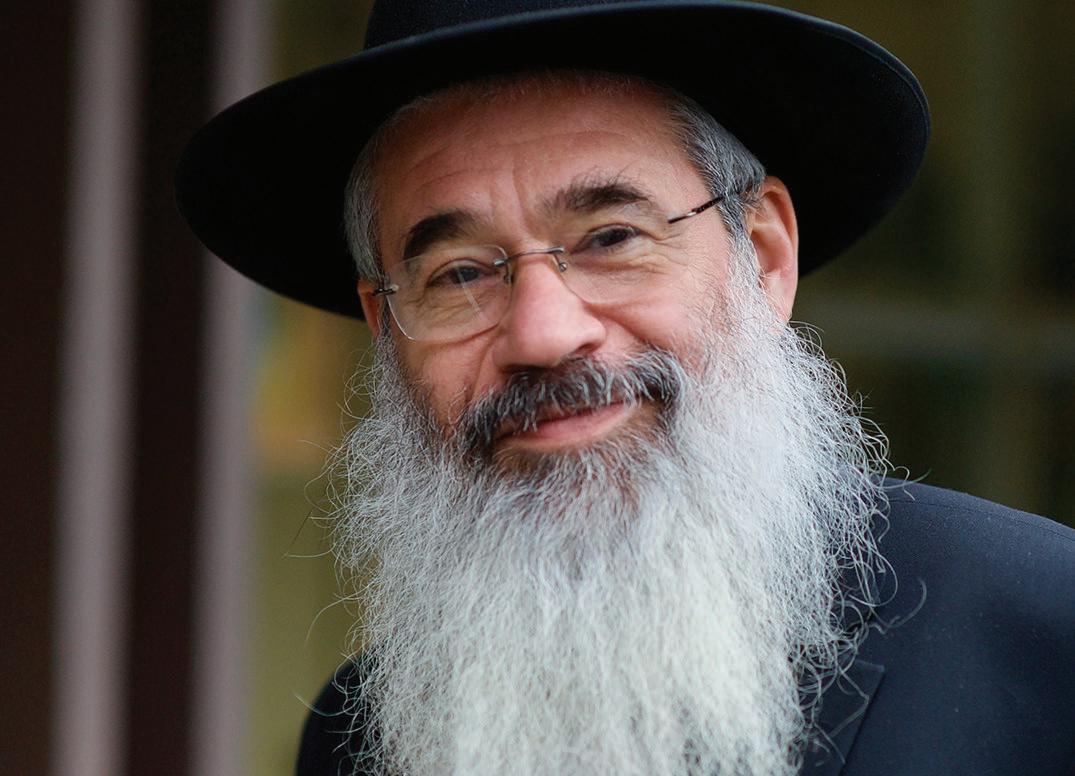
A march to remember The Tahalucha campaign
Sleepless immigrant Simchas Torah with the Rebbe
A
for every student
The host with the most Welcoming Tishrei guests
KOSHER
recipes
Kushner
Heights Kosher Local
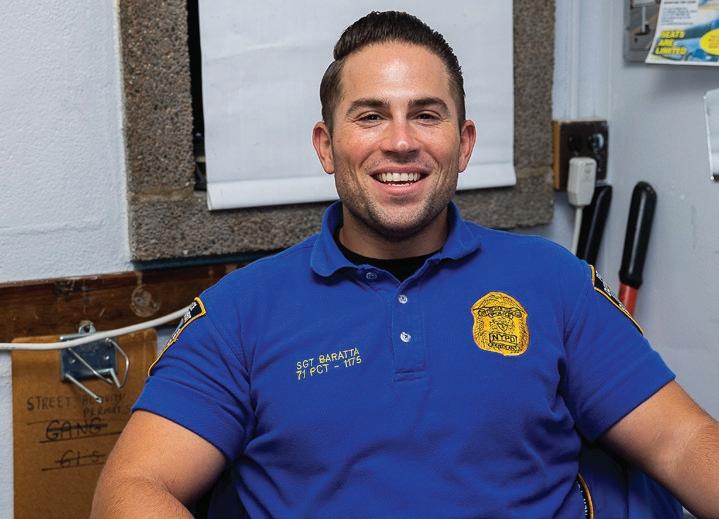
guide
with the
CONTENTS 10 16 20 24
the tough questions of life A cop with a kop NYPD’s Mike Baratta Lives and loves Crown Heights Brief guide to finding a bashert Wisdom from veteran shadchanim Photos of the year Photographers pick their memorable shot
Every
A short essay
place
Modern
Kim
Crown
restaurant
KIDS Connect
details game The misdialed phone call Story COLUMNS From the Publisher Mica Soffer Dvar Malchus From the Rebbe From the Rebbe Tishrei flashback Ask the Therapist Rabbi Daniel Schonbuch Humor Mordechai Schmutter Then & Now 824 Eastern Parkway Important Numbers & Zmanim 26 36 40 48 50 56 60 66 74 79 86 6 8 28 92 96 100 104 4 COLlive Magazine
Cashapp: $cssycashapp Zelle: office@cssy.org



AD On behalf of hundreds of families in our community, THANK YOU to all our donors for your generosity and support this Tishrei and all year long. Chevra Simchas Shabbos V’Yom Tov Feeding Crown Heights families since 5738-1977 Donate today at: www.CSSY.org/Tishrei PayPal: www.PayPal.me/cssy
Or mail your donation to: CSSY 593 Montgomery St. Brooklyn, NY 11225 wishes you and your family המיתחו הביתכ הבוט You can feed a Crown Heights family CSSY
PUBLISHER
Mica Soffer
EDITOR
Rabbi Yehuda Ceitlin
ASSISTANT EDITOR
Toiby Hayes
CONTRIBUTING WRITERS
Zev Gotkin
Libby Herz
Rivkah Katz
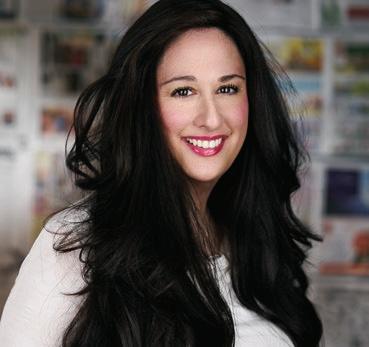
Chana Levy Mordechai Schmutter
Rabbi Daniel Schonbuch Danit Schusterman Dovid Zaklikowski
COVER PHOTO
Shmuel Amit
PHOTOS
JEM Hasidic Archives Shalom Burkis Nechama Photography
FROM THE PUBLISHER MICA SOFFER
Some of my favorite and most unforgettable memories took place between the walls of 770 Eastern Parkway. Having grown up in Crown Heights, I merited to spend my young and teenage years seeing the Rebbe. The month of Tishrei, and its many yomim tovim, was when we accumulated many of those cherished moments.
Interestingly, one of my fondest moments is from Yom Kippur. I remember spending this special day in the women’s section upstairs, with cold air blowing out of the A/C units and the distinct smell of the musty seforim. As the crowd would head back into 770 for Mincha, anticipation would begin to build. But it wasn’t for the fast to be over.
As the davening went on, the main shul would get fuller and fuller. by the time Mincha was over, if you weren’t wedged into a spot where you could crane your neck for a glimpse of the Rebbe, there was no getting in. By the end of Ne’ila, the crowd would roar Shema Yisroel, Baruch Shem and Hashem Hu Ha’elokim.
And then, as if we all forgot that we hadn’t eaten for 25 hours, we all joined in the joyous singing of Napoleon’s March. The Rebbe would stand on a chair, and in later years a step, and the exhilarated singing was deafening. We all joined in the singing, forgetting that we were so packed in we could barely breathe, and felt pure and holy, having been cleansed during a day like Yom Kippur.
And one more moment was worth it all. After maariv, the Rebbe would turn to us and, in unison, he wished us, and thousands of Chassidim wished the Rebbe as loud as we could, “Gut Yom Tov! Gut Yom Tov! Gut Yom Tov!”
It was the highlight of the entire month and the height of joy. Even now, I can’t write this without tears filling my eyes, as the longing for those special days washes over me yet again.
ADVERTISING
Phone: 718-427-2174 ext. 2
Email: ads@COLlive.com

EDITORIAL INQUIRIES OR SUBMISSIONS

Phone: 718-427-2174 ext. 1
Email: Editor@COLlive.com
COLlive Magazine is published in print periodically by the Collive Media Group Inc. and is distributed free in Brooklyn, NY.

COLlive does not endorse any products or services reported about or advertised in COLlive Magazine unless specifically noted. The acceptance of advertising in COLlive Magazine does not constitute a recommendation, approval or other representation o quality of products or services, or the credibility of any claims made by advertisers including, but not limited to, the kashrus or advertised food products. The use of any products or services advertised in COLlive Magazine is solely at the user’s risk and COLlive accepts no responsibility or liability in connection therewith.
After marrying and being blessed with children, I would stay home with the little ones on Yom Kippur and daven in solitude. Yet, each year as the fast concluded, and we said “Leshana Habah B’yerushalayim!” there was one more thing we would say together - “Gut Yom Tov! Gut Yom Tov! Gut Yom Tov!”
Each year, when we say “Gut Yom Tov!” three times, as we did back then, my voice cracks a little bit, as it is now more of a prayer of longing. In addition to my personal requests on Rosh Hashanah and Yom Kippur, I ask Hashem for the ultimate Geulah with the certainty that when it happens, the Rebbe will be looking out at the crowd and wishing us again, “Gut Yom Tov! Gut Yom Tov! Gut Yom Tov!”
With blessings for a happy and sweet new year, Mica Soffer
MicaSoffer
FIND US ON SOCIAL MEDIA: @COLliveOfficial @COLlive 718.679.9450
 Photo by: Nechama Photography
Photo by: Nechama Photography
6 COLlive Magazine

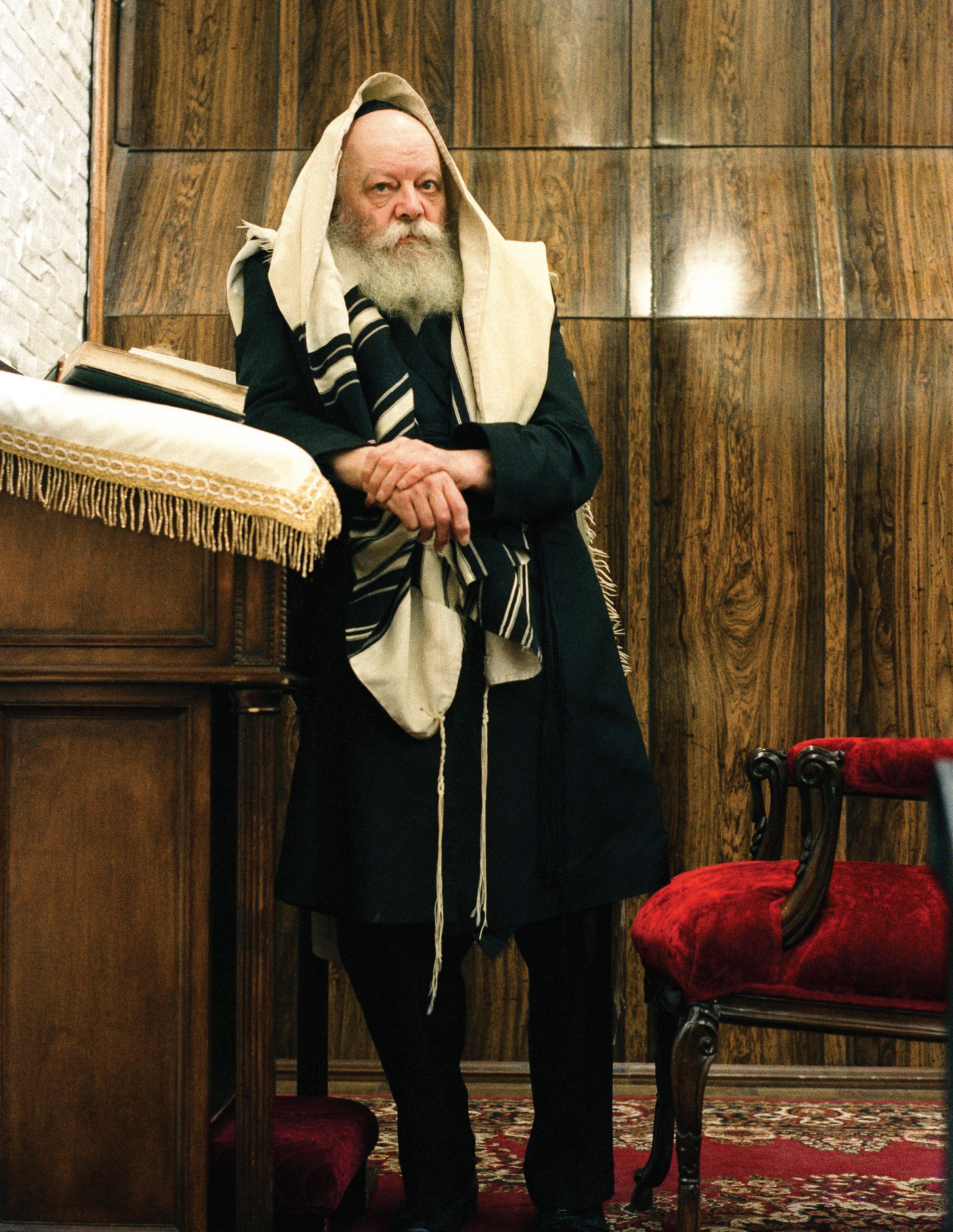
A Hakhel year A letter from the Rebbe on Chol Hamoed Sukkos 5741 [1980]
By the Grace of G‑d Chol hamo’ed Succos
Sedra: Brochoh, Year: Hakhel 5741. Brooklyn, N.Y.
To All Jewish Children of pre‑Bar/Bas Mitzvah Age G‑d bless you all!
Greeting and Blessing:
You surely know that we are now in a special year, called the year of Hakhel (Year of Assembly). During the time when the Bais Hamikdosh (Holy Temple) in Jerusalem was in existence, it was in this year—and precisely in these (first) days of Chol hamo’ed Succos—that the special Mitzvah (G‑d’s commandment) of Hakhel was carried out: All Jews, men, women, and children, even the very young ones, were assembled in the Bais Hamikdosh, where the King read before them portions from the Torah, and everybody listened very attentively, and learned to keep and do all that is written in the Torah throughout their entire life.
You surely also know that the Torah requires us, all Jews, to observe the anniversaries of important happenings in the history of our Jewish people; and to think deeply about these events, and to relive them as though we were there in person, in order to learn from them the proper lessons and to apply them in our personal lives, in our daily life here and now.
For example: When our very first festival, Pesach—on the 15th of Nissan—comes around, the uppermost thought in our mind is how G‑d took us out from the Golus (exile) and slavery of Egypt, and made us free to serve Him and fulfill His Mitzvos.
Similarly, when the days of Hakhel come around (once in seven years), everyone of us, including the very small children, must become deeply mindful that our homes and every Jewish home, also the Jewish school that houses the children (and their classmates), should be pure and holy, like being in the Bais HaMikdosh; and that in every Jew, young and old, there is a “king” that rules and directs his daily activities, this being our Emunah (belief) in G‑d, with which we begin our everyday life, as all of us, including the tiny tots, say immediately upon rising in the morning: Modeh ani—“I give thanks to You, living and eternal King.” We must listen attentively, with obedience and devotion, to this “king” in us, in order to make sure that everything we do is in keeping with what is written in His Torah.
Everyone should also be involved in Hakhel: Starting now and continuing through the year—on suitable occasions, and particularly on Shabbos—to get together for the purpose of learning a portion of Torah or a Torah subject, and encouraging each other in the doing of Mitzvos all the better.
In order that all this should be with still greater Hatzlocho, it would be a good idea for those who can participate more often in such gatherings, to form a kohol, a permanent group, or unit, under the same name everywhere “Tzivos Hashem” “G‑d’s Army,” to which every Jew already belongs from childhood, all the better to carry out the Divine order: “Fill the earth and master it”—mastering all that is around him/her by filling the environment with true light, the light of Torah and Mitzvos, so that everyone will see and know that the whole world is G‑d’s.
Wishing you much Hatzlocho in all above, and a joyful Yom Tov, and that the entire year should be a good and sweet year,
Editor’s note: Because of the holiness of the Festival, the Rebbe did not sign this letter.
Courtesy of “To the Sons and Daughters of Our People Israel, Everywhere - Letters by the Lubavitcher Rebbe on the Jewish Festivals,” published and copyrighted by Kehot Publication Society.
DVAR MALCHUS Tishrei, 5783 9
NO STRANGER
TO PAIN
“Life as you have known it has changed forever. This is your opportunity to put everything you believe in and everything you’ve learned and taught until now into action. Are you up for it?”
This is what Rabbi Gershon Schusterman asked himself on the fateful Sunday morning of the 4th of Nisan 5746 (April 13, 1986). It was the day that would reshape the trajectory of his life.
At that time, Rabbi Schusterman was the director of the flourishing Hebrew Academy Orange County in Huntington Beach, California. He was the community’s address for answers to some of life’s toughest questions— such as, where is Hashem when tragedy strikes?
“As a young rabbi, I felt I was meant to be Hashem’s defense attorney,” he explains. “Some cases were easier, some harder. My ‘Client,’ Hashem, was
By Rivka Katz
certainly innocent—of that I was certain—and I was equally certain that I already had all the answers.”
But then, his wife, Mrs. Rochel Leah Schusterman (nee Deitsch), passed away.

Faced with sudden tragedy, Rabbi Schusterman was overcome with immense
feelings of loss. “We had big plans,” he reflects. “I was thirty-eight years old, and my wife was only thirty-six. We were blessed with eleven children, our oldest child was fourteen, and our youngest were sixteen-month-old twins. I was grieving the loss of my wife and our marriage, and together with that, the loss of
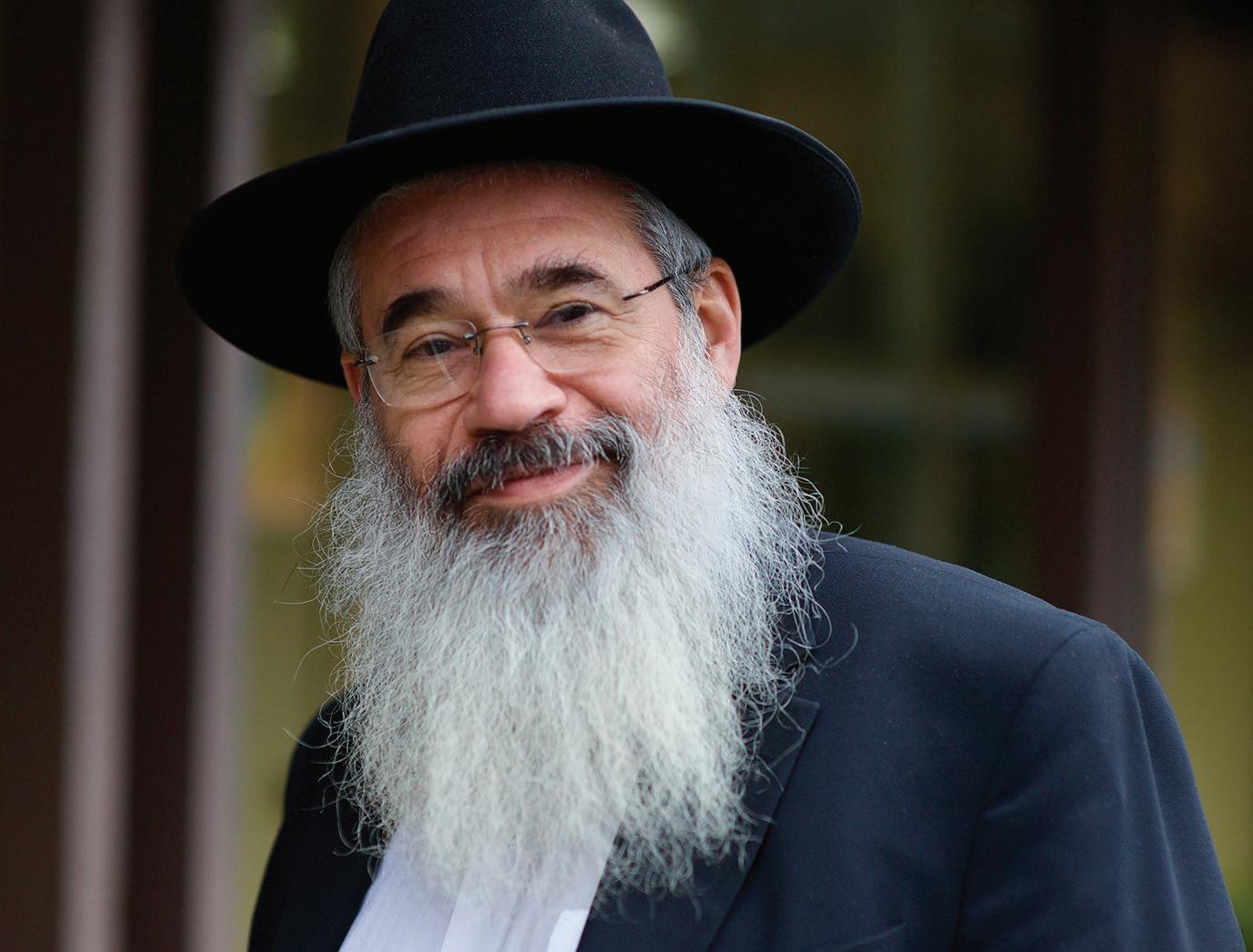
Rabbi Gershon Schusterman had the answers to life’s tough questions, and then tragedy struck
10 COLlive Magazine
hopes and dreams that reality ruthlessly dashed.”
Dr. Viktor Frankl, the psychiatrist and Holocaust survivor who founded logotherapy, said, “Between stimulus and response, there is a space, and in that space lies our freedom and our power to choose our response.” For Rabbi Schusterman, instead of wallowing in grief or feeling paralyzed by the responsibilities he now carried single-handedly, he challenged himself to internalize his years of learning and teaching—and act accordingly.
Thirty-some odd years later, Rabbi Schusterman’s life serves as a testament to that choice.
In an interview with the COLlive Magazine, Rabbi Schusterman acknowledged that he never asked for his life to take on such a tumultuous journey. “To get this education, I have paid the tuition–dearly,” he says. And, though reserved by nature, he has shared this hard-won wisdom through his new, masterful book, “Why, G-d, Why? — How to Believe
strike their role models.”
in Heaven When it Hurts Like Hell,” available soon in bookstores and online.
The book is based on a seven-week course that he taught in his community in California when his wife’s passing was fresh and raw and the community was grieving the loss of its beloved Rebbetzin. “I had to be there for my community,” Rabbi Schusterman recalls. “They could not comprehend how such a tragedy could
Over 272 pages, the book presents classic ideas about holding on to faith despite one’s pain and offers healing words and examples to encourage individuals—very much including non-religious Jews and non-Jews—to take a deeper look at this timeless question about why we suffer from tragedy. “When enmeshed in emotional hurdles. On instinct, we ask, ‘Why G-d, Why?’ There are really two questions being asked: There is the general why, questioning why the occurrence is destined to happen at all. And then, there’s the second question: Why does this happen to me? My goal is to provide an authentic, emotional, educational and real-life perspective to try on for size,” he says.

“Did I know why Hashem wanted it this way? Did I see how it was ‘good?’ Up until this day, the answer to both these questions is no.”
LIFE Tishrei, 5783 11
It took years for Rabbi Schusterman to finally come to terms with the calamity he and his family suffered.

He felt he was in the hot seat for the first several months. “My emotions were in turmoil. I was frustrated and at times, even angry,” he admits. “I was now asking myself the same questions that I had answered countless times for others. Thankfully, the answers were still sound. But they held much more profound meaning. Within my pain, I had a choice: Do I hold on to the pain as an end in itself? If the answer was yes, then holding the pain causes
suffering. I would become a victim to my predicament.”
Rabbi Schusterman adds that, in contrast, when pain is a means to an end, then the pain is purposeful. “Faith means submitting to and accepting Hashem’s will. In psychology, the final step is acceptance is when you work through the five steps of grief. Likewise, from a religious viewpoint, faith gets you to that final step.
“What kept me going through the whole ordeal was accepting that this is Hashem’s will. Did I know why He wanted it this way? Did I see how it was ‘good?’ Up
until this day, the answer to both these questions is no.”
While accepting a painful experience as purposeful does not diminish the pain, knowing that it is purposeful enables fortitude and endurance even when you may not understand the meaning, Rabbi Schusterman says. In other words, the heart’s chambers are spacious enough to hold two feelings simultaneously: space to feel pain for the loss and to hold on to faith in the loss’s Orchestrator, the One who determined that the events unfold in this manner.
Because we can rarely
LIFE 12 COLlive Magazine
understand the reason for tragedy, it takes inner work, aided by guidance from empathetic mentors, to remain grounded in one’s faith when the rug is swept from beneath their feet. “By virtue of a Jew’s neshama, the core of faith is already there,” explains Rabbi Schusterman, referencing fundamental ideas elaborated upon by the Alter Rebbe in the book of Tanya. “Obstacles challenge people to nurture their faith by digging deeper into their reserves. Faith isn’t an answer; it’s a form of submission that perseveres and gives one strength and endurance even when the answers are elusive.”
“Acceptance is crucial,” Rabbi Schusterman emphasizes again. “Human beings are not qualified to give answers to these questions.” Perceiving faith looks and feels different for each person and also takes different methods of inner work. “Having raised eleven children, I can attest that everyone handles things differently,” he adds. “Each person’s hell, or tolerance of a hellish experience, also varies. One person’s problem is another’s crisis and the third’s tragedy.”
“Faith is what carries a person to the other end of the abyss. Knowing that Hashem is holding our hand provides a powerful form of security.”
As an example, Rabbi Schusterman describes a visit to his son, Rabbi
Eliyahu Schusterman, a Chabad Shliach in Atlanta. As father and son were talking one evening, the junior Rabbi Schusterman vented over the unfairness of a calamity that had befallen a relative. Listening intently, Rabbi Schusterman began to formulate a rabbi-like response to share until he realized that his son, an experienced rabbi in his own
right, already knew those responses. “When I had an opportunity to respond, I looked into his eyes and said, ‘Eliyahu, do you want an answer, or do you want a hug?’ I caught him off guard, and he took a few moments to respond. His eyes filled with tears, and finally, he said, ‘I want a hug.’ Sometimes, a hug can accomplish what an answer cannot.”
His new book speaks to anyone going through an experience that makes them question their belief in Heaven. Each chapter artfully carries its readers to a higher understanding of Hashem, their pain, and themselves. “Only we can decide whether to give this personal crisis the power to destroy us―or whether we will choose life and forge ahead in a positive direction,” Rabbi Schusterman says.
Currently a resident of Los Angeles, Rabbi Schusterman compares coping with tragedy to a surfer confronting a dangerous wave. “When a powerful wave comes crashing down on a person, it can, chas veshalom (G-d forbid), endanger him,” he explains. “However, an experienced surfer duck-dives
“Instead of fighting the trauma, the most effective way to stand strong in times of adversity is to learn to surf. Surfing requires a person to submit to Hashem.”
LIFE Tishrei, 5783 13
into the wave, comes out safely on the other side, and positions himself to ride the next wave―exuberantly and triumphally.”
Crises are potent. They can crush or elevate a person. “Instead of fighting the trauma, the most effective way to stand strong in times of adversity is to learn to surf. And in times of crisis, surfing requires a person to submit to Hashem. Then they emerge with their faith intact; actually, with a richer faith than before, a faith tried and tested.”
Rabbi Schusterman says that writing the book took more than a year and a half, but “in truth, this book reflects the work of thirty-six years.” It has been “a painstaking labor of love, sweat, and many tears,” he says and expresses
gratitude to his team of coaches and editors who have guided this journey.
The dedication to the book epitomizes Rabbi Schusterman’s faith in the Divine. “This book is dedicated to my family, who accompanied me on this journey,” Rabbi Schusterman writes. “To my dear wife, Chana Rachel, who supported me and who raised our children with loving dedication, to our cherished children Sholom Yeshia, Eliyahu, Mendel, Nechemia, Hinda, Ezzy, Berel, Shula, Sheina, Kushi, and Tzippy, and to the blessed memory of their beloved mother, Rochel Leah bat Sholom Yeshaya.” He notes, “They are all there together because it was all part of the Divine’s plan.”
The book is filled with empathy and offers a comforting road to selfdiscovery. In his prologue, Rabbi Schusterman invites readers to join him as he shares his personal experiences and thoughts about this “timeless problem,” offering readers the promise that “together we might grow and, ultimately, celebrate the freedom that comes from it . . . This book has been written by someone in tears, someone who suffered such a loss . . . for others who have also suffered such a loss. So take my hand and let us begin.” It is an invitation that will be almost impossible to resist.
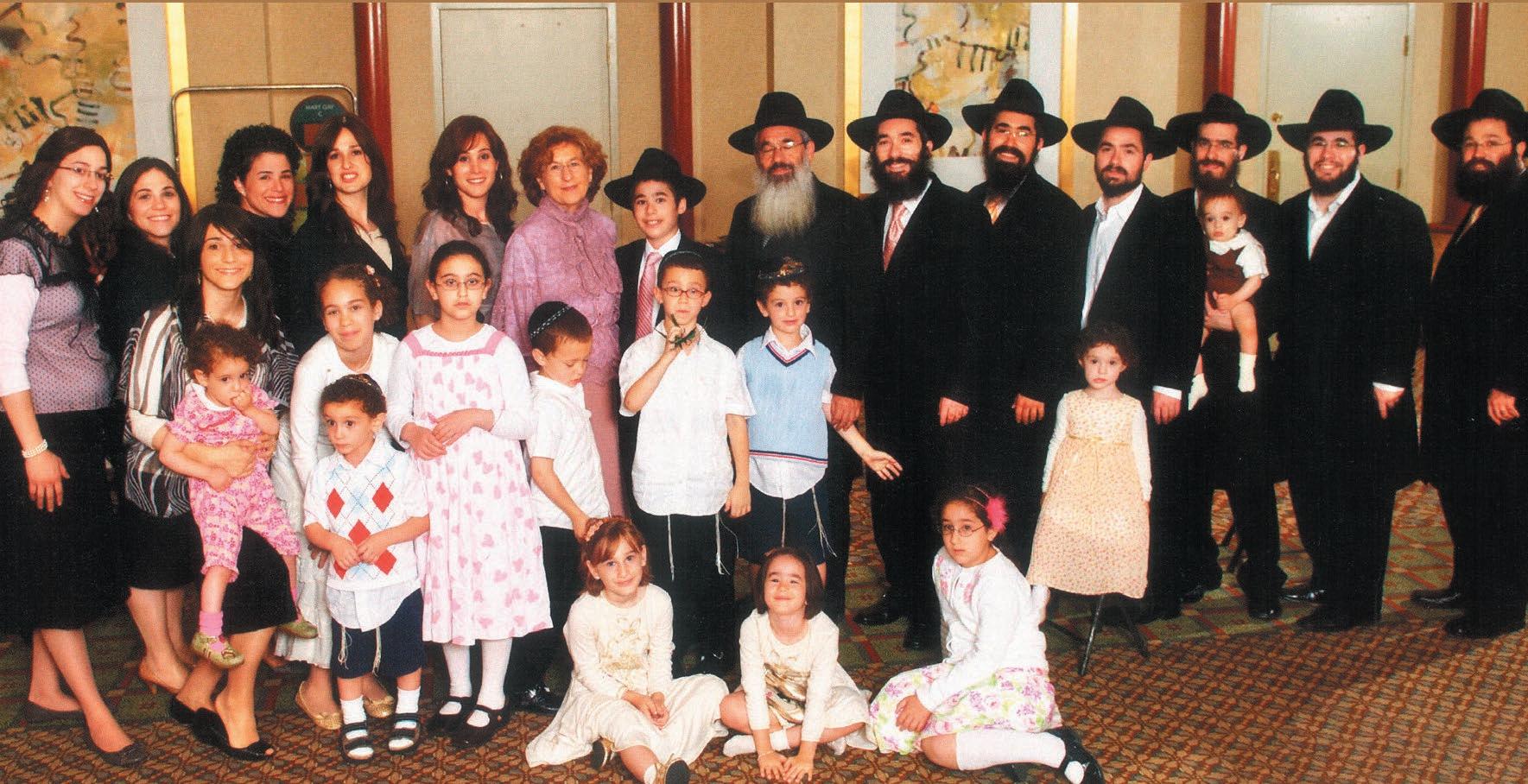
LIFE
14 COLlive Magazine
May you have a Happy,


and Healthy New


הבוט המיתחו הביתכ
Sweet
Year
A COP WITH A KOP
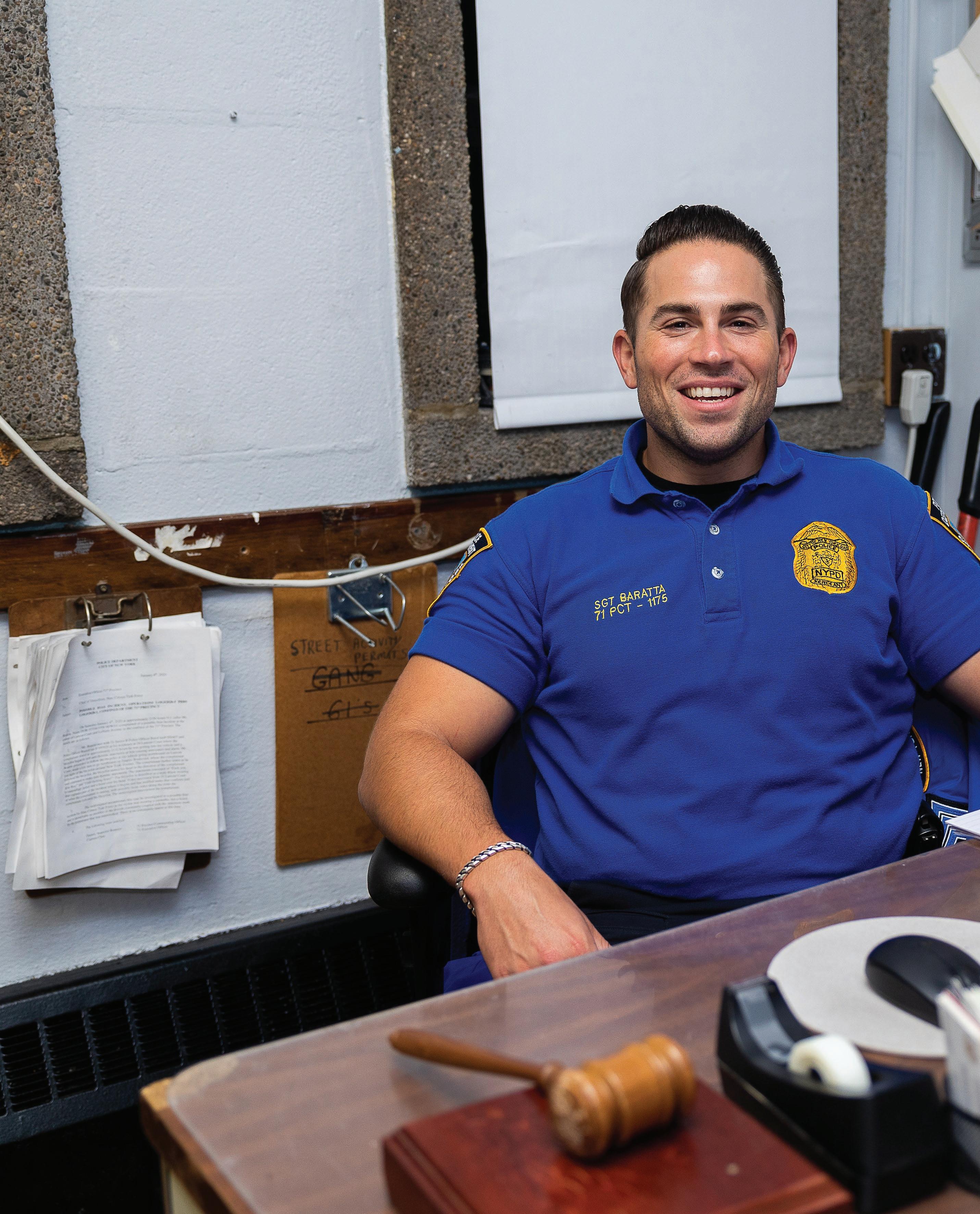 Photo: Shalom Burkis
Photo: Shalom Burkis
16 COLlive Magazine
NYPD Sergeant Mike Baratta is so familiar with Jewish customs that his friends call him “the Rabbi”
By Libby Herz
NYPD Sergeant Mike Baratta was driving around Crown Heights when he saw a young mother on the floor. Surrounded by four small children, all below the age of six and one in a stroller, she was in the midst of a seizure.
Baratta raced out of his patrol car and called for an ambulance. He waited and waited while trying to console the children, but the ambulance did not arrive.
Suddenly, he remembered his police orientation; Yingy Bistritzky was there, and he gave out Hatzalah’s number. Quickly, Baratta dialed the number. “A gentleman was there in thirty seconds,” he says.
That was the first time Baratta called Hatzalah, and it brought him a new understanding of the Jewish community of Crown Heights. “It was eyeopening for me to see what a tight-knit community this was. I saw the resources they had to help one another. That’s how my relationship started.” As Hatzalah gave the young
mother medical assistance, Baratta took the children into a deli, consoling them as they waited for their father to arrive. A few weeks later, Baratta was invited to the Seudas Hodaah for the recovered mother. “It was a kind gesture,” he says. “It opened my eyes to the gratitude and respect (of the community).”
Baratta has been with the 71st precinct for the past eleven years, where he has been promoted twice. From the rank of Officer, he has risen to Detective and finally to Sergeant. His unique position as Community Affairs Officer makes him responsible for developing solutions to challenges arising from diverse communities.
Although each of the seventysix precincts of the New York Police Department holds at least one officer with that title, the responsibility in Crown Heights is greater than most. “I’m in a unique position,” Baratta says. “No other area has such a Caribbean and Chassidic mix. We are pretty
exclusive that way.”
While the infamous Crown Heights riots took place thirty years ago, it is clear to Baratta that the memory is still fresh in people’s minds. Still, he says, “there have been great strides between local clergy members and elected officials to try to open the lines of communication between the two communities.”
Baratta is responsible for keeping open communication between communities. He works to build relationships between leaders and residents. “I’ve done a lot to build relationships with Shomrim, Shmira, Hatzalah, leadership in 770, the Crown Heights Community Council, and local public schools, Medgar Evers College, and Community Board 9,” he notes.
Baratta deals with major public events in his job to keep the peace. For example, when there is a Hachnosas Sefer Torah, Baratta helps coordinate the scheduling. In his role as community liaison,
COMMUNITY
Tishrei, 5783 17
he asks all parties who might be affected if the day and timing work for them. Then, he finds the best time for all involved.
Baratta is a Staten Island native and he lives there to this day. He tries to connect with Crown Heights residents by thinking of shared experiences. “Growing up around here,” he says, “you understand some of the same concerns and feelings of residents. For example, going to the park and running into a tough crowd. I feel like I can use my own life experiences to understand how people feel in tragic moments or happy moments.”
Most of all, the Sergeant is proud to have familiarized himself with Chassidic customs and culture. “I have a bunch of friends who call me Rabbi,” he says with a grin. “They’ll say, hold on, I need to ask the Rabbi.”
“It’s important for me to understand Jewish customs.
Sometimes I’ll say something to Chassidim like, ‘the fast ends at 7:23.’ They’ll smile and
be like, ‘you’re right.’”
Baratta is very involved with Tishrei, Simchas Beis Hashoeva, Chanukah, and the Mivtza Tank parade. “Kaporas can be tough because you get outside agitators trying to prevent people from practicing their rights,” he says. “An awesome event is Simchas Beis Hashoeva - Succos dancing. That’s awesome. But some of the trouble with that is crowd control. There’s a dense crowd in a small geographical area. Still, there are really very few incidences of violence and that is excellent. Some of the challenges there are keeping people off the rooftops. People don’t understand that it’s not safe to have 50 to 100 people on a rooftop.”
During large events like this, Baratta is thankful for the community support. “There’s a lot of fine-tuning between Shmira, Shomrim, and the community members. The police department works closely with Chanina Sperlin, Mendel Mintz and many others. We try to identify, fix,
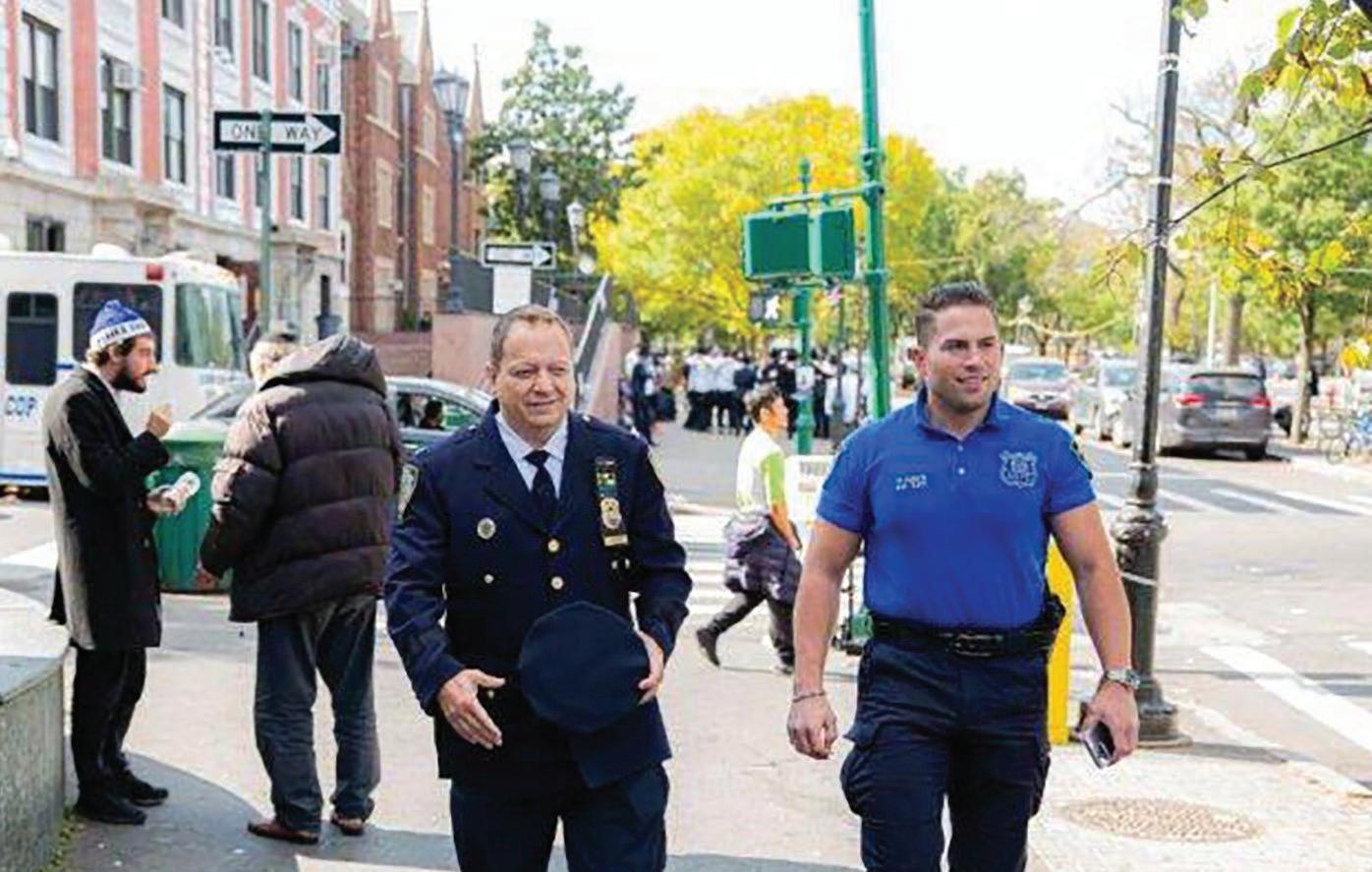
or eliminate things that aren’t safe or running efficiently. We think of ideas and find a better way to do it.”
Baratta admires the high level of caring that he sees amongst members of Crown Heights. “There’s a saying, ‘it takes a village to raise a child,’” he says. “Here, the village is willing to raise the children. When there is an issue within the Chassidic community, they have the Rabbinical court and community organizations who help them mediate. So much gets worked out between members before anything ever needs to have the police involved.”
When he isn’t busy handling events, the Sergeant feels at home strolling down the streets of Crown Heights. “I’ve been around long enough that even people who don’t know my name will recognize my face,” he says.
Does the officer enjoy kosher food? “I like kosher sushi,” he says. “That’s something I eat on a regular basis. I try not to eat donuts on the job, because police don’t actually eat donuts all the time in real life. But it can get difficult around Chanukah. Gombo’s is delicious, and community members bring donuts to the precinct to show appreciation for the police officers.”
When asked if there is one important message that he would like to give the Crown Heights community, Baratta smiles broadly. “Boruch Hashem,” he says. “My message is Boruch Hashem.”
COMMUNITY 18 COLlive Magazine
the



the Rebbe to
family
A fresh, easy to navigate, online platform featuring thousands of videos of the Rebbe for all parts of one’s life Give
gift of
your
ה’’ב
A BRIEF GUIDE TO FINDING A BASHERT Shidduchim
By Danit Schusterman
Finding a Shidduch for our children can be stressful in our lives. We recently gathered a group of experienced shadchanim in Crown Heights for a panel conversation to hear their advice on easing the process and making it exciting. At their request, we left them unnamed and combined their answers and thoughts to present a brief guide on finding a bashert according to the ways of Torah and Chassidus. The following is geared toward both parents and singles.
The Values
As a parent, we all want what is best for our children. Remember that the type of spouse you want for your child is not necessarily the type
they are looking for. Before beginning the process, discuss with your child the type of spouse they are looking for and the future they envision for themselves. This is the time to really get to know your child, who they are, what they want, and how they envision their future. Once you have a clear picture of what THEY want, it will be easier to look for the right person, and it is time to be proactive.
The Shadchan
A Shadchan’s greatest joy is seeing the marriage of a Jewish couple. To be a Shadchan, one needs true Emunah in Hashem, knowing they are His Shliach in connecting these young men and women. They want to help you and your child, so having
 20 COLlive Magazine Shidduchim
20 COLlive Magazine Shidduchim
a healthy and trustworthy relationship with them is a great way to get things going.
Make phone calls during appropriate hours of the day. If a Shadchan calls you with a name, do your research and get back to the Shadchan that day or the next. It is highly recommended to look into one person at a time. If you need more references, ask. But it is important to get back to the Shadchan as soon as possible on whether to move forward or not. The parents and the Shadchan are on the same team and working together and having open communication is so important.
While a Shadchan’s job (and Chesed) is to set up couples, one does not need to be an official Shadchan to set up two people they think will
Wisdom from a roundtable discussion with experienced shadchanim in Crown Heights
work well together. If you have an idea of a Shidduch, tell the parents or even tell a Shadchan. And a parent should get the word out to friends and family that a Shidduch is desired for their single child.
The Guidance
It is important to have a Rov who can be consulted on issues that require halachic input. The same is true with a Mashpia or a trusted dating coach that can help your child get to know themselves and figure out what they are looking for in a spouse. It can give them clarity on the Midos that are very important to them and certain deal-breakers. Having someone to guide your child through this process will give them the self-confidence and independence they need to choose a lifelong partner.
The Resume
A resume helps give a very general idea about the prospective match. A clear photograph taken by a professional photographer and a more casual photo are recommended. The only person seen in the picture should be the single, without any relatives or friends.
The resume should be basic and clear. Full name, city of birth and current residence, history of schools and camps, employment and current job. You can add names of siblings and machatonim if applicable.
No need to describe your child’s personality traits or what they are looking for in a match.
An important part of the resume are the references. Include name, nature of connection and phone/email.
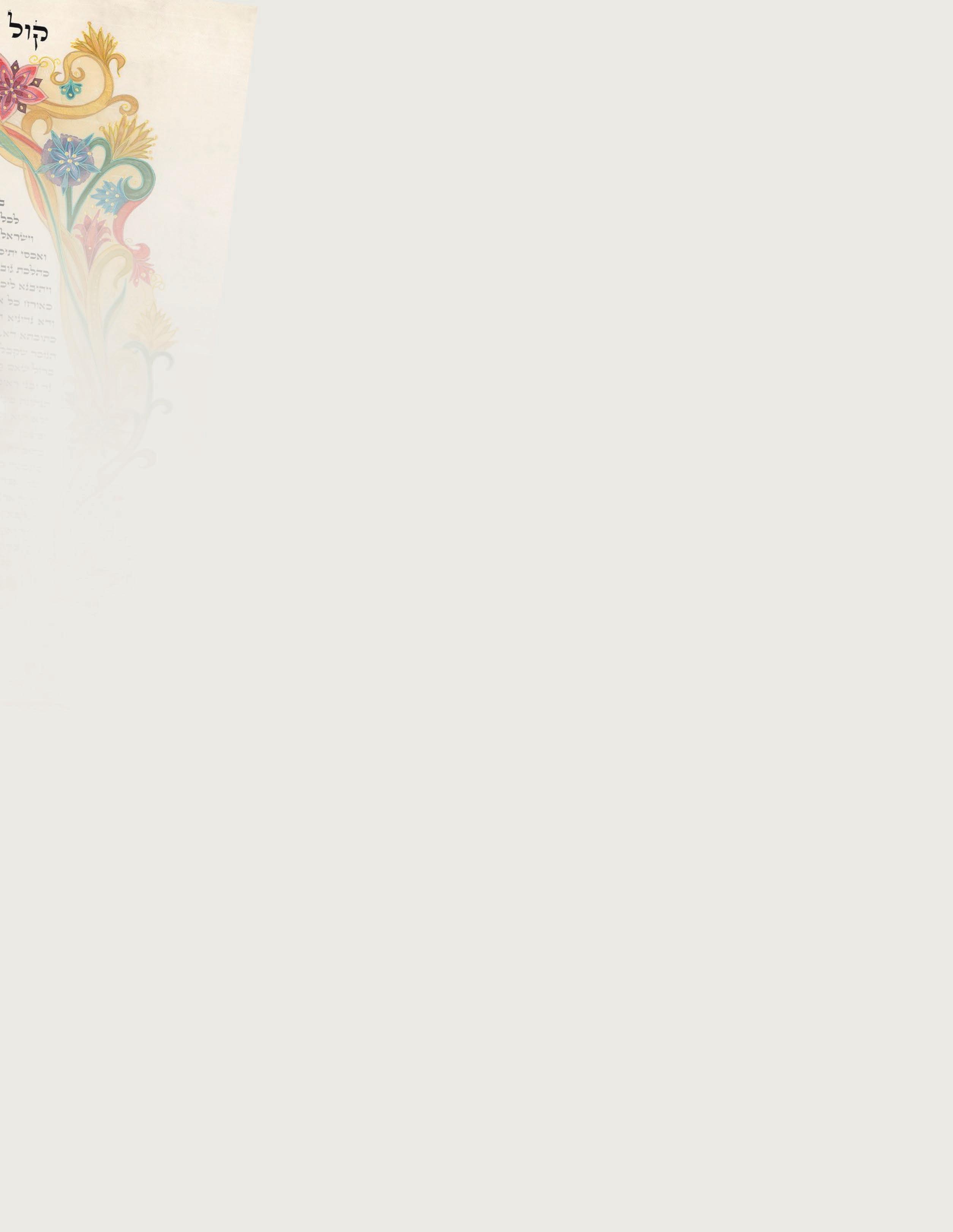
It is best to first ask the people referenced about them being listed on the resume. You (the parents or even the single) can brief them on what is being sought. If possible, try to have a friend call those references to hear what they actually say.
It is recommended to Google your child’s name to see their digital footprint. A single photo or Tweet can give the wrong impression, and it is important to deal with it accordingly.
The Research
When we look into a prospective match for your child and you are told, “I don’t see it” or “it’s not a good idea,” don’t be afraid to ask why. Once you hear these reasons, and if they make sense to you, share them with the Shadchan. And if you are declining a suggestion, give a general reason why. Honesty is an integral part of finding the right person for your child. By sharing this information, the Shadchan will better understand your child and what they are looking for.
Dor Yesharim
Once both parties agree on setting up a first date, the
next step is exchanging Dor Yeshorim test ID numbers to ensure they are compatible regarding genetic disorders. (Needless to say, this initial test should be done before starting the Shidduch process). Once this is confirmed, it is important to follow through on the date as you would any commitment.
The Preparation
They say, dress for the husband/wife you want. This means that the external way you look and dress accurately portrays the internal person you really are. How you dress on a date conveys a visual message about who you believe you are, what you believe you deserve, and where you believe you are going. So be intentional about the visual message you are conveying through the clothing you wear.
The Dates
The purpose of a first date isn’t to decide if you want to marry this person—it’s to determine if you enjoy their company. So pick a casual and quiet place that provides a comfortable conversation environment. Keep it easy, light and fun. The first date should be about 3-4 hours.
Unless there were serious red flags, it is highly recommended to go on a second date even if the first date was not outstanding. Whether you decide to go on
SHIDDUCHIM
Tishrei, 5783 21
a third date or not, take some time to think about what you learned from the date. What went well, and what would you do differently next time? What qualities did this person have that you admired? Did anything happen that did not feel good to you? These are important questions to ask on your dating journey and can lead to an even better understanding of yourself.
The Conversation
Both men and women appreciate a solid, genuine compliment. You can compliment your date on their laugh, sense of humor, or intelligence. Come up with some interesting questions ahead of time, so you’re not drawing a blank and struggling to think of something at a point when the conversation needs a revival.
In addition to the usual get-toknow-you questions, here are some ideas for what to ask:
What’s the last book you read, and what did you think of it?
What’s your favorite gift you’ve ever received?
What’s something you’ve never tried but always wanted to?

What’s your favorite memory with your family?
Do you have any crazy travel stories?
What’s the best piece of advice you’ve ever gotten?
When you feel stressed, how do you relax?
What are you really thankful for right now?
What would your ideal day look like?
Listen intentionally and allow for full answers to be given before respondingit can lead to a wonderful conversation on its own. Don’t ask so many questions that it feels like a job interview or interrogation. Keep it fun and just be curious about the other person.
At the end of the first date, a simple “Thank you for a nice evening” is sufficient.
The Follow-up
If you plan to move forward and continue dating, it is better to keep in communication by phone. So much can get lost in translation via texting and WhatsApp. Unless logistic information is being exchanged, such as time and place of meeting, communication between the couple should be strictly by phone.
The Advice
When in the dating process, it is best to have a very select few people to talk to. The parents, a Mashpia or dating coach, a sibling, and maybe a close friend. When one talks about their dating experiences to too many people, it can get complicated as different people will share their own opinions and thoughts, and not always is that a good thing.
The Ohel
Once a couple has decided to get engaged, it is best to go to the Rebbe’s Ohel and officially announce it as soon as possible. So if you have a clue that an engagement will soon be agreed upon, keep your parents in the loop. Some out-of-town parents may encourage their children to go to the Ohel themselves and only later join them for the L’chaim. If going to the Ohel is delayed, try to keep plans as confidential as possible until it’s officially announced.
The Appreciation
Shadchanos is holy work, and it is a Segulah for the parents of the newly engaged couple to show appreciation to the Shadchan with a monetary gift given to them discreetly at the L’Chaim. There are many who give a heartfelt letter along with the gift expressing their words of appreciation which is something that is very dear to the Shadchan’s heart.
The Emunah
So much Emunah goes into finding a Shidduch. Part of the process is remembering that Hashem is in charge. Every day is one step closer to finding the right match for yourself or your child. Do your part in being proactive and doing everything you can to help your child and Hashem will send the right person at the exact right time. May we celebrate many Simchas!
SHIDDUCHIM 22 COLlive Magazine

PRODUCT OF THE USA • DISTRIBUTED BY ROYAL WINE CORP. • FOR MORE INFO, CALL (718) 384-2400 • WWW.ROYALWINE.COM • PLEASE ENJOY RESPONSIBLY MÉTHODE CHAMPENOISE | SPARKLING CHARDONNAY | RUSSIAN RIVER VALLEY
OF THE YEAR5782

For over 13 years, COLlive has asked our contributing photographers to select a memorable photo from that year. Here are the picks of '82
This drone shot was taken during the like this photo because you can see the 770 in the center, and you can’t miss next to 770 to accommodate all the over the world. I really like the picture the background,

???????? ???????? CATEGORY 24 COLlive MagazinePHOTOS
MENDY
SHALOM BURKIS
My Mashpia once told me to use my imagination to discover Hashem in our world and use it as a lesson. In this photo, the steadiness of the mountains covered in ice symbolizes for me the total commitment to Hashem. Around it, reminds me of the Alter Rebbe’s parable of the “king in the field” during Elul. Hashem is as visible like the livestock and the stones there.
MENDY KRIEF
the month of Tishrei last year, I the entire Crown Heights and the huge tent that was built the guests who come from all picture and the sunrise pouring in background, it makes it a perfect shot.

SHNEUR CHAVIV
This photo was taken on a trip to the 7 Lakes by the Ausangate mountain of the Vilcanota mountain range in the Andes of Peru. Looking at such breathtaking scenery really puts things into perspective. Sometimes, we keep chasing the next peak while forgetting the gifts Hashem gave us for free.
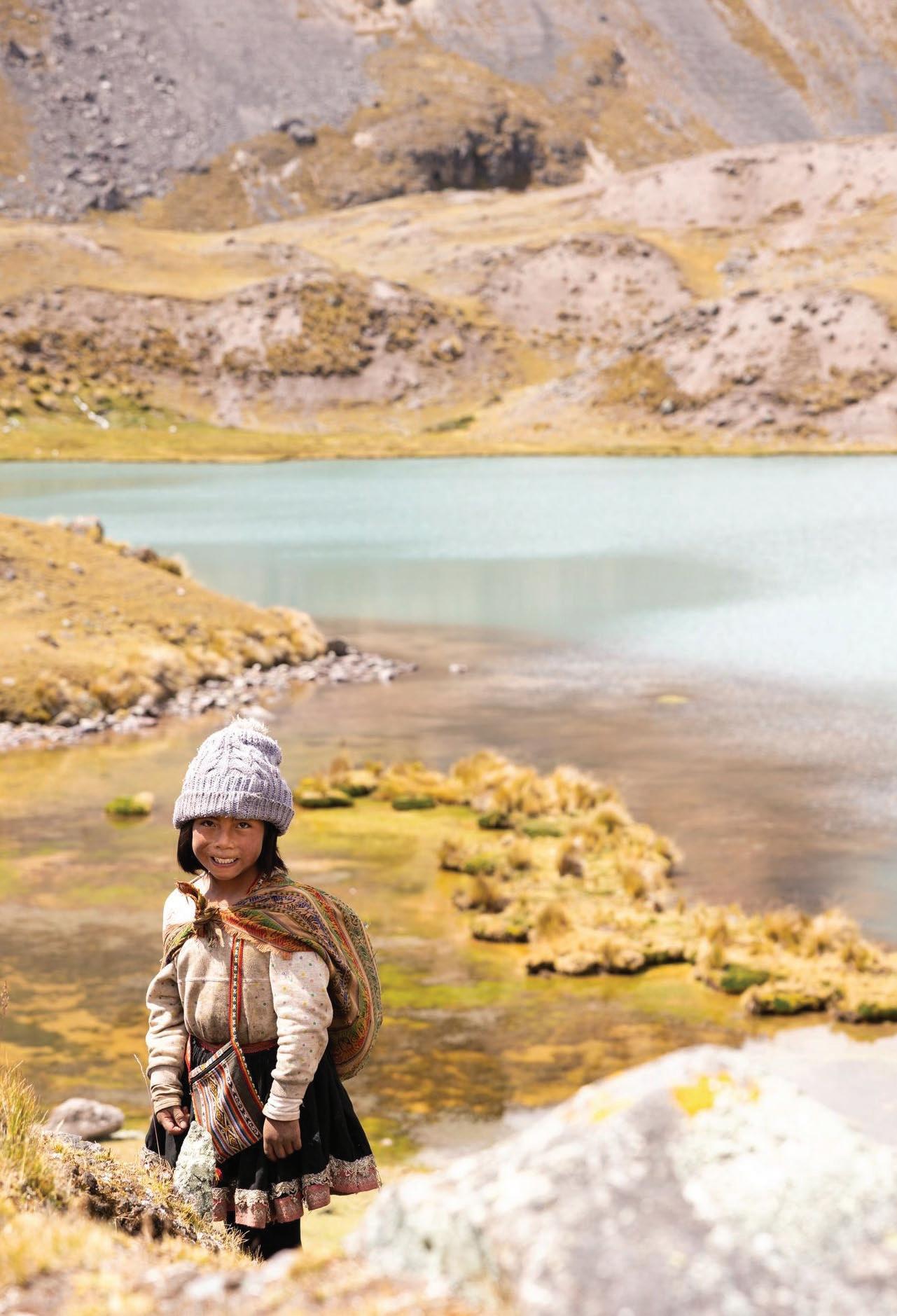
ITZIK ROYTMAN
As every year, a mass Havdalah ceremony was held in New York City’s famed Times Square for Jewish teens, who came from all over the world to spend Shabbos in Crown Heights with CTEEN. It’s exciting to see, time and time again, teens who are getting closer to Judaism, proud of their heritage, and shouting Shema Yisroel proudly in one of the most popular places in the world. I’m sure they will remember these moments forever!

Tishrei, 5783 25
Every vote counts - in Heaven too
By Rabbi Yehuda Ceitlin
This past month, I voted in an election for the first time in my life. It wasn’t for any prior lack of interest in engaging with the tools of democratic government-building — I simply never had the opportunity before now.
I left my home in Montreal, Canada, to study abroad at age 13, and spent my teenage years and early twenties abroad. I lived in the holy land of Israel, Ukraine, and Belgium. I then moved to the United States, where I have lived for the past 15 years, and just a few months ago, I was finally sworn in as an American citizen.
So when I stood in that little raised booth back in August and carefully filled out black circles on my ballot
for the primary election, it was exciting. I felt proud as I walked out with my “I Voted!” sticker. It was a new experience, and a meaningful one, even though several of the candidates on the ballot were running unopposed.

And though voting in an election is a new experience for me, it is not entirely unfamiliar. You see, we choose a leader at the beginning of every Jewish year.
On Rosh Hashanah (September 25-27, 2022), we sound the shofar. That trumpeting sound is intended to be evocative of the fanfares that accompanied the coronation of a secular monarch. We enhance that sound because as we blow the shofar, we “elect” Hashem as
our divine ruler once again.
Hashem is all-powerful. He doesn’t need our validation, but He asks for it. “Recite the verses proclaiming my kingship, so that you will crown me your king.” (Talmud Rosh Hashana 16a). Hashem asks us to persuade Him, as it were, to take on the mantle of rulership. Hashem is running unopposed but still wants our vote.
Hashem doesn’t want to win by a simple majority — or by some contrived gerrymandered system. Hashem wants to be elected unanimously, by a united people, because, as the Rebbe taught, Hashem is truly crowned as King when all recognize His sovereignty; when G dliness is revealed in the world through our actions.
26 COLlive Magazine
When we cast our vote for Hashem on Rosh Hashanah, we also pledge to be held accountable.
In the case of an elected official, being voted into office comes with a mandate from their constituents. When we affirm Hashem as our leader, He gives a mandate to His constituents: A mandate to live better, more ethical, and moral lives; A mandate to make the lives of those around us better.
Hashem says, I want you to involve me in your life and in your decision-making. I
want your vote of confidence as an involved citizen of the universe. I want you to be a part of the process.
And so we gather in the synagogue, where we read verses proclaiming Hashem’s kingship, concluding with the declaration: “G-d, rule over the world entire in Your glory.” And then we sound the shofar, announcing Hashem’s coronation to the world.
This August, I celebrated the importance of participating and helping ensure a fair system of government by doing my part to try and
elect good leaders. This Rosh Hashanah, I will be reminded that ultimately, it is Hashem who gives those leaders and their constituents the wherewithal to make the world a better place and that Hashem wants each and every one of us to be involved citizens.
- Rabbi Yehuda Ceitlin, Editor of COLlive.com and COLlive Magazine, is the outreach director of Chabad Tucson, and Associate Rabbi of Cong. Young Israel of Tucson, Arizona. He coordinates the annual Yarchei Kallah gathering of Chabad Rabbonim and Roshei Yeshiva.

ESSAY
Tishrei, 5783 27
PRESENTED BY JEM

Moments Rebbe with the Moments Rebbe with the 28 COLlive Magazine
Lekach
The Rebbe stands for hours and distributes Lekach to all that request.

 JEM/The Living Archive
JEM/The Living Archive
Tishrei, 5783 29 FLASHBACK

 Hoshanos
The Rebbe circles the Bima holding his Lulav and Esrog
Hoshanos
The Rebbe circles the Bima holding his Lulav and Esrog
30 COLlive Magazine FLASHBACK
Tehillim
At 1am the Rebbe comes in to Shul to say Tehillim

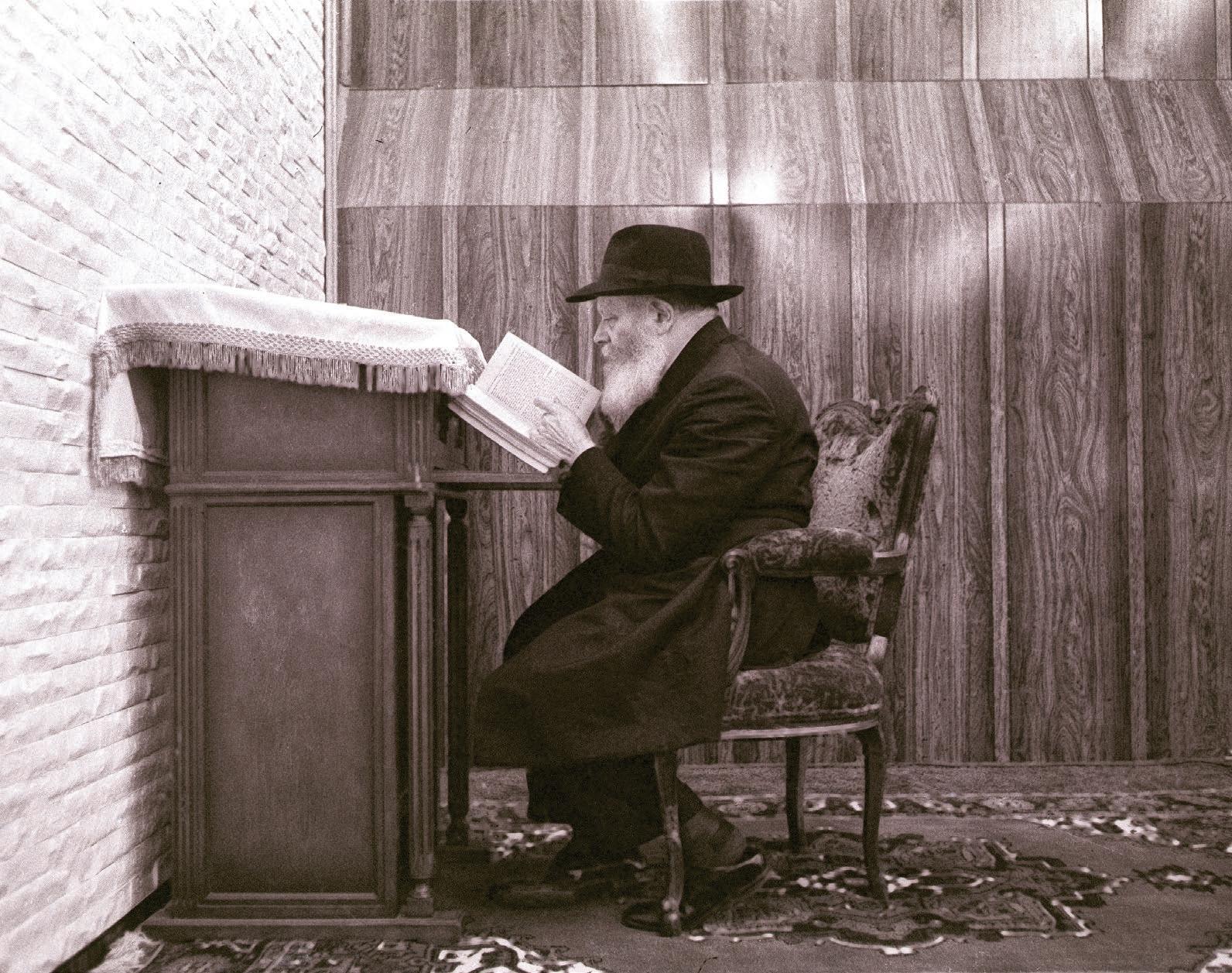
Tishrei, 5783 31 FLASHBACK
The Day Begins...
The Rebbe waves to those standing around as he arrives at 770 in the morning.

 Michtav KlolI
The Rebbe distributes copies of his letter in honor of Yom Tov to those attending a Rally
Michtav KlolI
The Rebbe distributes copies of his letter in honor of Yom Tov to those attending a Rally
32 COLlive Magazine FLASHBACK
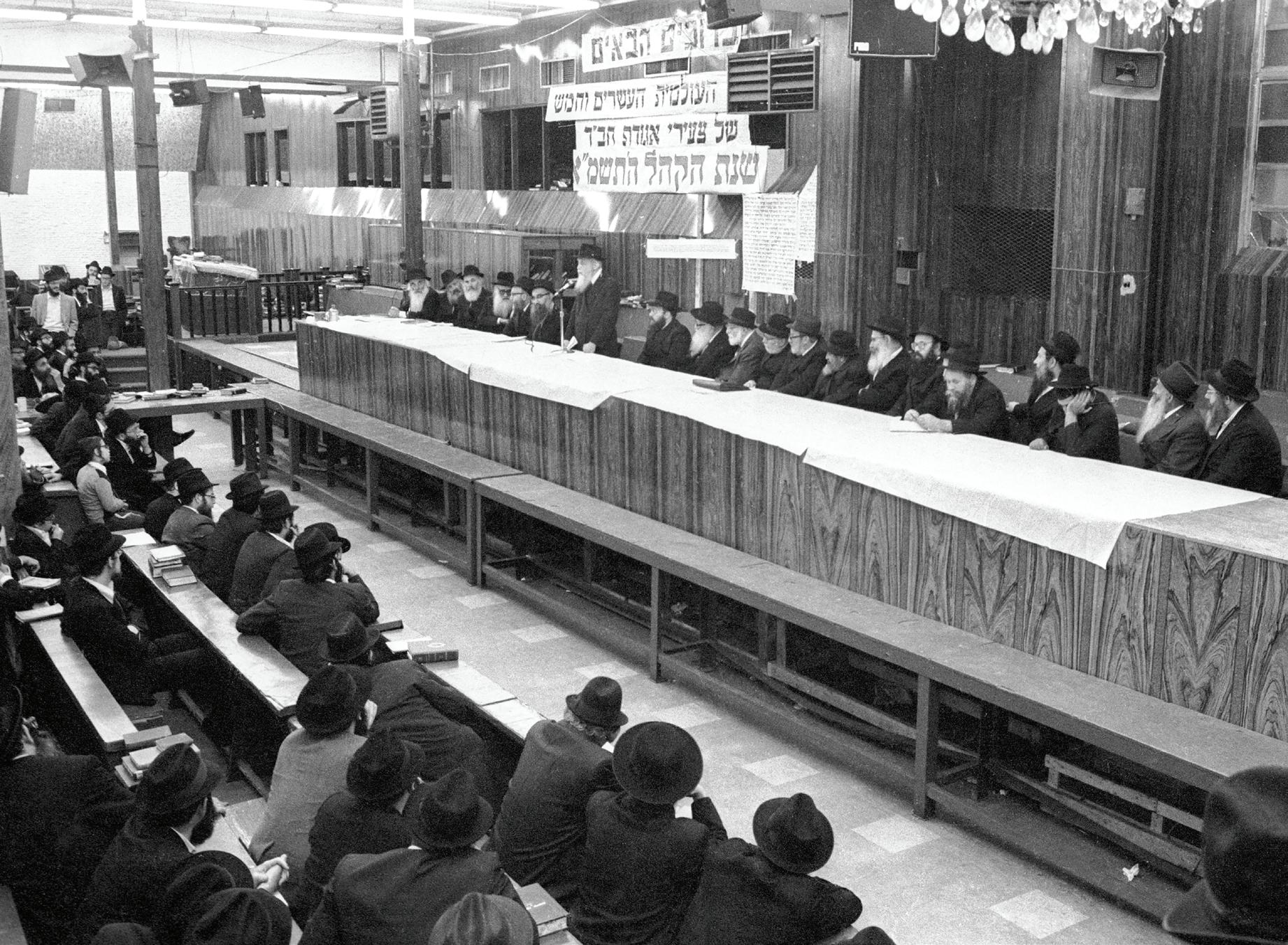

Tishrei, 5783 33 FLASHBACK
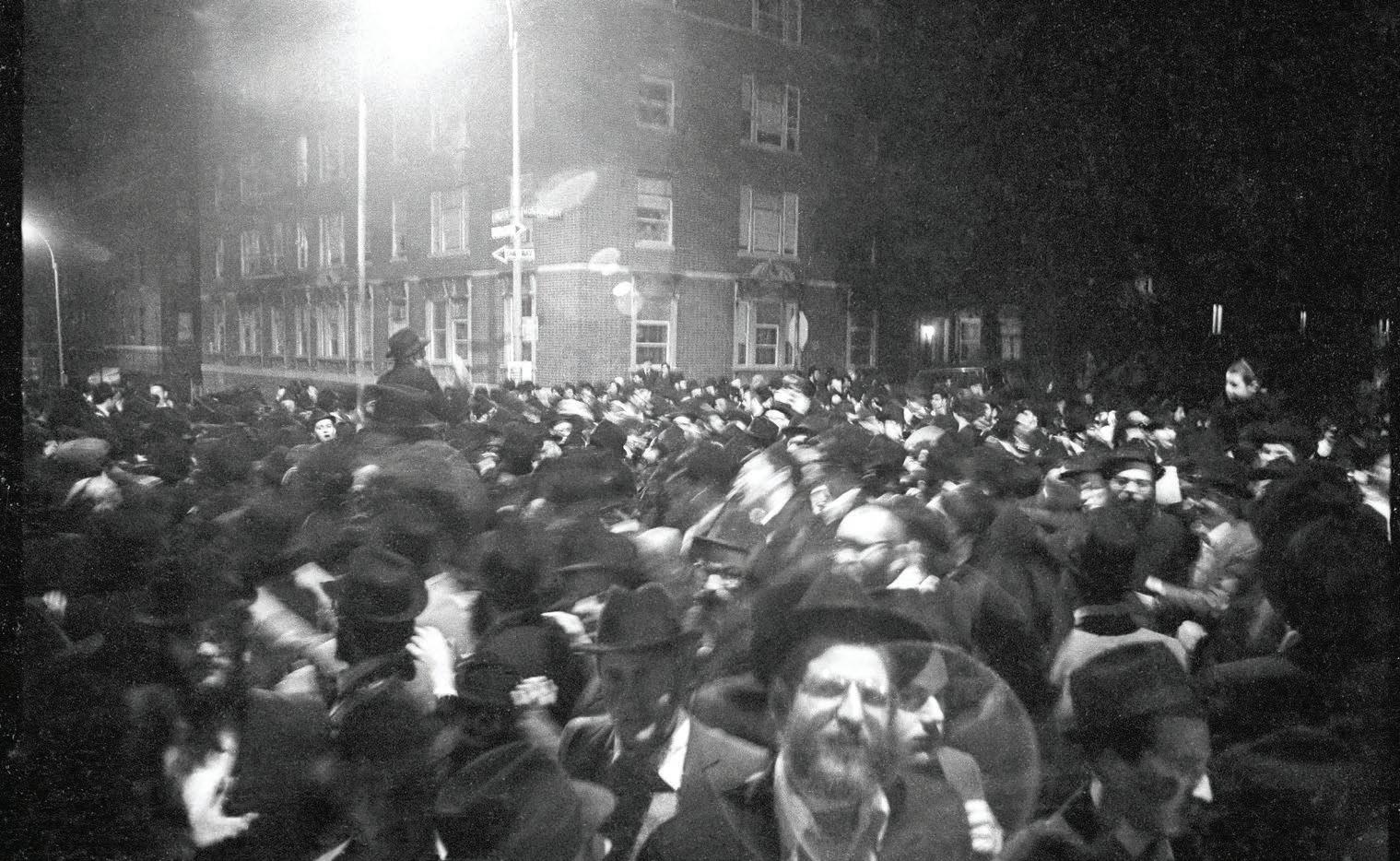
 Simchas beis Hashoeva Joyous dancing on Chol Hamoed Sukkos in the streets of Crown Heights
Simchas beis Hashoeva Joyous dancing on Chol Hamoed Sukkos in the streets of Crown Heights
34 COLlive Magazine FLASHBACK



COPE CLASSES IN PERSON OR VIA ZOOM LIMITED FULL SCHOLARSHIPS AVAILABLE Cope Institute’s Jr. Accounting/Business Essentials: Complete in just 31/2 Months 21 Credits Recommended by the American Council on Education Upon completion enter the CES Accelerated CPA track enables you to sit for the CPA exams. Complete in just 22 Months Pursue a career in accounting or bookkeeping In today’s crowded work force, get the tools you need to start a business or expand your business skills. NEW MEN’S DAY CLASSES BEGIN NOVEMBER 7 I started my business with the skills I learned at A Division of Agudath Israel of America 718-506-0500 EXT. 208 info@copeeducation.com copeeducation.com Text COPE to 718.578.4558
SELICHOS IN LUBAVITCH
The Frierdiker Rebbe’s stirring description of life in the Chassidic township in Russia
Every reader has his favorite passages in Likkutei Dibburim (a selection of the public talks of the sixth Lubavitcher Rebbe, Rabbi Yosef Yitzchak Schneersohn, of blessed memory) — the mood-setting descriptions that resonate within himself, rousing his weary heart and awakening his dormant soul.
For many readers, one of those gems is its description of the otherworldly atmosphere that pervaded the township of Lubavitch in the month of Elul. That description appears in full in the present pamphlet, selected from Chapter 5 of Likkutei Dibburim, a classic whose English translation is scheduled to appear shortly in yet another edition, this time in a new format. Wishing us all a fruitful Elul, as a preparation for a kesivah vachasimah tovah, Sichos In English

36 COLlive Magazine
In the 102 years that Lubavitch was the capital of the Rebbeim of Chabad, the township became the source book for the spiritual lifestyle that Chassidus prompts and for the customs that chassidim practice. This is true of the workaday life of the whole year, but especially so with regard to the festivals.
In Lubavitch, even though the Shabbos preceding the month of Elul — Shabbos Mevarchim — would still be a clear and sunny day, the air felt different. There was a smell of Elul in the air; you could feel the first stirrings of a teshuvahbreeze. Every person there was beginning to grow a little more deliberate, a little more thoughtful, and was allowing his weekday affairs to fade from his memory.
During the two midsummer months from Shavuos until Shabbos Nachamu — except for a certain break during the Three Weeks, which were days of real mourning, the laws of this period being punctiliously observed in all their details — people would sometimes take a little stroll across the marketplace between Minchah and Maariv. No one ever went out for a walk between Pesach and Shavuos, but from then on people took the opportunity of enjoying the pleasant summer weather.
From Shabbos Nachamu onwards, groups would begin to form for study sessions held after Maariv, in the spirit of the verse that says, “Arise, cry out in the night.” By the time Shabbos Mevarchim Elul
came around one could already sense the atmosphere of Elul. Anxiously, people now awaited the first recitation of the chapter of Tehillim that begins, LeDavid: HaShem ori veyish’i — “By David: G-d is my light and my salvation”; eagerly, they awaited the first blast of the shofar that would announce that the gates of the Month of Mercy had been thrown open.
The stamp of Elul could already be detected in the Chassidus that the Rebbe delivered on Shabbos Mevarchim Elul, with its traditional opening phrase, Ani leDodi… “I am my Beloved’s, and my Beloved is mine,’ and the initials of these words constitute the word ‘Elul’”; or with the phrase, Hashamayim kis’i — “Heaven is My throne”; or with the phrase, Re’eh, Anochi nosein lifneichem hayom— “Behold, I set before you this day....”
Every day of Elul was quite unlike every other day of the year. Lying in bed at six o’clock in the morning, you could hear that the first daybreakminyan in the beis midrash had already finished its morning davenen. You could hear the shofar. It woke you up to the fact that the world was now pervaded by Elul. You dress hastily, a trifle dissatisfied with yourself for having somehow slept in so late. Through your mind flits the recollection that this was the period that Moshe Rabbeinu spent on Mt. Sinai. These are propitious days, days in which you can accomplish more than usual. You tell yourself that you really should become a mensch: you cannot let these hours be lost
on sleep.
By the time you arrive at the beis midrash you find quite a crowd already there. Some are reading Tehillim, some are studying Chassidus, some are reading Tikkunei Zohar, while others, whether standing or sitting, are at prayer.
It’s the Shabbos before the first Selichos!
In the entire framework of divine service defined by the teachings of Chabad, a most prominent place is occupied by davenen, that is, avodah shebalev — the service of the heart. In Lubavitch, there were individuals known as baalei avodah, who used to daven for hours on end even on ordinary weekdays throughout the year, but during the month of Elul in its own distinctive manner.
As you entered the anteroom of the minyan you would be struck by the wondrous sight that met your eyes. Everyone you see is in a quiet state of profound concentration, cleaving raptly to his Maker, and neither hearing nor seeing whatever surrounds him. The first has been humming a meditative Chabad melody, and to the strains of that niggun he now reads the words, Baruch gozer umekayeim — “Blessed be He Who decrees and fulfills;” the second is pondering over the words, Chanun verachum — “Gracious and compassionate;” a third is saying, vechulam… meshabchim umefaarim —
ELUL
Tishrei, 5783 37
“And they all... praise and glorify;” a fourth, having arrived at the palpably rich entreaties of Ahavas Olam, breathes out its words one at a time. Nourished by the sap of sound comprehension, these words now sprout forth their meaning with such sweetness, with such a yearning to cleave, with such a sound of supplication, that you feel that every word is raising this worshiper a rung higher. He is growing nearer to his innermost point; he is about to attain his goal.
The motif of supplication that accompanies his reading of the words, Maher vehavei aleinu berachah veshalom — “Hasten, and bring upon us blessing and peace;” the soft quietude of the melody with which he makes his request, vesolicheinu meheirah komemiyus l’artzeinu — “Speedily lead us upright to our Land;” the confident rhythm with which he affirms, ki Keil poel yeshuos Atah — “For You are G-d Who performs acts of deliverance;” the joyful voice with which he expresses his gratitude, vekeiravtanu Malkeinu leshimcha hagadol — “You have brought us near, O our King, to Your great Name”; — all these together give him the strength to say Shema Yisrael. Every day brought you nearer to the Shabbos before Selichos. The Chassidus that was delivered that Shabbos was listened to with a special degree of concentration. On that Friday night, people usually slept less than usual. Quite spontaneously, you woke up early, a little restless, and
you went to the mikveh before dawn.
Arriving there, you found quite a number who had come before you, and all of them seemed to be in a hurry. You could see it on their faces: this Shabbos was different to all others. This was the Shabbos before Selichos.
All kinds of ideas are running around in your own head, too. One thought that suddenly presents itself is a clarion call: Lecha HaShem hatzedakah — “Righteousness belongs to You.” But more insistently than that, you are now reminded of the continuation of that verse: Velanu boshes hapanim— “And we are shamefaced.”
With a contrite heart you immerse in the mikveh, asking yourself meanwhile whether this tevilah is a real immersion of teshuvah, accompanied by remorse over the past and a resolve for the future, or whether it is perhaps (G-d forbid) an instance of tovel, vesheretz beyado — a person who immerses in the mikveh, but meanwhile still grasps a reptile in his hand.
As you passed by the various minyanim — the beis midrash and Binyamin’s shtibel — you could hear large groups of people saying Tehillim.
The way people read their Tehillim on this Shabbos was also different to the way they read Tehillim throughout the year. The same people, to be sure — plain folk who used to get together early every morning to read Tehillim, joined on Shabbos by those whose livelihoods made
them spend their weekdays in the surrounding villages and townships. But they too, view this Shabbos as being different from every other Shabbos. Every one of them is occupied with himself. Emerging from the sounds of their Tehillim you can hear an inner voice that proceeds from the all-embracing chassidisher atmosphere.
Having been at the mikveh you now went off to shul to commit the new maamar to memory. That would take a good few hours. What usually happened was that you would go in for the repetition of the maamar, then resume your memorizing, and daven; at about three o’clock you would eat the Shabbos midday meal.
At the table of my father, the Rebbe, the midday meal of the Shabbos preceding Selichos was much shorter than that of any other Shabbos. Generally speaking, meals in Lubavitch did not occupy much time, except that on occasion they would develop into a farbrengen, when a story might be told or a vort repeated.
The Shabbos meals in Lubavitch, then, followed a certain pattern. Indeed, Lubavitch had a pattern and an order in everything it did, an order that was defined by the fixed limitations of time and place. Thus it was that the midday meal of the Shabbos preceding Selichos was brief, for the scent of the imminent Days of Awe was all-pervasive.
ELUL
38 COLlive Magazine

6 Stories told by Reb Mendel
Precious Chassidic Tales about Tishrei in Russia and America
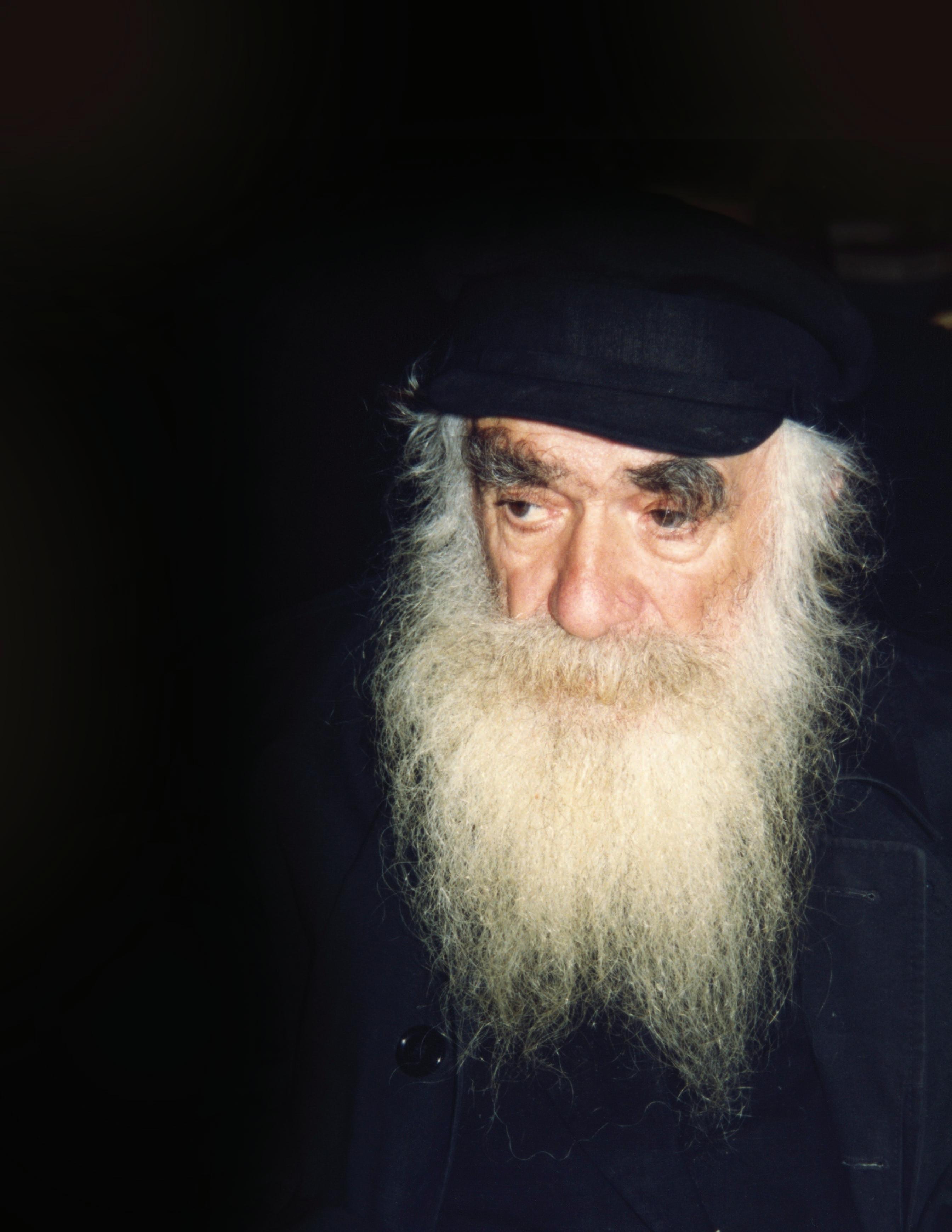
40 COLlive Magazine
Reb Mendel Futerfas was one of the most iconic Chassidim of our generation. Until today, his stories are told and lessons shared. Presented here is an excerpt of the forthcoming book My Gulag Life by Hasidic Archives, the very first attempt at a comprehensive collection of stories about his life including biographical sketches and essays by his family.
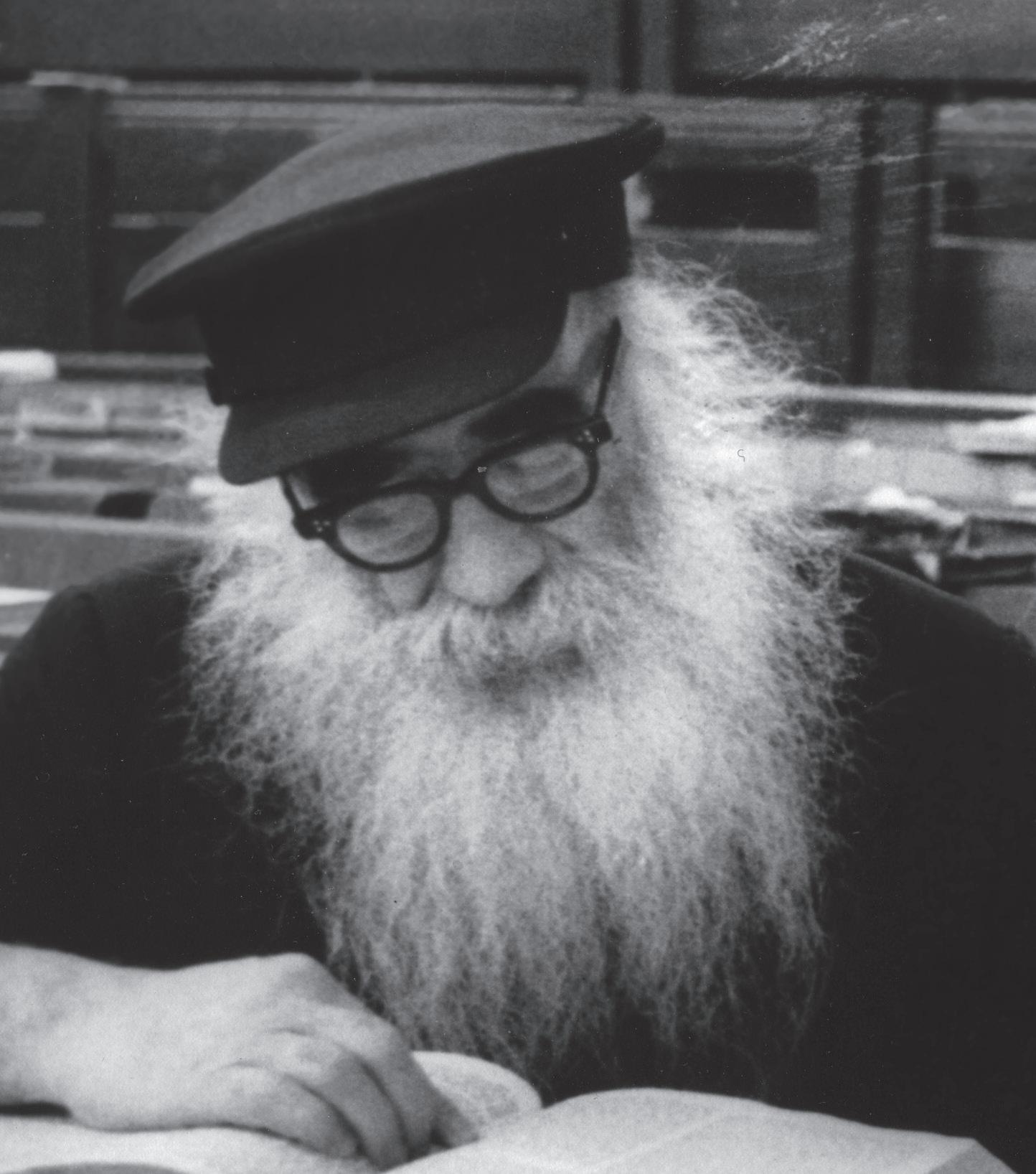
wait for him to arrive. The Rebbe would tell me what he wanted.
The Rebbe Rashab came in, immediately took note of me, and called me over. During the priestly blessing—when children typically stand under their father’s prayer shawl—I should stand with him, he said, under his tallis.
2. DISPUTED VOLUME
One year, in the early 1920s, I procured enough money for a train ticket to Leningrad
to spend the Yomim Noraim (High Holidays) with the Rebbe Rayatz. This was no small feat: many Chasidim carefully saved money for months before the holidays and still were unsuccessful.
R’ Tzemach Gurevitch, however, preferred an easier route. He approached me with a rare volume of the Rebbe Rashab’s Chasidic discourses, offering it in exchange for my ticket. I agreed.
I treasured the book Tzemach gave me and learned from it regularly. Years later, Tzemach’s father, Reb Yitzchak, also known as “Itche der
1. UNDER THE REBBE’S WING
From the time I was seven years old, I traveled to Lubavitch each year to spend the High Holidays with the Rebbe Rashab.
On the morning of Rosh Hashanah 1919, the Rebbe Rashab’s son, Rabbi Yosef Yitzchak Schneersohn, approached me and said, “My father is looking for you.”
Rabbi Yosef Yitzchak told me to stand next to his father’s spot in the synagogue and
TISHREI
Tishrei, 5783 41
Masmid (the diligent),” saw me studying the book and recognized it as his own. I told him it was mine: I had purchased it from his son.
Reb Yitzchak was confused but offered to reimburse me. I told him that the book was not for sale. He offered double, but I held my ground.
Frustrated, he demanded to know why I would not return something that belonged to him, even for payment.
I explained that I had paid for the volume with something irreplaceable: “I missed Rosh Hashanah with the Rebbe. Even if you pay me four times the cost of the ticket, the Rebbe is gone, and this time cannot be recovered. All the money in the world cannot pay for this book.”
Hearing this, Reb Yitzchak told me the volume was mine to keep.
3. WHAT NOW?
When I went into hiding from the communists, I lodged at the home of a widow with a young child. One evening she placed her son in a bath, not realizing that the water was much too hot. The child was badly burned and died several days later.
The woman was beside herself. She wept uncontrollably, saying over and over, “What did I do? What did I do?”
After a long time, she calmed slightly and began to whimper, “What do I do now? What do I do now?”
Every time I feel the need to return to the correct spiritual path, I sorrowfully say, “What did I do? What did I do?”
And after I calm down somewhat, I think, “What do I do now? What do I do now?”
Police Escort to Prison, and Tashlich
By Dovid Zaklikowski
The week before Rosh Hashanah of 1964, Reb Mendel traveled to New York to spend his first High Holidays in freedom with the Rebbe. After Shabbos ended, before the Selichos prayers, Reb Mendel was invited to the Rebbe’s office. Generally, a Chosid prepares at length for a private audience, but he had no time. He quickly composed himself and entered the Rebbe’s room. The Rebbe was waiting with a bottle of vodka, and told him, “Guests—Russian Jews—have arrived.” He instructed Reb Mendel to invite them to a Chasidic gathering and to say l’chaim with them.
Many of the new immigrants were friends Reb Mendel had not seen in many years. As the guests arrived, Reb Mendel stood outside Lubavitch Headquarters at 770 Eastern Parkway, kissing and hugging every new arrival. The moment marked a culmination of their experiences in Russia. At last they were free to celebrate alongside the Rebbe.
When he embraced someone who was not from the Soviet Union, the man was taken aback. “I am not from Russia; I am from Britain,” he told Reb Mendel. Reb Mendel turned to the crowd that had gathered and said, “If he is from England, you don’t have to love him?”
For the Tashlich prayer on Rosh Hashanah, the community walked up Eastern Parkway to the Brooklyn Botanical Gardens with a police escort. “Last year, I was also accompanied by police,” Reb Mendel marveled. “There they tracked my every move, but today they are here to protect me.”
My Gulag Life is available for order on HasidicArchives.com.
TISHREI
42 COLlive Magazine
4. SEEKING BELIEVERS
One Yom Kippur, as I recited the prayer “And All Believe,” a painful thought entered my mind.
Is it in fact true that all believe? Does that burly, bourgeois man who sleeps on the adjacent cot truly believe?
I quickly pushed these thoughts from my mind, telling myself, How can you think thoughts that are in opposition to the words inscribed in a prayerbook? If they were written, they are surely true.
A week later, my cellmate approached me. “Is it true that you are Jewish?” he asked. Without waiting for an answer, he said, “I am also Jewish, and I also prayed on Yom Kippur.”
5. TEARS OF AN IRON SOUL
Reb Chatche Feigin, secretary to the sixth Lubavitcher Rebbe, was a tough character known for concealing his emotions. On two occasions, however, he wept openly.

The first took place shortly after he was married. He had started a business to
support his fledgling family, but the Rebbe Rayatz asked him to become a mentor in a Lubavitch yeshivah instead. When the Rebbe saw that Reb Chatche did not want to give up his enterprise, he said, “Nu, we will push it off to another time.”
The following Yom Kippur, when the Rebbe was reciting the haftorah, Reb Chatche stood close by. The Rebbe loudly emphasized the verse “From before G-d he flees.”
Reb Chatche understood that the Rebbe was referring to him, and he began to cry. The next day he quit his business and went to work in the yeshivah.
TISHREI
Tishrei, 5783 43
The second time occurred after Reb Chatche had been appointed as the Rebbe’s personal aide. The position took up most of Reb Chatche’s day, leaving little time for Torah study and prayer. This pained him greatly, and he asked that the Rebbe give him time for his own spiritual needs.
“In Gluboke,” the Rebbe responded, “there is need for a new yeshivah.”
Reb Chatche understood that the Rebbe was not accepting his complaint, and he began to cry. The Rebbe began to cry along with him, and said, “I have the same issue, but
6. LONELY THOUGHTS
When I came to New York to be with the Rebbe for the first time, I asked for a private audience, but the Rebbe refused without providing a reason.

Only after a week in New York was I informed that my sister Golda Shemtov had passed away in London several weeks earlier. My family did not want me to endure seven days of mourning and had therefore withheld the news from me.
Had the Rebbe admitted me to an audience, I would have requested a blessing for my sister. The Rebbe did not want to have to break the news to me and thus he delayed our audience.
You might ask what went through my mind when I was refused an audience.
It is simple: I knew I was such a simpleton that the Rebbe could not look at me.
I concluded that if I didn’t return to G-d’s ways, the Rebbe would not agree to see me. So during that week, I was occupied with doing teshuvah.
should I just sit by with folded arms?”
TISHREI 44 COLlive Magazine










Personalized Attention. Competitive Honors Programs. Career-oriented Internships. Academic Excellence and Torah Values. At Touro’s Lander College for Women, we are dedicated to helping you reach your goals. We offer more than 20 majors, an Israel Option, an array of flex and online options, as well as direct pathways to our graduate and professional schools. Academic scholarships and need-based financial aid are available. Learn more, do more, achieve more at Touro’s Lander College for Women. There’s More for You at Touro’s Lander College for Women Register for open house at lcw.touro.edu/openhouse Marian Stoltz-Loike, Ph.D, Dean RSVP for open house and for more info: Contact Sarah Klugmann at 212.520.4263 or sarah.klugmann@touro.edu OPEN HOUSE OCT. 30 1:30-4:30pm
A march to remember
The Tahalucha Campaign
By Libby Herz
“My father took us on tahalucha every year before my mother passed away,” says Mrs. Shaindy Jacobson. She was only seven years old when she lost her mother, Mrs. Rasha Gansburg, to leukemia. Six days later, it was Simchas Torah. “The Rebbe wants us to go on tahalucha,” her father said, “and this Simchas Torah isn’t going to be any different. We wore our best yom tov dresses with bows in our hair.”
Tahalucha was instituted by the Rebbe to encourage chassidim to relate, share chassidus, and bring simchah to other yidden. The practice was so precious to the Rebbe that days after his wife’s passing, Rabbi Tzvi Hirsch Gansbourg held the Torah close and danced with palpable joy in that East Flatbush shul.
The Beginning
The first tahalucha was on Shavuot 5716/1955 when Tzach arranged for baalei batim and youngelite to walk to shuls in New York in order to teach chassidus and add simcha.
“Tahalucha was a very cherished inyan by the Rebbe,” says Rabbi Michoel Seligson. The day after the first tahalucha, the Rebbe farbrenged and said, “Whoever went on tahalucha should say
l’chaim.” After the chassidim said a l’chaim, the Rebbe added, “I did not go, but I envy those that went. Because I also wanted to go, I will say a l’chaim.”

Tahalucha takes place on the seventh day of Pesach, the first day of Shavuos, and on Shemini Atzeres. Originally, chassidim walked to Williamsburg shuls on Pesach, and Boro Park shuls on Shavuos. But Simchas Torah
was different; chassidim would not target any specific area. Instead, they spread out all over New York with the purpose of dancing and bringing simcha to other Jews.
When he was thirteen years old, Rabbi Menachem Mendel Feller realized tahalucha’s great impact. “In the late 80’s we would go to Flatbush or Boro Park and stay until they did the second or third
 Photo: Levi Freiden, JEM
Photo: Levi Freiden, JEM
46 COLlive Magazine
hakafah. I went to one of the basement shtiblach with ten other bochurim. In that shtible, they were planning to just walk around the bimah seven times as if it were a ritual. There would be absolutely no dancing, no singing, zilch, nada. They planned to just go home right after. We were ten bochurim, and we started dancing. We really got the place up and going. The people understood that we needed simcha here.”

Midnight Tahalucha
Shemini Atzeres farbrengens where an anomaly because they were very empty, and only attended by very young children and elderly men who were unable to walk. Young men who did not go on tahalucha refused to make an appearance at 770 so that the Rebbe would not see they had stayed behind. The farbrengens were held from nine p.m. until 12:30 a.m., with hakafos beginning once men started trickling back at midnight.
It was considered an act of mesiras nefesh to miss those farbrengens, and the Rebbe addressed this during a 5730 farbrengen, saying, “(Tahalucha) involves the toiling of the flesh and toiling of the soul. Toiling of the flesh - the far walk; toiling of the soul - since they are temporarily missing the words of Torah and inspiration that are being said.”
Rabbi Shmuel Butman recalls the Rebbe farbrenging until twelve a.m. before asking, “are those who went to Rabbi Telushkin’s shul back yet?” Once that group returned, the Rebbe said a l’chaim.
As 770 gradually filled up, the Rebbe repeatedly asked if
the chassidim were back. “He asked if my father was back,” says Rabbi Feller, “because he went to the furthest placeSheepshead Bay.” Once Rabbi Moshe Feller and his group returned, the Rebbe ended the farbrengen, and hakafos began.
Pesach and Shavuos
“Since 1952, bochurim and young men were sent every shabbos to shuls to ‘chazer’
- review chassidus, to say a maamar or a sicha,” recalls Rabbi Butman. “It was for that purpose that Likkutei Sichos was started. It was originally called Sichos Lachzor B’batei Knesios. The Rebbe wanted to give the chassidim material to chazer in shuls.”
The Rebbe would edit the sichos, and on Pesach and Shavuos tahaluchos, men marched to Jewish neighborhoods to deliver a sicha for various other congregations.
In a sicha related to tahalucha, the Rebbe praised chassidim for walking to remote shuls and connecting and learning with mispallelim. He compared this with the Shalosh Regalim when yidden left their homes before Pesach, Sukkos, and Shavuos, and walked to Yerushalayim. The journey took weeks, and even months. According to the Chida, a malach was created with each new step, with each one symbolizing life’s meaningful journey.
The Baal Shem Tov also teaches that a person lost in the forest or desert is lost for the purpose of purifying forsaken sparks. Similarly, the Rebbe explains, we elevate birurim and create malachim with each step we take. The Rebbe pointed out
that a malach is created with each step of the lengthy walk to distant shuls, and the mere act of walking on tahalucha takes a person to the highest levels of Elokus.
Send Out the Troops
In later years, the Rebbe increased the attention given to the men going on tahalucha, and he began seeing them off. “Throughout my teenage and young married years, and until Chof Zayin Adar, it was a big part of our lives,” says Mrs. Jacobson. “We never missed it. The men would go to 770 and leave from there. We went to see the big parade. We stood on the island of Eastern Parkway and positioned ourselves for a good spot because everyone came to see the Rebbe.”
“It was one of the very beautiful sights we would see. We stood across the street on the Eastern Parkway island as men marched on the service lane or the sidewalk, four or five people abreast. There were fathers of very young kids, teenagers, married men, and old men. The Rebbe stood on the steps and watched every single person that would pass by.
“They sang Napoleon’s March, and the Rebbe would encourage the singing with his hands. The more he did that, the more they would sing; it didn’t stop. They kept singing for blocks. They went out like troops under the watchful eye of the Rebbe. We would watch and never leave until the Rebbe would see the last straggler. It was a very uplifting experience.”
A police escort stood at the beginning of the parade, and
MIVTZOIM Tishrei, 5783 47
as the last men left, the Rebbe would thank the police officers who stood waiting until the end.
Young and Old
“What was incredibly moving,” says Mrs. Jacobson, “was you had every kind of chassid who was able to walk. People who were really old or sick and no longer able to walk would go to other shuls including 770 to chazer chassidus so that they could fulfill what the Rebbe wanted. Some could barely hobble.”
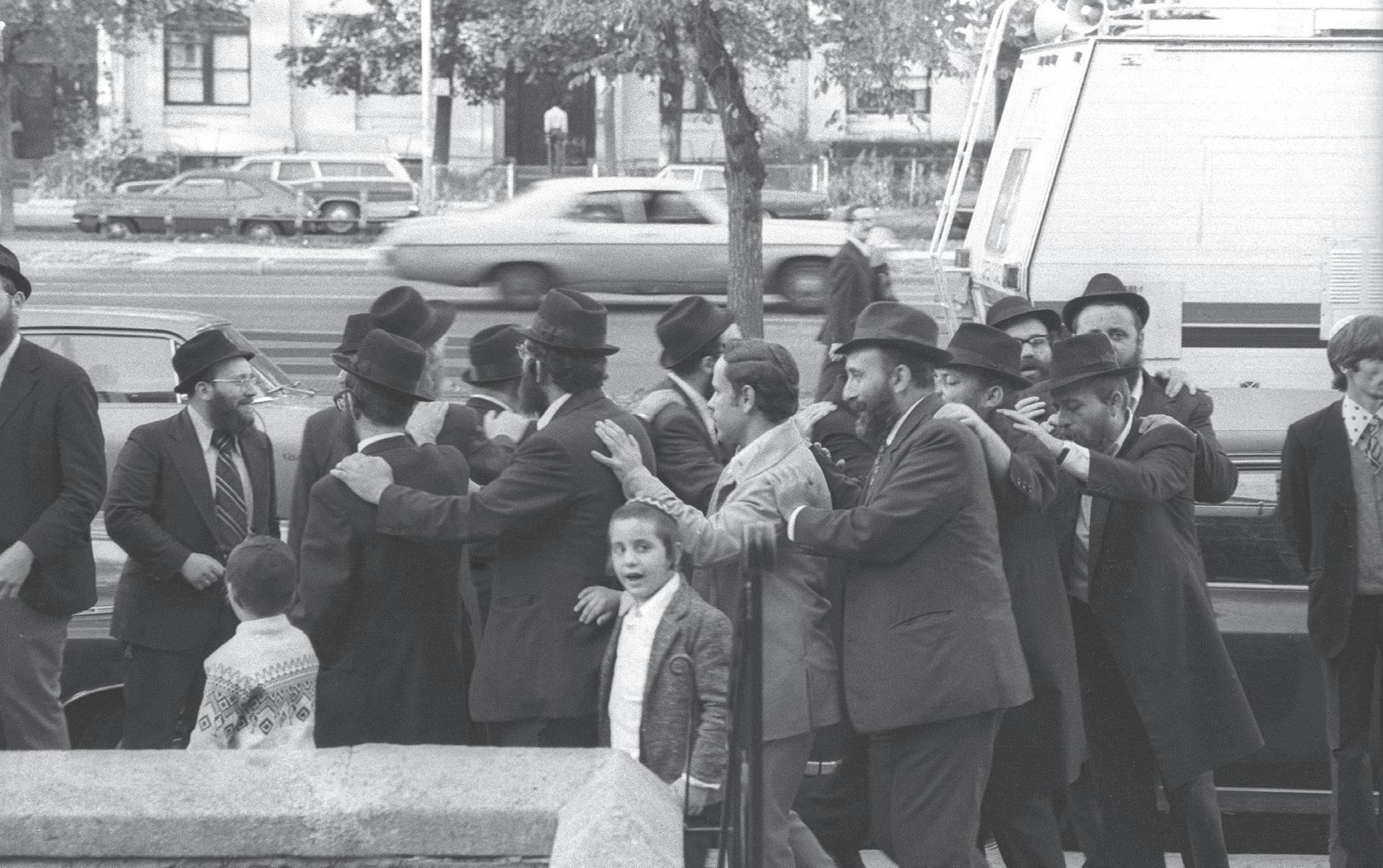
Fathers took their young children in tow. “We were tag-alongs,” she recalls. “Our father would haul us to East Flatbush on Shemini Atzeres night. As a girl I thought it was miles and miles away. But we were part of it and we were very, very proud! We made it take longer, but in
retrospect I realize that it was for chinuch. We learned about having Ahavas Yisroel and caring for other Jews.”
The distance and the weather did not stop chassidim from fulfilling their holy mission, and Tahalucha went on despite all weather conditions - be it scorching heat, thrashing rains, or howling winds. Men returned home with the soles of their shoes whittled to a paper-thin surface, their kapotas drenched in rain water, with puddles forming around their feet.
Over time, chassidim branched out to more destinations including Brownsville, Howard Beach, Brighton Beach, Manhattan, Park Slope, and many other Jewish communities. In certain neighborhoods, people would come out and offer chassidim food and drinks. But some

areas were less than welcoming. Since 1977, for example, chassidim have stopped visiting Williamsburg.
Once, the Rebbe waited for hours for a certain kvutza to return, asking, “How long does it take to get back from Boro Park?” It happened that a group of Italians had started a fight with them, and it took a few hours for the men to escape and make it back to 770.
Altz Mit a Seder
Tahalucha groups were carefully thought out. Coordinators from Tzach reached out to shuls in advance, asking about the best time to arrive. “It was done in an organized fashion,” Rabbi Butman recalls. “The shuls were happy to hear from the Rebbe and have people help them sing and dance.”
Photo: Levi Freiden, JEM
MIVTZOIM 48 COLlive Magazine
A list stating the names of the men in each group, their leader, where they would be headed to, and directions, was drawn up and posted in 770.
Before Pesach and Shavuos, one man from each group prepared a speech that was based on a sicha. He would speak before the shul, and the rest of the men would sit in the Shul and listen.
After Yom Tov was over, the mesadrim (organizers) wrote up a duch (report) and sent it to the Rebbe. The duch included details including the names of the men and bochurim who went, their destination, what they spoke about, and facts about the shul.
Rabbi Seligson recalls that one bochur once visited a shul, but he did not get a chance to speak. “Can he still say a l’chaim?” the men asked the Rebbe later.
The Rebbe answered that it is good when a person goes on tahalucha and speaks, but if he doesn’t get a chance to share his prepared Torah, it is called a Torah drasha; the Torah considers it as if he has spoken. Therefore, the chassid should certainly say a l’chaim.
Another time, a chossid was asked not to speak at a particular shul, so the mesadrim wrote to the Rebbe, “holach v’lo chazar’,’ meaning “he went, but didn’t review (a dvar Torah).” Chazar can also mean ‘return,’ and the Rebbe quipped, “If he didn’t return, where is he now?”
The Effect of Tahalucha
“The Rebbe cherished those tahaluchos,” says Rabbi Shmuel Butman. “The Rebbe said that
he cannot stop those who don’t adhere to the takona of drinking mashke within limits, but he can stop them from going on tahalucha because talalucha is his initiative.”
The Rebbe’s innovation brought chassidus to the masses. “Take a shul that has a small group of people,” says Rabbi Feller, “Then, add an extra fifteen or twenty people. You sing while people are davening, and after davening you do a Chasidic dance. It increases simcha.”
Tahalucha also benefits each of the people who walk to the shuls. “We always loved going,” Mrs. Jacobson says. “It was exciting. The kids got goody bags, we got flags. There was no such treats in 770 back then.”
The year her mother passed away, Mrs. Jacobson was particularly relieved to join her father as he danced around the bimah. “It made things feel normal. We had not yet sat shiva because we needed to wait until yom tov was over,” she says.
After the dancing in East Flatbush was over on that singular Simchas Torah, Rabbi Gansbourg dropped his children off with their grandmother, and hurried to the farbrengen at 770.

It was customary for Rabbi Gansbourg to initiate the singing of niggunim, and this time was no different.The Rebbe turned to him and asked him to start a niggun. With fragility, the widower sang: “Mi vadiom nye patonyem, ee v’agniom nye s’gorim - We in water will not drown, and in fire will not burn.” The crowd was silent, watching the Rebbe stare intensely at the bereft chossid.
Then, the Rebbe stood up with a force so strong that his chair nearly tipped over.
Rabbi Mendel Jacobson, Rabbi Gansbourg’s grandson, describes the scene: “The Rebbe began dancing in his place, rocking up and down, swaying back and forth, with incredible intensity and passion. Witnesses say that in all the years the Rebbe never danced – never before and never after –quite like that.”
The Rebbe swung his arms, and waves of chassidim joined in, “We in water will not drown, and in fire will not burn; we in water will not drown, and in fire will not burn.” The singing grew louder, faster, and more powerful. Then, the men danced, intensity and joy coursing through them.
Years later, a young man contacted Tzivos Hashem, offering to sponsor a children’s program for Simchas Torah. He was interested uniquely in Simchas Torah, because when he was fourteen years-old, he had witnessed ‘the happiest man in the world’ dancing around the bimah, a Torah held close to his heart. He recalled the chossid’s children dancing around him. They all wore beautiful yom tov clothing and the girls wore matching bows. They held goody bags and waved flags in that East Flatbush shtiebel.
Only later did the boy discover that the man was Rabbi Tzvi Hirsch Gansbourg who had lost his wife to a devastating illness six days earlier. The chassid was able to put aside his personal devastation, and dance with a heart so full that he appeared to be the happiest man in the world. Such is the power of tahalucha.
MIVTZOIM Tishrei, 5783 49
How could
I sleep?
The determination of Rebbetzin Shula Kazen OBM to spend Simchas Torah with the Rebbe
Rebbetzin Shula Kazen, of blessed memory, steadfastly stood up for Yiddishkeit behind the Iron Curtain, with her parents, with her husband Rabbi Zalman Kazen, and then as a legendary Shlucha, serving as an educator and community leader in Cleveland, Ohio, for almost 60 years.
She shared the following memories of Tishrei in New York with her daughter Mrs. Henya Laine of Crown Heights. It is an excerpt from the forthcoming book, The Queen of Cleveland, available for pre-order on HasidicArchives.com:
Kazen-HL-146: Rabbi Zalman and Rebbetzin Shula Kazen in the early 1950’s.
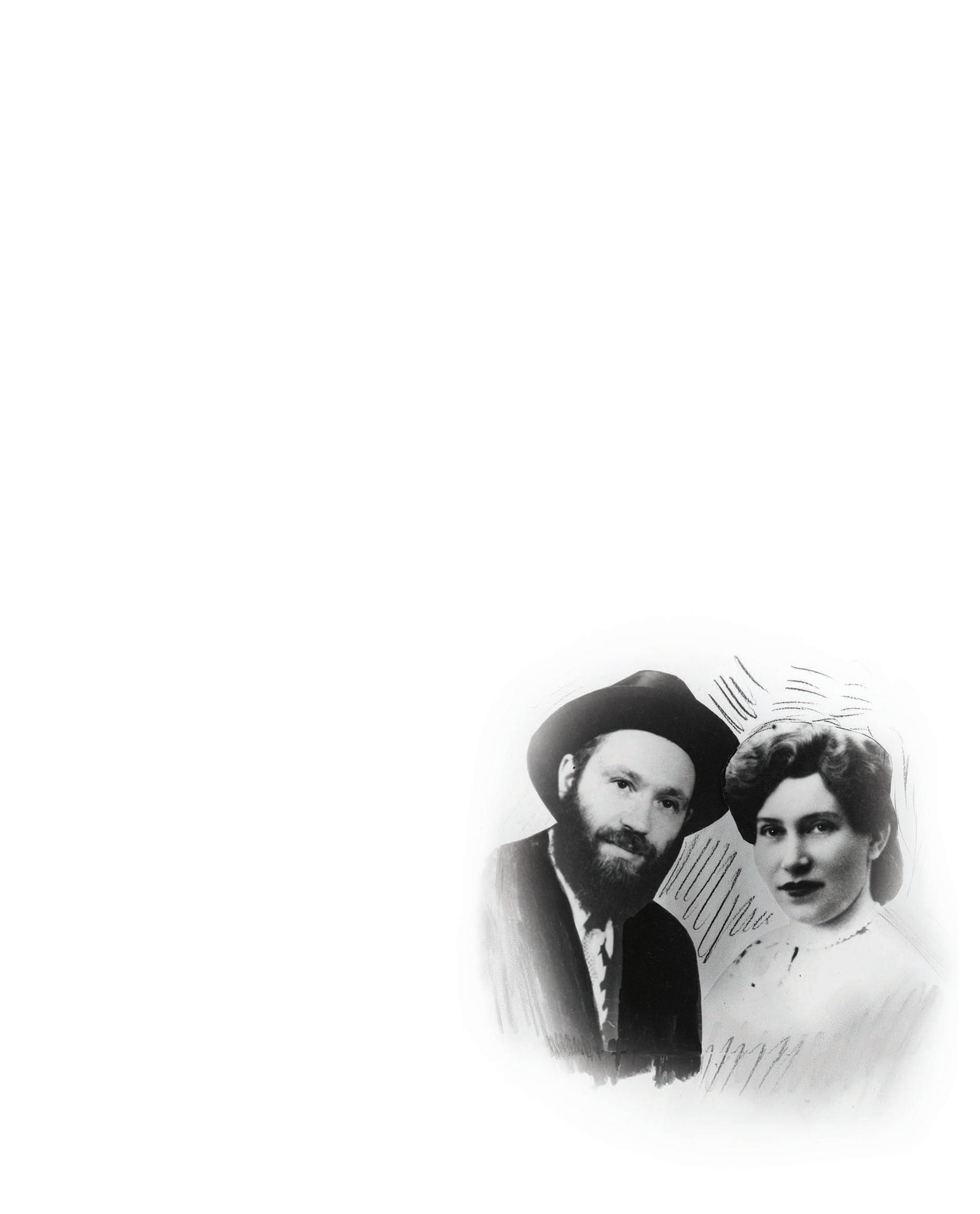
50 COLlive Magazine
In 1952, having escaped Communist Russia and spent five years in Paris, we finally received our long-awaited visas to the United States. With strict immigration quotas in place, the U.S. only granted visas when an affidavit of support was received from an American citizen or sponsoring organization.
We bought tickets to travel to New York by ship, but shortly before our scheduled departure, our newborn daughter, Rochel, became very ill. We tried to bring a doctor to the chateau without success. To ease her cough, I boiled pots of water to allow steam to rise near her crib. After a few days, a nurse agreed to visit her, and she gave Rochel an antibiotic injection, assuring us it would heal her quickly. Instead, Rochel’s skin at the injection site became seriously infected. She cried day and night, often in Zalman’s arms. Eventually, a doctor came to see her, and she started improving soon after. But by the time she was well enough to travel, we had missed our boat.
Instead, the Hebrew Immigrant Aid Society (HIAS) arranged for our family to fly to New York in January 1953. The plane, full of Lubavitcher families, was delayed, so we lodged in a hotel overnight—the men used the opportunity to hold a farbrengen—and we flew the next day. Flying was a miraculous experience for us. Instead of a week or two in a boat packed with refugees, we reached New York in hours.
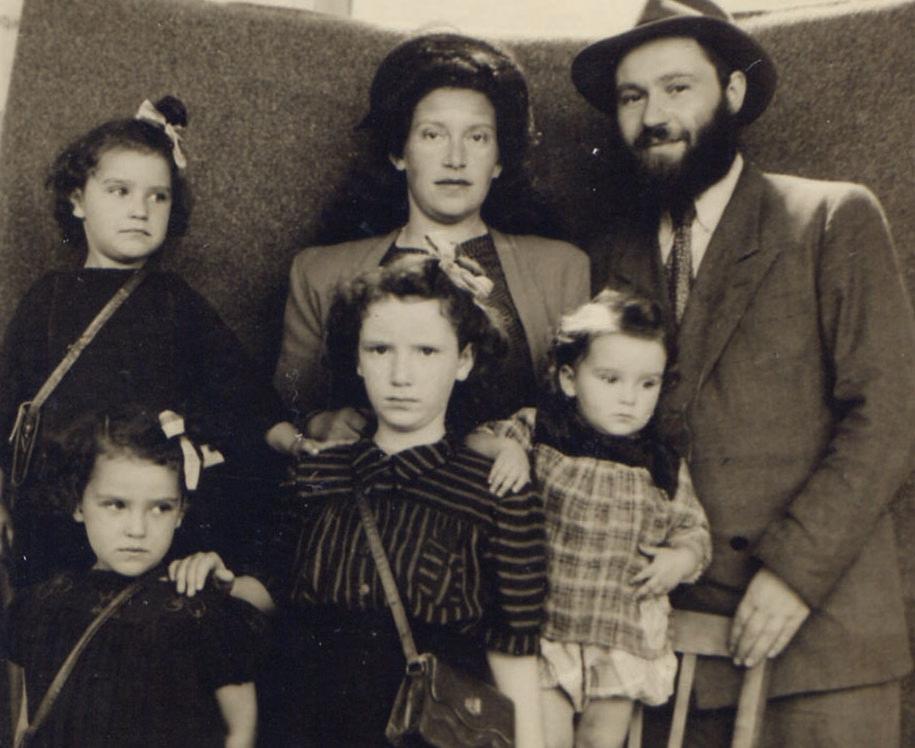
Fortunately for us, since we had arrived via airplane, we did not need to be processed at Ellis Island.
From the airport, we were taken to a hotel in Manhattan, where HIAS arranged for us to stay until they found a Jewish community that would accept our large family. Manhattan was so unlike any place we had ever experienced. It was crowded and noisy, and people rushed by, speaking English, a language we did not understand. We had neither the energy nor the skills to deal with it, so we stayed indoors for many weeks. The small room we received on the fifth floor had a single, large bed that dropped from the wall. One evening, a visitor knocked at our door. It was R’ Sholom Levertov, a fellow Lubavitcher who had taught together with Zalman at one of the
underground yeshivas. He had inquired at the HIAS office and traced us to the hotel. He invited Zalman and me to join him at the Rebbe’s farbrengen on Purim.
Zalman and I took the subway to Crown Heights, Brooklyn, where Lubavitch headquarters at 770 Eastern Parkway is located. During those years, the Rebbe led farbrengens in the study hall on the first floor of 770. There was no women’s section, so I stood outside and looked through the windows. So soon after that wonderful Purim farbrengen, once we knew how to ride the subway to Crown Heights, we tried to spend every Shabbos there to be close to the Rebbe. We also made an appointment for a yechidus (private audience) with the Rebbe. I was so impressed by New York’s large community of observant Jews
The Kazen family shortly after their arrival to the United States.
MEMORIES Tishrei, 5783 51
and Chassidim that I simply wanted the Rebbe’s blessing for us to remain in the city. Just before we left the hotel to meet the Rebbe, our HIAS social worker came to update us. They originally sought to settle us in Providence, Rhode Island, but no landlord would agree to rent an apartment to a family as large as ours. Instead, HIAS had found us a place to live in Cleveland, Ohio. During the Great Depression, they said, an elderly woman owned several homes which were now vacant in a neighborhood that began to decline. She had agreed to rent one of them to us.
During those years, the Rebbe granted yechidus three evenings a week –Sunday, Tuesday and Thursday – and they often continued well into the night. When we arrived, the hallway near the Rebbe’s office was crowded. Our appointment was for 4:00 AM and our children were already tired.
Before we entered the Rebbe’s room, his private secretary, Rabbi Chaim Mordechai Isaac Hodakov, gave us a few guidelines on how to conduct ourselves in the Rebbe’s presence. “When you enter,” he instructed, “recite the Shehecheyanu blessing. The Rebbe will invite you to sit, but you should remain standing.” With deep reverence, our family entered the Rebbe’s room for the first time in our lives. Zalman handed the Rebbe an envelope containing thirty-six dollars, which we had saved scrupulously from our
weekly stipend.
The Rebbe acknowledged our six daughters lined up and asked the older ones a few questions. He thanked us for our charitable donation and added, “Jews from Russia are very generous, which is a good thing, but here in America, there’s a concept called
continued, “but when a poor person gives even a single coin, G-d views it equally. Put one coin at a time into a charity box until you are in a position to give more. But if you don’t have much and you give it away, you’ll be left emptyhanded yourself.”
New York vs. Cleveland
saving, and you should learn how to do it. Set aside a little money at a time; eventually, you will be able to save more. America is an honest country, and you should live an honest life without deceiving the government.”
This was a revelation to us. Our years in the Soviet Union had taught us quite the opposite: in order to survive there, one needed to evade and deceive the government. In America, we could rely on the government’s protection and earn an honest living.
“The wealthy should give charity generously,” the Rebbe
The Rebbe then asked about Zalman’s plans for work.
Zalman answered that he hoped to continue selling watches as he did in Paris. But the Rebbe suggested he find work as a chazzan, shochet, or rabbi. “You were a rabbi in Russia, and you should be a rabbi here, too,”
When the Rebbe asked where we planned to settle, I saw the opportunity I awaited.
“Rebbe, I want to stay in New York,” I blurted out. “HIAS wants us to settle in Cleveland. Please give us a blessing to settle here in New York.”
“Cleveland is a nice city,” the
 Rebbetzin Shula Kazen
Rebbetzin Shula Kazen
MEMORIES 52 COLlive Magazine
Rebbe replied.
My husband remained silent. As an ardent Chasid, he was prepared to obey whatever the Rebbe said, but I still had much to learn.
“I don’t know anything about Cleveland,” I persisted. “In all my life, I’ve never seen so many religious people like here in New York. I want my children to grow up in this environment.”
“Cleveland is a nice city, with a good school for the children,” the Rebbe replied patiently. Thinking perhaps that the Rebbe did not understand my wish to live among observant Jews, I said, “Aren’t there schools in New York? Why do we need to travel to a city twelve hours away to find a religious Jewish school?”
“HIAS will take care of your needs there,” the Rebbe pointed out. “Rabbi Chayim Tzvi Katz can help you. But if you stay here, you’ll struggle.”
“We’ve struggled before, and we’ll struggle more,” I pleaded, “but at least we’ll be among religious Jews.” Just then, Rabbi Hodakov opened the door to indicate that our time was up.
I had not received the blessing
I sought to settle in New York, and my dream of living in a vibrant Lubavitch community seemed to evaporate before my eyes.
I felt that the Rebbe had not understood me. Not having grown up in proximity to a Rebbe, I did not yet understand that a tzaddik, a righteous person, senses what
is best for us, and, indeed, his word was final.
“I’m not giving up,” I told Zalman. “I’ll persist until the Rebbe lets us stay here.”
The next day, I went back to 770 and waited outside Rabbi Hodakov’s office. When he saw me standing there, he asked what I wanted.
“Is it possible to speak to the Rebbe again for a few moments?” I asked.
“No,” he said abruptly and closed the door.
I waited patiently for another hour. When Rabbi Hodakov emerged and saw me still there, he asked again what I wanted.
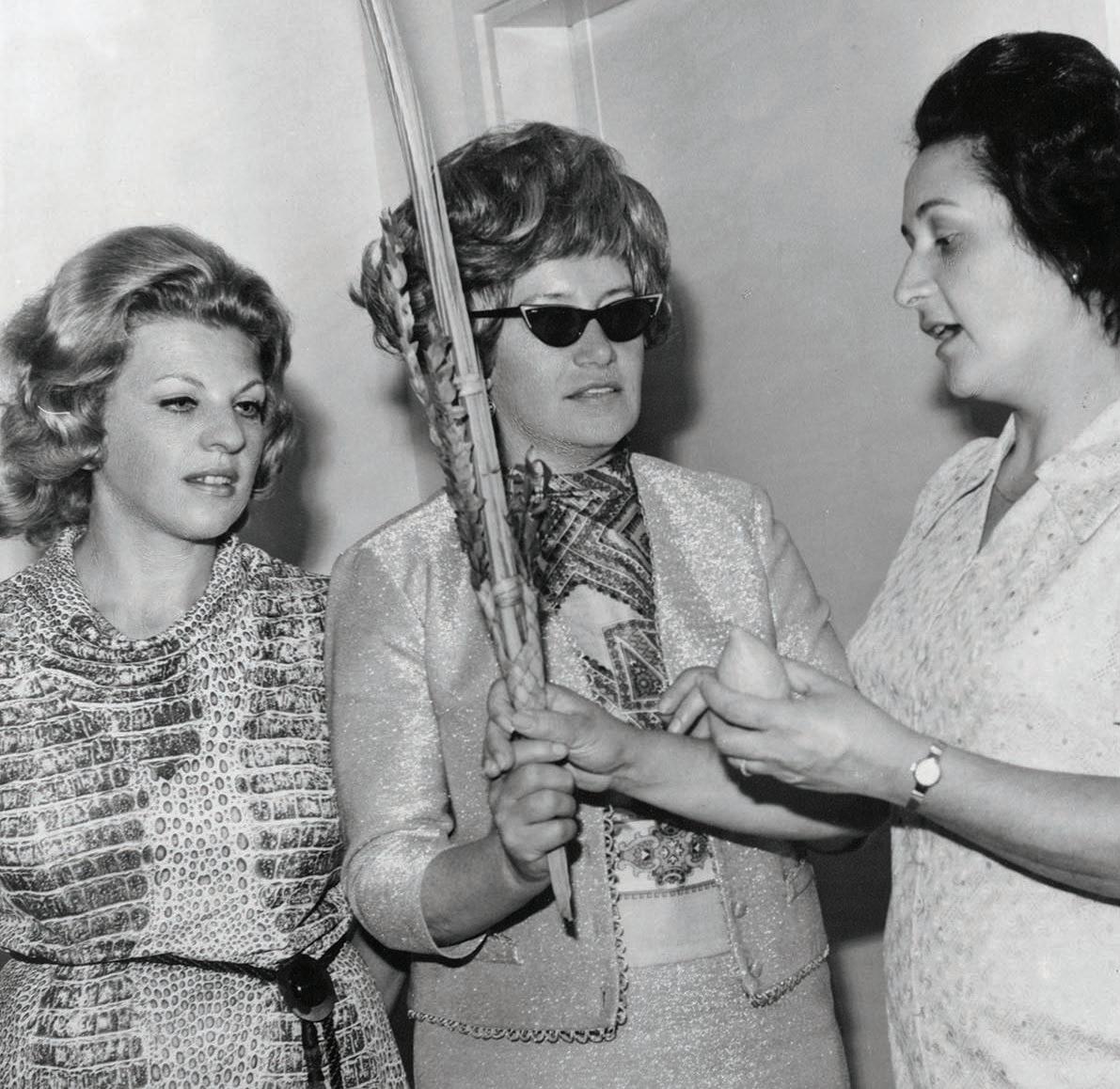
“Maybe it’s possible to speak to the Rebbe?” I repeated. “I feel he didn’t understand me last night.”
Again, he refused. An hour later, I knocked at his door.
“Do you believe in G-d?” he asked.
“Of course,” I replied. “Do you believe in the Torah?” he asked further.
“Of course,” I replied.
“Well, just as G-d and His Torah never change, neither do the Rebbe’s words. You came from Russia, so you’re unfamiliar with what a Rebbe is. If you stay here without the Rebbe’s blessing, don’t complain to anyone. HIAS won’t help you here, and you’ll be on your own. But if you go to Cleveland, HIAS will continue assisting you, and, above all, you’ll have the Rebbe’s blessing.”
With that, I gave up the fight. I would have to make the best of it.
Rebbetzin Shula Kazen assists with making a bracha on the Lulov.
MEMORIES Tishrei, 5783 53
# Tishrei with the Rebbe
As we gradually settled in, I felt a yearning to visit the Rebbe for Simchas Torah. When I told my husband I wanted to go to Crown Heights, he was worried we could not afford it. Our fiftydollar stipend from HIAS barely covered our basic expenses, and if they discovered we somehow had enough money for traveling, they might suspend our stipend altogether. I responded that visiting the Rebbe was more important than anything HIAS might do, and I began looking for another source of income to fund the trip.
My neighbor, who had five children, worked most of the
day. I offered to babysit her children, do housework, and do laundry. Although I was unwell, my determination to visit the Rebbe forced me to overcome my ailments. The luxury of washing machines or dryers was still beyond us, so, with the help of Esther, my eldest daughter, I washed the laundry by hand and dried it on the line outside. We got down on our hands and knees to scrub the floors. After just a week of hard work, I had earned enough to cover the thirty-six-dollar roundtrip bus fare to New York. Children under twelve traveled for free, so I left Esther, who was already twelve, with my husband, and traveled with my
five younger daughters to the Rebbe.
My sister Rosa Marosov and her family had moved to a fourth-floor apartment at 822 Eastern Parkway, a perfect location just a half block from the Rebbe’s shul. Over Sukkos, we camped on her floor, among other guests, with just a blanket beneath us and a blanket over us.
On Shemini Atzeres night, Torah scrolls were removed from the ark and the Chasidim danced in the Rebbe’s hakafos, beginning around 9:00 PM. We stayed all night, watching from the ladies’ section. The Rebbe led the singing and dancing, which continued long after he left the shul. At daybreak, we
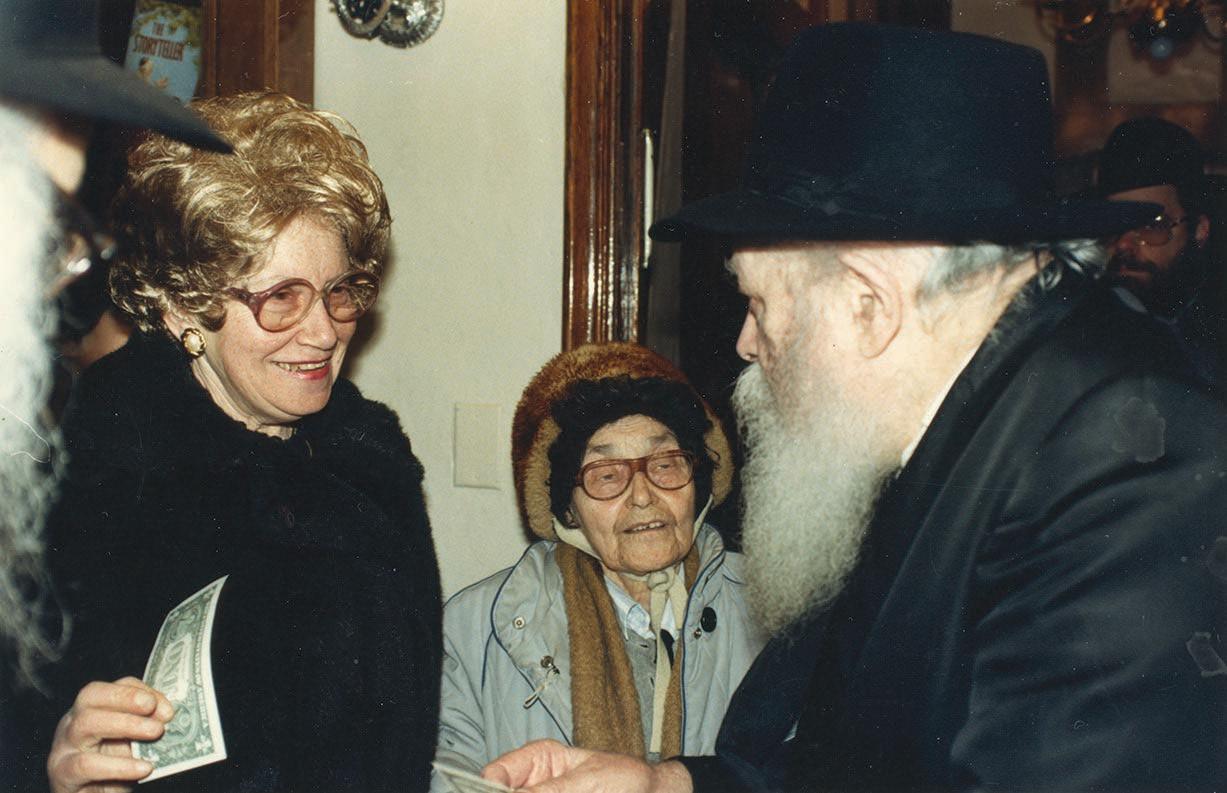
MEMORIES 54 COLlive Magazine
returned to Rosa’s apartment for a brief meal.
We spent the next two days in a flurry of activity, rushing back to shul at every opportunity, absorbing the sights and sounds of these holy days with the Rebbe, but sleeping and eating very little.
The next day, my girls were exhausted, so I let them sleep in. But I had scheduled a yechidus with the Rebbe for that evening, so sleep evaded me. After three nights without sleep, I had to splash cold water on my face to help me stay awake.
When my daughters and I entered the Rebbe’s room, he asked if I had rested, remarking that, for me, the holiday
celebrations had been a firsttime experience. “You must be tired,” he said.
“The Rebbe didn’t sleep for three nights,” I replied, “and then he meets Jews all night.
How could I sleep? My body may be tired, but my soul is content.”
The Rebbe smiled and gave his blessing to our family.
Reinforced by our remarkable holiday experience, I returned to Cleveland, determined that Zalman and Esther travel to the Rebbe for Purim that year –and they did.
The next year, I again raised thirty-six dollars for the bus to New York for Simchas Torah.
In later years, as our financial standing improved, we
traveled to the Rebbe twice a year. We took the Greyhound bus on Thursday night, arrived in Crown Heights on Friday, and returned to Cleveland on Sunday night. We met privately with the Rebbe on these visits as well.

The Rebbe encouraged us, among all his followers, to share Yiddishkeit with all Jews.
Over the years, he gave many suggestions that enabled us to be creative and proactive in our mission. I often wrote to him about our activities, and the Rebbe replied with warm, encouraging letters.
The forthcoming book
The Queen of Cleveland is available for pre-order on HasidicArchives.com
MEMORIES
A place for every student
By Chana Levy
Mendel S, an eighth-grade student, assumed he would go to the same Mesivta as many of his classmates. He thought of himself as a good boy, even though sometimes he found it hard to sit still. He’d thought he learned on the same level as his friends and had taken home just as many certificates of achievement as the other boys. Many of his classmates who had applied around the same time as him (Hey Teves) had already been told that they’d been accepted to a Mesivta. But Mendel waited. There must be other boys who were also waiting to hear back, he thought. But one by one, the boys in his class announced where they were going: Coral Springs, Westchester, Cincinnati, Oholei Torah, New Haven, and Pittsburgh.
A Chassidishe boy at heart, Mendel was not that different from his friends and wanted to be a Chossid and eventually raise a family. The road to that future ran straight through a good Lubavitch Mesivta, like the one that he’d applied to way back in Teves. It was the Mesivta that his rebbi had recommended for him and seemed like the obvious
choice. It was where all his friends were going. So, what was the hold-up?
During the summer, his parents became worried. The Mesivta had called them back and said that they should have applied long before Pesach. When they said that they had done that, the reply was that the Mesivta didn’t have room. There were no beds, they said, and that they were “trying” to find Mendel a spot. When, by the end of the summer, not just the original Mesivta but several others weren’t returning their calls, the S family became frantic. What would become of Mendel if he couldn’t get into a Mesivta? Would he be out on the streets? Would he have to go to a regular high school?
Meanwhile, Mendel’s selfesteem plummeted. Was he not good enough to get into any school? What kind of a boy was he? It became harder and harder for him to get up on time for minyan, and it was less exciting for him to spend time learning. He felt like a failure. Every time he looked at his parents’ worried faces, he felt like crying.
Contacting the dayan saved a young boy’s future and ended months of aggravation
Mendel’s parents felt like the elementary school should have given them some warning that it might be hard to get their son into Mesivta. Mendel was their oldest child and the oldest grandchild in the family. It had been years since anyone in the S family attended Mesivta. How could they choose the right Mesivta for their son if the school didn’t advise them? And also, if their son had some issues, why didn’t the school say anything until now, when it was too late and no Mesivta would take him?
Mrs. S didn’t want to blame the school. She reminded her husband that they had known something wasn’t quite right with their son earlier in the year. They thought he was falling behind a little in his ability to read and translate. Mrs. S had thought they should hire a tutor for Mendel, but it was a significant expense for their large family, and they’d hoped Mendel would catch up on his own. Now, they understood that not acting had caused Mendel to lose out on a lot of vital eighth-grade skills. The situation was complicated… Mendel was a good boy and
56 COLlive Magazine
usually not a behavioral issue, although that could change if he didn’t get into a Mesivta. He needed time to catch up on some basic skills and get some remedial assistance. What he didn’t need was to lose out on a semester of schooling because nobody had a place for him. Elul had arrived and Mendel’s classmates had left for their Mesivtas. By now, every morning, it was a battle to get Mendel out of bed and have him daven in Shul. Then Mrs. S. discovered a ray of hope. “There was something on COLlive about an organization that helps kids get into schools,” she told her husband one evening. “That would be incredible if there is such a thing!” her husband said. “I literally don’t know who else to turn to for help!”
The couple went online and found the news articles about what has been named the Merkos Chinuch Placement Office.
A CALL FOR CHANGE
A short month earlier, on the Shabbos before Gimmel Tammuz in 5781, a group of Chassidim were farbrenging near the Rebbe’s Ohel. One of them, a Shliach, began to cry.
He revealed the challenges he was having getting his son into a Mesivta. Then, one by one, participants each revealed their own challenges in the realm of getting their children into schools, seminaries and camps. It felt good to let down their guard, and explain the pain they were each experiencing in placing their children in a school. “It shouldn’t be this hard,” someone commented.
Another called out, “We parents need advocates.” Those present decided to form a group that would implement a change.
Rabbi Nochem Kaplan, the veteran educator and Director of the Merkos Chinuch Office, was approached. He agreed to include the initiative under his auspices and provided space for operations.

To date, The Merkos Chinuch Placement Office has received calls from over seventy-five families, all looking to get their children - boys and girls of various ages - admitted into a Lubavitch educational institution. In the past year, fifty students were successfully placed through the advocacy of the organization, an enviable success rate. The board includes Rabbis Kasriel Shemtov (Crown Heights), Shmuely Hecht (New Haven, CT), Yossie
Shemtov (Tucson, AZ), Aryeh Schottenstein (Surfside, FL) and Shlomo Yaffe (Longmeadow, MA).
The primary advocate is Rabbi Yacov Barber, a senior dayan and toyen who leads the Placement Office. When the parents of Mendel S. called, he fielded their call. He gently asks them questions about Mendel and to which Mesivtahs they have applied. Already, their anxiety begins to subside. Someone is listening. Someone wants to help. “How is he socially? What about his behavior?” Rabbi Barber asked. “Does he learn best from reading and writing, or in a different modality?” He scheduled a time the following day when he would interview Mendel in person. “Is he more interested in nigleh or Chassidus?” As he talked to the parents, Rabbi Barber scanned his list of Lubavitcher Mesivtahs, wondering which one was right for Mendel. He was confident that he would be able to get Mendel a place. “Can he take care of himself without close adult supervision?”
After speaking with Mendel the next day, Rabbi Barber called the Mesivta that would become the “top” school for this boy, the one that would meet his abilities and needs, and that would create the right environment for his success. He spoke briefly with the Menahel.
Many Mesivtahs were already familiar with the Merkos Chinuch Placement Office and were happy to work together. Rabbi Barber called the family back and let them know that he found a place for Mendel. He also
Dayan Rabbi Yacov Barber (left) and Rabbi Nochem Kaplan at the Merkos Chinuch Office
CHINUCH Tishrei, 5783 57
suggested a tutor, so Mendel can gain needed skills faster. Later the same day, a delighted and upbeat Mendel S packed his bags, excited about this new rite of passage, an initiation into independence, learning and character-building to which every Lubavitcher boy is entitled. He was excited that he would be in a warm location with a lot of sunlight, because he often struggles during the winter. He’d heard that the rebbeim in this yeshiva were really caring and he was excited to meet them. A few of the boys he most enjoys learning with were at this same Mesivta too.
His parents, too, were thrilled. Though they’d struggled to get Mendel into school for several months, they’d been unsuccessful. It had taken the Merkos Chinuch Placement Office a single day to get their son into a good Mesivta. After this success, they recommended the Placement Office to a cousin who is trying to get into seminary and has so far, been unsuccessful...
HOW IT’S DONE
Rabbi Barber says that the goal is that every Lubavitcher child should be registered in a Chabad institution by the end of the
spring preceding the new school year or prior to camp. He explains that it’s a given that not every school will suit every student. And yet, there is tremendous competition for places in what are viewed as the top tier schools, the institutions where the “top” students go, whether that school is right for the child or not.
“Some students like to sit and learn all day, their skills are excellent, they don’t care what the school or the dormitory are like and they will succeed even with minimal input from teachers,” he says. “Other children need more warmth, more input and are still developing their learning skills. They need some healthy exercise, they do better when they can move around outside each day, perhaps they are artistically inclined or skilled in areas that may not be currently part of the curriculum.
“And other students are more hands-on and may not have adequate skills to learn independently. They are still Chassidishe children, and they still want to learn. Yet other students need a truly nurturing environment to rekindle their love of Yiddishkeit. What would
happen if school rankings were not decided by how many students sit learning in pristine white shirts or tzniusdike uniforms all day, but rather, by what the students do after they attend the school? How successful is the institution in lighting a Chassidishe fire in the soul of the young people it teaches? By that standard, some of the mosdos which are currently considered “second tier” are doing outstanding work.”
He says that prior to advocating for a student, the Placement Office asks for a full evaluation and recommendations from professionals. Where will this child stand the greatest chance of success? Where will the student feel like they are growing and learning? The Placement Office plans on following up on the students for whom they find schools and assessing the ways in which the mosdos provided support for these new students.
“Accountability like this is what sets this initiative apart,” Rabbi Barber says. “Instead of simply hoping for success and shoehorning children into schools, we are hoping to create longterm solutions for Lubavitch families and better outcomes for their children.”
The Merkos Chinuch Placement Program would not be able to assist children on their educational journeys without the assistance of generous patrons such as Boruch and Naomi Greenberg in honor of his parents Rabbi and Rebbetzin Heschel Greenberg marking the 50th year of their shlichus in Buffalo; and Dovid Junik in honor of his wife Chanie, their children and grandchildren. Without the contributions of key sponsors such as these, this essential program will not be able to expand to assist all of the children who need placements.
For more information and assistance, contact Rabbi Yacov Barber at the Merkos Chinuch Placement Office at 917-818-8707 or yacovbarber@gmail.com.
To donate, visit chinuchoffice.org
CHINUCH 58 COLlive Magazine
















PlumbersHaven.com | (718) 604-1300 516 Empire Blvd Brooklyn, NY 11225 @plumbershaven Your home is your haven. FULL LINE OF: Vanities Shower Systems Whirlpools Faucets & Coordinating Bathroom Fixtures
12
tips on hosting guests over Tishrei on hosting guests over Tishrei

With tips from Mashi Greenberg, Toby Halon and Raizel Heppenheimer who have all been hosting hundreds of guests during Tishrei for over 25 years.
By Danit Shusterman
Every year in Crown Heights, many guests travel from around the world to spend Tishrei with the Rebbe and at 770.
Although they have sleeping accommodations, many of these visitors arrive not knowing where they will be eating their Yom Tov meals, only to rely on the open homes and hearts of the many wonderful Crown Heights residents who offer not only delicious Yom Tov meals, but many of their homes are open almost at all hours of the day, offering tea, coffee and snacks.
These Crown Heights families graciously host many, and aside for personally greeting and serving their quests, so much planning goes on behind the scenes to ensure our Tishrei guests have delicious home cooked meals in warm, loving environments.
Enjoy these practical and easy tips from Mashi Greenberg, Toby Halon and Raizel Heppenheimer who have all been hosting hundreds of guests during Tishrei for over 25 years.
60 COLlive Magazine
Proper planning
Don’t wait until the last minute to shop for food. Most items can be purchased weeks or sometimes months in advance. Shopping ahead also allows you to watch for sales. If you plan ahead you might be able to get most of your menu items on sale.
Cook and stock your freezer. Soups, cakes, challahs, roasts, kugels, deli rolls, franks in blanks, mini egg rolls, prepared raw chicken and schnitzel- these can all be prepared in advanced and either popped into the oven at a moment’s notice or thawed and fried. This is also great for the arrival of unexpected guests. Have cooked grains ready in the fridge to use for salads or sides such as quinoa, couscous and rice.
Know your Guests
Always check to see if your guests have any dietary requirements. Are they Israelies who appreciate a taste of home such as Chumus, Israeli salad and Tehina? Or is it a group of young women who enjoy healthy greens and grains? Is there a favorite wine that they gravitate towards? If they like red, but you prefer white, either buy both or roll with red for the evening. It is so important to give thought to what your guests would really enjoy eating. Don’t use their visit as an excuse to show off any fancy dishes you might have mastered unless you think they’ll really like it. Very often it’s the simple, easy
dishes that go- not the time consuming intricate ones.
Sleepover Guests
Don’t skimp on this - a good night’s sleep is key to ensuring your guests have a great stay. Good quality bed linen is important. If you do have a guest room/s, open any windows the night before to air out the space, and light a beautiful smelling candle or diffuser. Whether you have a guest room or not, prepare a clean bedside table - makeshift or otherwise with a bottle of water, a box of tissues and some good reading material (magazines or books). Leave one or two towels on the bed, and check that the guest bathroom is fully prepped with shampoo, conditioner and body wash.
Quality and Quantity
You can never have too much food. You can always repurpose leftovers and as much food as you make, you can always come up with ways to use it. Not only should you make more than enough food, your guests like to feel like you went that extra mile for them. Splurge on the more expensive wine. It says that ‘all the money spent on food for guests comes back to you.’ Make sure to have a large amount of challah rolls and matzah, as Bochurim come in and out at all hours and by having the extra breads, they can always have lechem mishna.
Easy and delicious
Getting together for a meal
is less about the food and more about the company. While you want your menu to be delicious, don’t overdo it by preparing 20 exotic dishes that no one is going to really like anyway. Keep things fresh, tasty, simple and delicious.
Constant food availability
Stock the fridge with the types of beverages and snacks your guests enjoy. The idea is to make it easy for your guests to grab a quick snack whenever they want. Set up a tea and coffee station. Leave a selection of cookies and cakes for guests who show up at all hours.
For holidays like Sukkos, leaving crock pots filled with soups and stews as well as finger foods such as Franks in blanks and mini egg rolls. it’s always a good idea for the guests who arrive at all hours of the night and are hungry.
Your Kids love it because you love it
When our kids see how much we enjoy hosting guests, they learn to love it too. It is great chinuch having an open home, treating guests with warmth and kindness and making sure everyone has what they need.
Ambiance
The right ambiance will immediately help everyone feel relaxed and at ease. If foreigners are coming who don’t speak English, make
CATEGORY
Tishrei, 5783 61
sure they have others to talk to who speak their language and to enjoy themselves with. Stories, niggunim and farbrengens keep the table lively, interactive, personable and fun. This will ensure your guests come back year after year.
Don’t do it alone
This is really important during Tishrei. If your guests offer to help, give them something to do such as set the table, bring out or collect the dishes or anything else they offer. If possible get cleaning help to help with the dishes and
cleaning after each meal. Delightful, decorative and disposable
Tishrei is not the time to showcase your finest China. There are plenty of inexpensive and pretty disposable tablecloths, cutlery, serving dishes, salad bowls, cups and silverware that make your table look beautiful and festive and leave minimal dishes for after the meal.
Relax and stay calm
It is important to be in a place of calm and warmth when
everyone arrives. Once your guests have arrived, focus solely on them. This is the easiest way of ensuring that they feel welcome.
You’re Doing Holy Work
Although it is lots of work, hosting guests is a wonderful mitzvah. It is holy work. These guests have come from all over the world to be in 770, to be with the Rebbe and we are making it a memorable, happy, nourishing and meaningful experience for them.
Children of all ages will love Amazing Miracle Stories for Kids, an incredible collection of 51 stories that will entertain, inspire and build connections with the Rebbe and other renowned tzadikim.
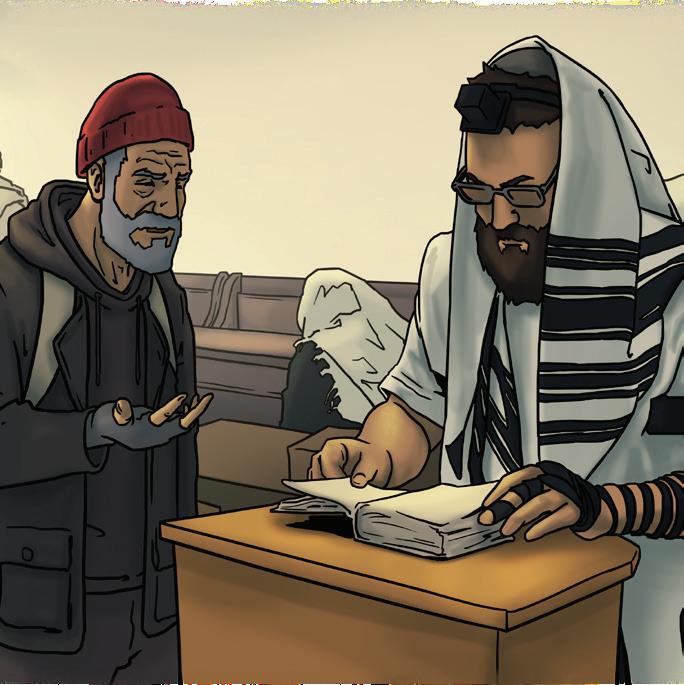
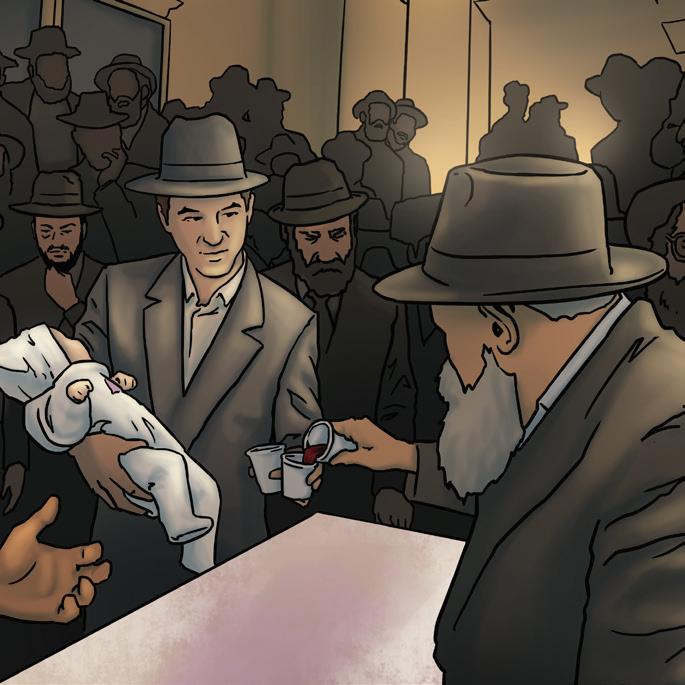
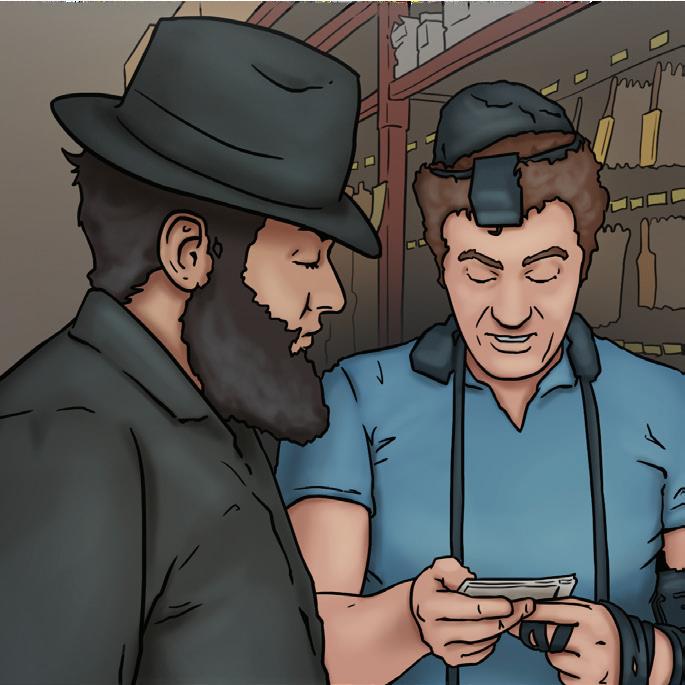

CATEGORY 62 COLlive Magazine
Now Available In Your Local Jewish Book Store For More Information And For Bulk Orders Mail@tzaddikstory.org



400+ PEOPLE WHO ARE ALREADY MAKING SHLICHUS A PART OF THEIR DAY JOIN Excuse me, sir, do you have $1?


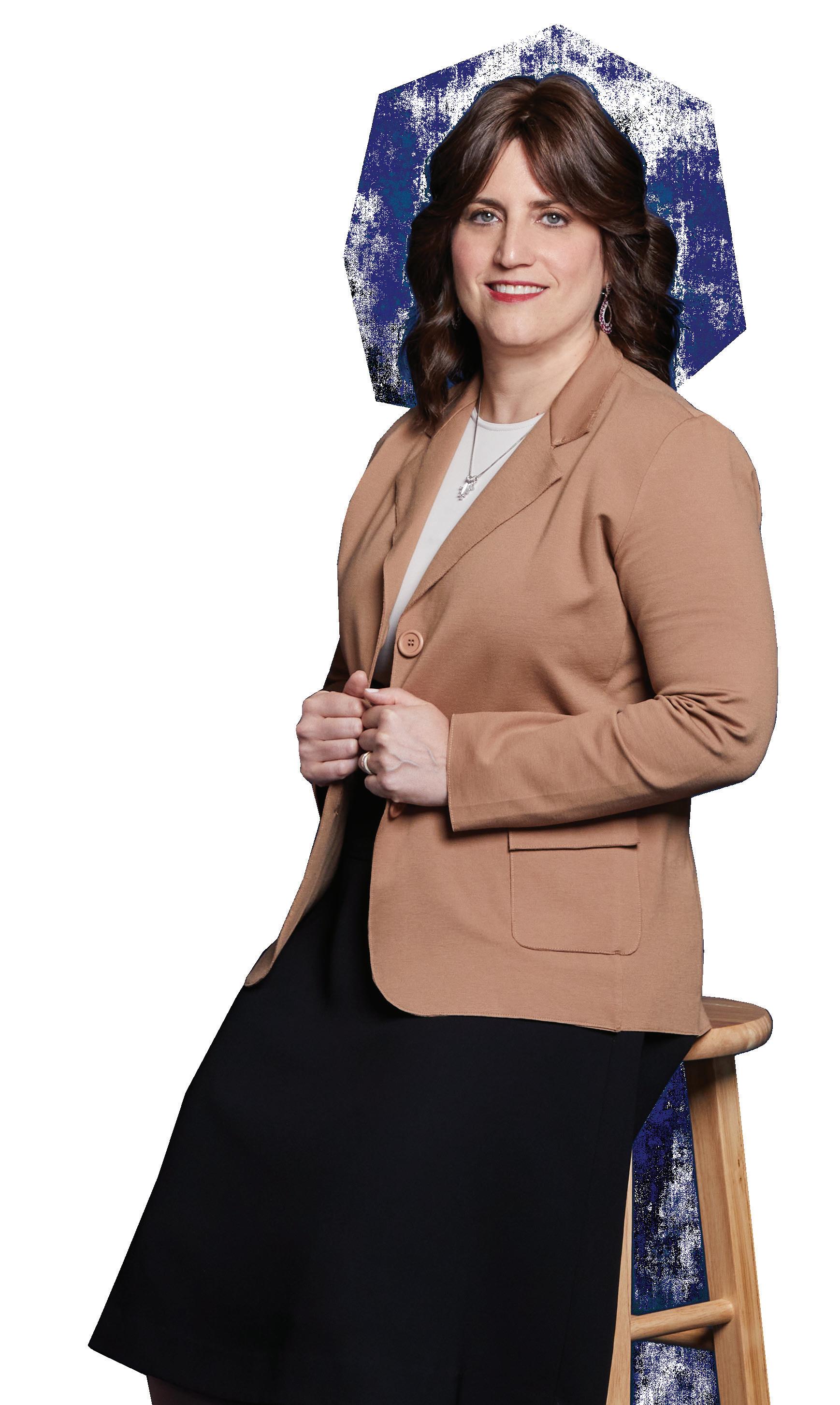

SARA RABI, CPA, ‘94 TOURO’S LANDER COLLEGE OF ARTS AND SCIENCES MANAGING DIRECTOR CBIZ MARKS PANETH LLP TOURO UNIVERSITY TOURO UNIVERSITY MEET THE TOURO TRAILBLAZERS Touro alumni are changing the world. See what Touro can do for you. ALEXANDRA FRIEDMAN, MD, ‘21 TOURO COLLEGE OF OSTEOPATHIC MEDICINE PEDIATRIC RESIDENT PHYSICIAN





TOVA BRAM, ‘16 TOURO’S LANDER COLLEGE FOR WOMEN THE ANNA RUTH AND MARK HASTEN SCHOOL SOFTWARE ENGINEER, META (FACEBOOK) 50.touro.edu NAOMI NACHMAN, ‘95 TOURO’S LANDER COLLEGE OF ARTS & SCIENCES KOSHER COOKBOOK AUTHOR INFLUENCER, MEDIA PERSONALITY RUCHIE FREIER, ‘01 TOURO’S LANDER COLLEGE OF ARTS & SCIENCES U.S. CIVIL COURT JUDGE FOUNDER, FIRST ALL FEMALE VOLUNTEER AMBULANCE CORPS
A modernYom Tov feast
Special recipes perfect for Tishrei presented by Kim Kushner
Culinary educator Kim Kushner is the best-selling author of ‘I Heart Kosher,’ ‘The New Kosher,’ and ‘The Modern Menu,’ and the newly released ‘The Modern Table - Kosher Recipes for Everyday Gatherings.’

Raised in Montreal, Canada, Kim learned to cook early from her Moroccan-born mother and spent summers with family in Israel. A graduate of the Institute of Culinary Education in Manhattan, she has developed recipes for Food & Wine and Chile Pepper magazines and worked as a private chef.
In 2005, she launched Kim Kushner Cuisine and now travels the world teaching her wildly popular cooking classes. Her cooking style reflects her busy life as a moth er of four, a teacher, and an author. Her flavor-packed healthy recipes bring ease, time savings techniques, and creativity to the kitchen.

Tuna Crudo; Radish, Citrus Zest & Scallion
READY IN 20 MINUTES
SERVES 8
‘Crudo’ is Italy’s take on raw fish- often, thinly sliced and dressed with citrus and olive oil. The key to crudo is starting with high quality, fresh fish. This isn’t a time to skimp. When you’re cooking with fine ingredients, there isn’t too much you need to do. In this case, it’s just salt, pepper, citrus, and olive oil- but the end result is remarkable.
Directions:
1. Using a sharp chef’s knife, slice the tuna across the grain into ¼-inch thick slices, about the size of a domino. Sprinkle the tuna with salt and pepper.
2. Sprinkle the zest, radish slices, and scallions over the tuna.
3. In a small bowl, whisk the orange and lime juices with the olive oil.
4. Spoon the oil over the tuna. Serve at once.
Ingredients:
• Two -8 oz.sushi grade tuna steaks
• ½ teaspoon kosher salt
• pinch freshly ground black pepper
• zest and juice from 1 orange
• zest and juice from 1 lime
• 5 red radishes, washed and stemmed
• 1 shallot, peeled and thinly sliced
• 3 tablespoons good quality extra virgin olive oil
Tips & Tools
• Ask your fishmonger for thick steaks from the loin.
• For uniform crudo slices, place the tuna in the freezer for about 10 minutes before slicing.
• Tuna Crudo recipe can be made with Salmon as well.
• Tuna should be sliced no more than 1 hour before serving and dressed just before serving. If you add the lemon
RECIPES Tishrei, 5783 67
Can you handle the heat? If you can’t, please skip over to the next page. I happen to LOVE spicy food- and funny enough, all of my favorite people in this world love spicy food too. Coin cidence? Whenever people ask me how I keep a slender physique considering i’m cooking all day long, I tell them that it must have some thing to do with the fact that everything I eat is spicy. Don’t quote me, though.

68 COLlive Magazine
Cabbage,Cilantro, Salted Cashews & Crunchy Chili Oil
READY IN 20 MINUTES
SERVES 8 Ingredients:
• 4 cups shredded red cabbage
• 4 cups shredded green cabbage
• ¼ cup rice vinegar
• 2 teaspoons coconut sugar/brown sugar
• ¼ cup cilantro leaves, washed and dried
• ½ teaspoon kosher salt
• ¼ teaspoon freshly ground black pepper
• 2 tablespoon neutral oil (avocado oil, vegetable oil, rice bran oil..)
• 1 garlic clove, minced
• 1 teaspoon dried chili flakes
• ¼ cup crushed salted, roasted cashews
• 1 tablespoon roasted, salted sunflower seeds
• 1 tablespoon pumpkin seeds
• 1 tablespoon sesame seeds
• ½ teaspoon toasted sesame oil
Directions:
1. Place the cabbage in a large bowl. Pour the vinegar over and sprinkle the sugar over. Season with salt and pepper. Use your hands to toss together. Set aside to marinade.
2. |Using a large chef’s knife, roughly chop the cilantro, and set aside.
3. Place a large saute pan on the stovetop over medium-high heat, and add the neutral oil.
4. Add the garlic, chili flakes, cashews and seeds and cook, until golden, about 5 minutes, stirring constantly.
5. Transfer to a small bowl, and stir in the toasted sesame oil.
6. Scatter the cilantro and the Crunchy Chili Oil over the cabbage and toss well. Serve at once.
Tips & Tools
• The cabbage can be shredded and marinated for up to 5 hours in the refrigerator.
• The Crunchy Chili Oil can be prepared in advance and stored in a glass jar in your pantry for up to 2 weeks. Feel free to double or triple the recipe. FYI-It is delicious on almost anything!
RECIPES Tishrei, 5783 69
It seems like so many of us are looking for easy recipes using boneless, skinless chicken breasts. Well, here you go! Marinating the chicken breasts adds significant moisture and infuses the meat with intense flavors. I always keep a bag of frozen artichoke hearts in the freezer and I love that they add an unexpected medittereanean essence to this dish.

70 COLlive Magazine
Marinated Chicken Breasts with Artichokes & Fennel
READY IN 50 MINUTES
SERVES 6 PEOPLE
Ingredients:
• 6 chicken breasts pounded thin, skinless and boneless, cut into 1’-inch strips
• 1 yellow onion, peeled and thinly sliced
• 1 fennel bulb, washed, peeled and thinly sliced
• One-10 oz. bag frozen artichoke hearts cut into quarters
• 2 garlic cloves, peeled and minced
• 1 tablespoon grainy dijon
• juice from 1 lemon
• 2 tablespoon balsamic vinegar
• 1 tablespoon dried rosemary
• 3 tablespoons extra virgin olive oil
• kosher salt
• freshly ground black pepper
Special tools or equipment Indoor grill pan
Directions:
1. Season the chicken generously on both sides with salt and pepper.
2. Combine the chicken, onions, fennel, artichokes, garlic, dijon, lemon juice, balsamic vinegar, rosemary and olive oil in a large baking dish. Cover, and marinate for 30 minutes or up to 24 hours. If marinating for longer than 30 minutes, place in the refrigerator to marinate.
3. Heat a grill pan or saute pan over high heat. Lightly grease the pan to prevent sticking.
4. Transfer all of the marinated ingredients into the pan. Give the pan a good shake. Cook for 5 minutes. Reduce the temperature to medium heat. Cover, and cook for 7 minutes. Uncover, and continue to cook for 7 minutes longer, rotating all the ingredients occasionally as they cook, until the chicken is cooked through and the vegetables are caramelized.
Tips & Tools
• The red onions can be replaced with any onion variety.
• The fennel can be replaced with any sliced vegetable.
• The artichokes should not be thawed
• Marinated Chicken Breasts with Red Onions, Artichokes & Fennel can be assembled and marinated in the fridge for up to 24 hours. Bring to room temperature before cooking.
• Marinated Chicken Breasts with Red Onions, Artichokes & Fennel can be stored in the freezer for up to 1 month.
• To reheat, let the Marinated Chicken Breasts with Red Onions, Artichokes & Fennel come to room temperature before reheating, covered, in a 350 oven for about 10 minutes.
RECIPES Tishrei, 5783 71
Here’s a super simple cauliflower recipe that always gets rave reviews. Instead of serving the cauliflower in its typical floret form, try serving the cauliflower, thickly sliced, and roasted until crisp, sprinkled with zaa’tar and salt and pepper. It’s insanely good.

Thickly SlicedZa’atar Cauliflower
Ready in 25 minutes
Serves 6 people
Ingredients:
• 1 head of cauliflower, leaves removed, rinsed and dried
• 4 tablespoons extra virgin olive oil
• 3 tablespoons za’atar
• kosher salt
• freshly ground black pepper
Directions:
1. Preheat the oven 375.
2. Trim the base of the cauliflower and set it on a cutting board. Using a large chef’s knife, slice the cauliflower into 1’-inch thick slices, cutting all the way through.
3. Place the cauliflower slices on a large parchment-lined baking sheet.
4. Season the cauliflower slices generously with salt and pepper.
5. Drizzle the olive oil over the cauliflower slices.
6. Sprinkle the za’atar over the tops of cauliflower slices.
7. Bake for 15-20 minutes, until crisp.
Tips & Tools
• The cauliflower can be trimmed, rinsed, dried and sliced up to 2 days in advance and stored in plastic storage bags in the refrigerator.
• To reheat the sliced cauliflower, place the cauliflower on a baking sheet, uncovered, in a 350 degree oven for 5 minutes.
RECIPES Tishrei, 5783 73
Crown Heights Kosher Food Guide
ABE’S CORNER
Gastropub offering unique, delicious food in a spacious and immersive setting.
Kosher Certification: Rabbi Eliyahu Matusof 674 Rogers Ave, Brooklyn, NY 11226
Phone: (718) 684-7828
ALENBI
Kosher restaurant presenting refined Israeli plates in a chic, modern space withlarge windows.
Kosher Certification: OK 887 Nostrand Ave, Brooklyn, NY 11225
Phone: (347) 529-3739
ALMAH CAFE
Kosher Coffeehouse and bakeshop
Kosher Certification: CHK 87 Utica Ave, Brooklyn, NY 11213
Phone: (347) 533-6494
BAKERIE
Modern bakery for kosher breads, sweets & daytime noshes with housemade spreads & coffee.
Kosher Certification: OK 252 Albany Ave, Brooklyn, NY 11213 Phone: (718) 693-8248
BAGUETTE EXPRESS
Israeli style falafel, shwarma and sandwiches.
Kosher Certification: CHK
250 Kingston Ave, Brooklyn, NY 11230
Phone: (718) 484-7814
BASIL PIZZA & WINE BAR
Kosher pizzeria & wine bar offering wood-fired pies & other Italian fare in a homeysleek setting.

Kosher Certification: OU 270 Kingston Ave, Brooklyn, NY 11213
Phone: (718) 285-8777
BOEUF & BUN
Innovative, handcrafted burgers pair with a variety of craft beers at this upbeat locale.
Kosher Certification: CHK
271 Kingston Ave, Brooklyn, NY 11213 Phone: (718) 221-8900
ALBANY BAKERY
339 Albany Ave, Brooklyn, NY 11213
Phone: (718) 778-1733
BUNCH O BAGELS
Cafe offering bagels plus a roster of entrees, omelets, salads, sandwiches & pasta dishes.
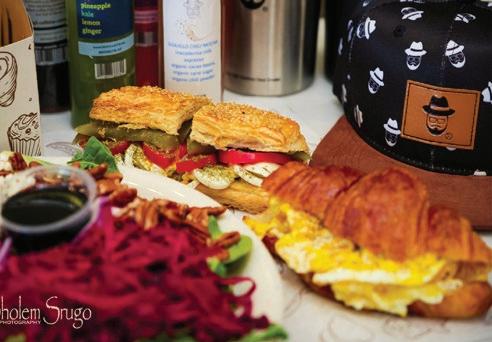
361 Troy Ave, Brooklyn, NY 11213
Phone: (718) 604-0634
CROWN PIZZA
Dark wood & exposed brick adorn the interior of this upmarket pizzeria with specialty slices.
Kosher Certification: OK 419 Kingston Ave, Brooklyn, NY 11230
Phone: (718) 484-4817
BROOKLYN ARTISAN BAKEHOUSE
Rustic decor, down to earth ambiance and flavorful menu.
Kosher Certification: OK
529 E New York Ave, Brooklyn, NY 11225
Phone: (347) 292-1382
CHOCOLATTE
Bright & Modern cafe in Crown Heights, free WiFi Open 24 hours.
Kosher Certification: CHK 792 Eastern Pkwy, Brooklyn, NY 11213
ESS AND BENTCH
Offering hot dogs, shnitzel, sandwiches and french fries
Kosher Certification: CHK
313 Kingston Ave, Brooklyn, NY 11213
Phone: (718) 705-7770
GOMBO’S HEIMISHE
BAKERY
Counter-serve bakery specializing in jelly doughnuts, plus other sweets, sandwiches & coffee.
328 Kingston Ave, Brooklyn, NY 11213
Phone: (718) 771-7701
GUIDE 74 COLlive Magazine
GRUIT
A neighborhood restaurant & garden with a modern American kitchen and strong focus on seasonality & cocktails.
Kosher Certification: OK 252 Empire Blvd, Brooklyn, NY 11225
Phone: (347) 846-0622
HOLESOME BAGELS
Bustling shop offering housebaked bagels, breakfast, sandwiches, pizza & salads.
Kosher Certification: CHK 333 Kingston Ave, Brooklyn, NY 11213
Phone: (347) 955-5300
IZZY’S BBQ SMOKEHOUSE
Kosher BYOB barbecue restaurant serving platters, sandwiches, sides & desserts in hip digs.
Kosher Certification: OK 397 Troy Ave, Brooklyn, NY 11213
Phone: (347) 425-0524
KINGSTON BAKE SHOP
Kosher Certification: CHK 380 Kingston Ave, Brooklyn, NY 11225
Phone: (718) 467-2047
KOSHERTOWN CAFE
Kosher Certification: CHK 469 Albany Ave, Brooklyn, NY 11213
MAMA KITCHEN NY
Restaurant featuring a funky modern interior & menu of contemporary & classic Israeli cuisine.
7 Rochester Ave, Brooklyn, NY 11233
Phone: (718) 771-3038
MEAT
MEAT is where food and design meet. Extremely elegant restaurant featuring modern Mediterranean
cuisine.
Kosher Certification: OU 123 Kingston Ave, Brooklyn, NY 11213
Phone: (516) 888-1730
MENDY’S
Mendy’s Deli is the place to go for burger, a delicious steak,or a heAvenly sandwich.
Kosher Certification: CHK 792 Eastern Pkwy, Brooklyn, NY 11213
Phone: (718) 907-8877
MERMELSTEIN’S Deli & Home-style Jewish Food
Kosher Certification:CHK 351 Kingston Ave, Brooklyn, NY 11213
Phone: (718) 778-3100
MOZZARELLA
Fine Dining Dairy establishment conveniently located in Crown Heights.
Kosher Certification: CHK 265 Troy Ave, Brooklyn, NY 11213
Phone: (917) 633-6770
NORIBAR
High quality Sushi meals using fresh ingredients and skilled preparation techniques.
Kosher Certification: CHK 326 Kingston Ave, Brooklyn, NY 11213
Phone: (347) 913-8888
PRIME AVENUE
Prime Avenue offers a delicious global menu that includes schnitzel sandwiches & Chinese dishes.
Kosher Certification: CHK 377 Kingston Ave, Brooklyn, NY 11213
Phone: (718) 576-6665
SAUCE N CHEESE Stop-in kosher pizzeria offering slices, calzones & salads in a simple counterserve setting.
Kosher Certification: CHK 509 Albany Ave, Brooklyn, NY 11203
Phone: (347) 425-1450
SUSHI SPOT
Snug storefront offering both basic & specialty kosher sushi rolls for delivery & curb-side pickup. Kosher Certification: CHK 426 Kingston Ave, Brooklyn, NY 11225
Phone: (718) 756-4040
SWEET EXPRESSIONS
Ice cream shop, candies, chocolates and sweets Hot and cold shakes and smoothies. 310 Kingston Ave, Brooklyn, NY 11213
Phone: (718) 613-0188
TAKEOUT
DOVID MALKA 1552 Carroll Street 718-773-2335
KOSHERTOWN 469 Albany Ave phone 718-778-6171
THE MARKETPLACE 589 E New York Ave Phone (718) 363-1300
GUIDE Tishrei, 5783 75

ADA MEDICAL CROWN IS COMING TO TOWN ODA, the largest medical conglomerate in all of Brooklyn, is excited to open its Crown Heights doors at: 779 East New York Avenue Where we will have the honor of staffing the legendary doctors: Dr. Eli Rosen From ER Medical Dr. Hill Isseroff & Associates From Crown Medical Make an appointment and you’ll be amazed with our beautiful facility, dedicated care and experienced staff. 718.260.4670 718.635.1673
Candle Lighting Times
Rosh Hashana
Sunday, September 25
Monday, September 26

Tuesday, September 20

Tzum Gedalya
Wednesday, September 28
Wednesday, September 28

Shabbos Parshas Vayelech
Friday, September 30

Shabbos, October 5
Yom Kippur

Tuesday, October 4
Wednesday, October 5
Shabbos Parshas Ha’azinu
Friday, October 7 Shabbos, October 8


Sukkos
Sunday, October 9
Monday, October 10 Tuesday, October 11
Shabbos Chol Hamoed
Friday, October 14
Shabbos, October 15

Shemini Atzeret
Sunday, October 16
Monday, October 17
Tuesday, October 18
Crown Heights - Williamsburg Borough Park - Flatbush - Monsey
blooms@ chanigreenbaum.com 718-484-1952 @chanigreenbaumevents @cgblooms BSD BSD
ומעט
A glimpse of the upcoming sichos in Project Likkutei Sichos Likutei Sichos Vol. 19
Devarim 1:
The Long, Loving Way
Rabbi Yochanan ben Zakkai and a Bauthesthean debate Moshe’s love.
Devarim 2:
Torah with a Human Touch
How Moshe bridges heaven and earth.
Ve'eschanan 1: Child-like Study
Lessons in innocence and humility from a peculiar Rambam.
Ve'eschanan 2:
Hand Before Head A halachic analysis of tefillin’s proper order and its implications for daily life.
Eikev 1:
Heels Over Hierarchies
The infinite value of every Mitzvah.
Eikev 2:
Closing Time
A Rashi-inspired reflection on the role of this final generation.
Re’eh 1:
Tragedy and Unity
Two Aramaic translations reveal two perspectives on challenge and Divine unity.
Re’eh 2:
A Chosen and Sacred Place
Unearthing two forms of sanctity in the Har Habayis from the Rambam’s language.
Shoftim 1:
All for the People
Heart and mind — the two roles of a Jewish leader.
Shoftim 2:
The Immovable Egyptian
An investigation into the prohibition against dwelling in Egypt.
Ki Teitzei 1:
Rethinking Reward
A conclusion on Tractate Chullin and an analysis of the subject of reward for Mitzvos.
Ki Teitzei 2:
Of Freedom and Fences
Marriage advice from a law about fences.
Ki Tavo 1:
Until Next Year
Making sense of a Rashi about the uniqueness of Bikkurim.
Ki Tavo 2:
Reading Blessings
An inspiring spiritual inversion of a graphic curse.
Nitzavim 1:
Still Standing
Three perspectives on Moshe’s final gathering.
Nitzavim 2: Jewish Continuity
How the Jewish people are one with G-d, forever.
Vayelech 1:
Making Unity Practical How Yom Kippur and Vayelech bring abstract ideals into everyday reality.
Vayelech 2: The Generation Gap Rashi on the transition from Moshe to Yehoshua and the implications for today.
Ha’azinu 1:
Eternal Witnesses Rashi on the difference in testimony for Moshe’s two final pacts.
Ha’azinu 2: The Death that Couldn't be Stopped The Jewish people's failed protest of Moshe’s death, and its lesson in our lives.
Sukkos 1: Our Shared Sukkah The deeper dimension to the law of Sukkah ownership.
Sukkos 2:
Distilled into Details How unity amongst Jews is expressed in the Sukkah and Lulav.
78 COLlive Magazine
‘הבוט יכ וארו
Reinvigorate your hiskashrus and join the PLS community; sign up at projectlikkuteisichos.org
CONNeCT WIth TheDETAILS
AN AHAVAS YISROEL STORY CHAIN
In the Maamar Ve’atah Tetzaveh, the Rebbe tells us that by recognizing our connection to the Moshe of our generation and using everything we have to demand Moshiach, we’ll bring the Geulah now! That’s because deep down we are constantly connected to Elokus and revealing that very hidden part of us and the world is what Moshiach is all about. One note in the maamar says that the process of Ahavas Yisroel can be similar. If we connect to our Rebbe, a Neshamah Klolis of all Yidden, we can see how we are all connected with each other in our deepest selves. And boundless Ahavas Yisroel can also bring Moshiach—by loving and appreciating every aspect of another person, we bring the Geulah into this world. So team up together, learn about the Rebbeim, and follow the clues to the end.
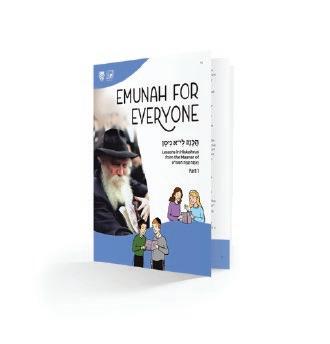
Are you ready to give it your all?
Instructions:
Before you start, read through all the instructions and make sure every team member understands them. When the instructor says, Go! you may start.
#1 Story Card Clue ClueClue Clue
1. Open Envelope #1
2. Assign a colored card to each team member (keep your color till the very end!)
3. Read the story and instructions on the large card carefully.
4. Work together to figure out the answers to the clues.
5. Choose the small square (or squares—sometimes it’s more than one!) that are connected to the clues’ answer. Cut out the correct square(s).

6. Put aside the saved square(s) in Envelope #7
7. Open Envelope #2. Repeat the process until the end.
8. Pull all the saved squares from Envelope #7, put together the puzzle and win the game!
Hatzlachah!
Courtesy of Tut Altz, a Project of Merkos 302 Find more Moshiach content for kids at TutAltz.com/kids Kids! Look out for the special Hakhel adventure from Tut Altz!
KIDS Tishrei, 5783 79
Are you ready? There’s a lot to learn about Ahavas Yisroel from Chassidus and our Rebbeim. The Baal Shem Tov lived with it, and the Alter Rebbe dedicated a whole Perek Lamed-Beis to understanding it Fill in the blanks to find the place where this special mitzvah begins…





KIDS _ו_ _ _ _ ר _ _ _ _ _ ו _ _ מ _ _ע_ _ _ _ _א_ ך_ _ _ ך_ _ _ ת _ _ _ _ _ _ _ כ _ _ _ ל _ _ _ _ _ בה ינ דס פט
1 80 COLlive Magazine
loving
Now, let’s start with the Baal Shem Tov! He showed that it is possible to appreciate what is special about each Yid, even the simplest ones. The Baal Shem Tov also taught that when we see something negative in someone else, it is a reflection of our own faults and it’s time to do a cheshbon hanefesh! This can be described as…


yid
ekil siuoy
gnivoldiy a

KIDS Tishrei, 5783 81 new

joy

2
In Tanya, the Alter Rebbe tells us that to love another Yid fully we must focus on the fact that we each have a spark of Hashem inside. Because our neshamos are all connected to each other, this leads us to true Ahavas Yisroel. But there is an even higher level of love that the Alter Rebbe himself demonstrated. The “props” of the story are all zoomed in below, and one image on the right is where it all happened. Can you figure out which famous story this is about?


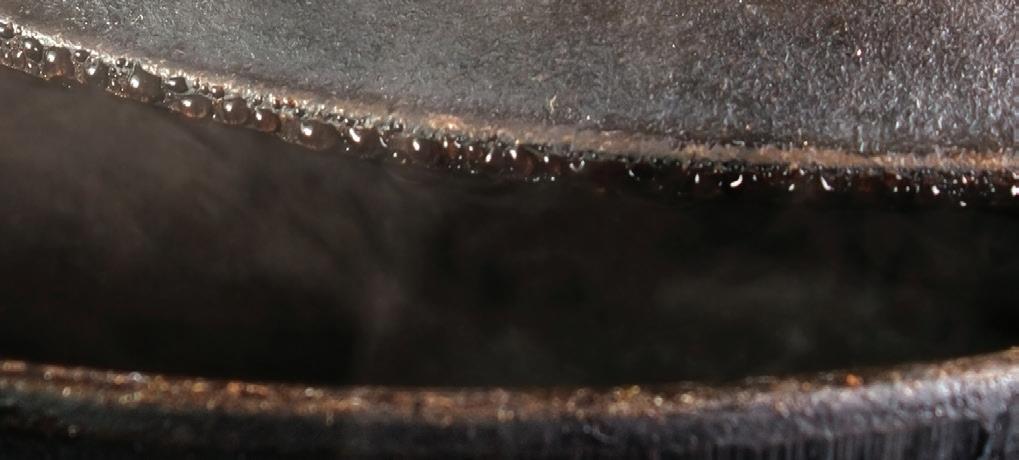

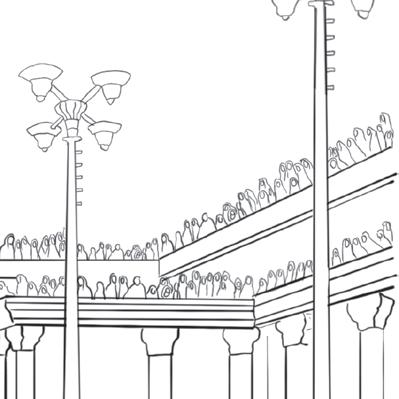
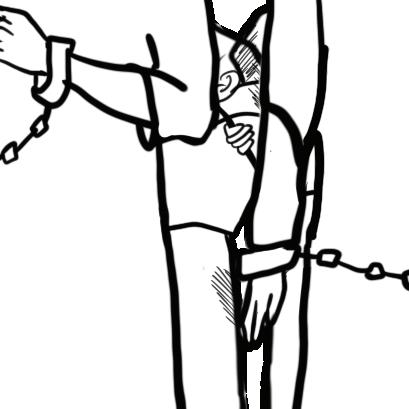



KIDS 82 COLlive Magazine
תיב תסנכ 3
At the beginning of this story, the Rebbe had not had one of his great visions in a long time. It might have seemed that in order to have this revelation, he would have to undergo some great spiritual preparations. But actually, in the end this Rebbe merited to see his Zeide from Gan Eden all because of a few small coins he made extra effort to give a Yid in need. Which Rebbe was he and who was his grandfather?



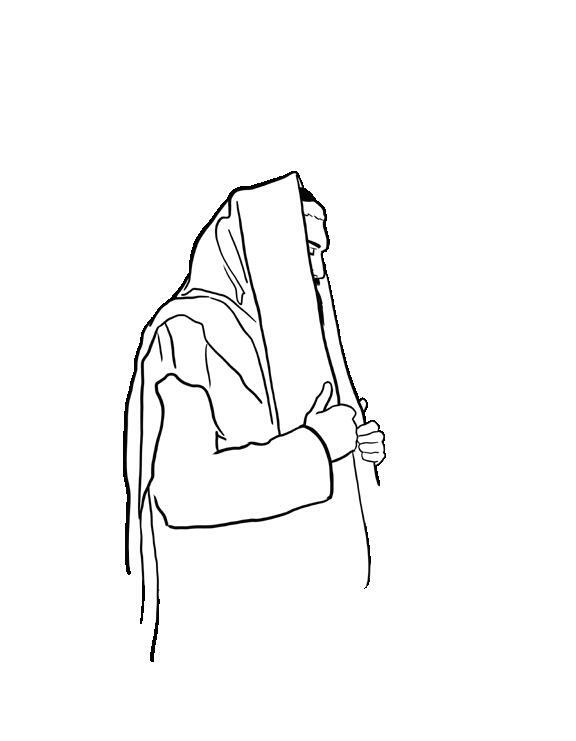

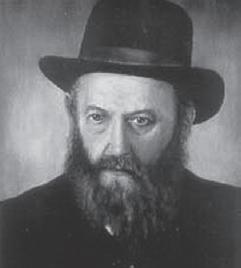

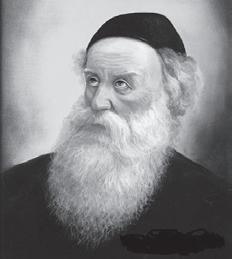



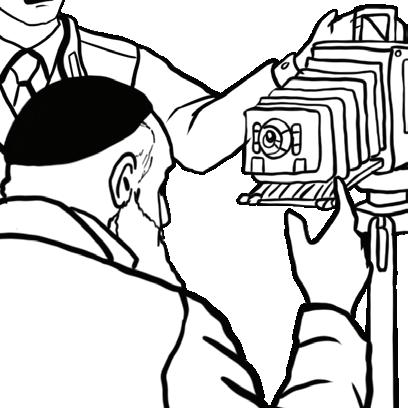

KIDS Tishrei, 5783 83
ה4
Our Rebbeim continue to teach us to see the positive in all Yidden, and that it is the greatest feat to improve another person’s gashmiyus life. The Rebbeim would personally travel very far and make lots of sacrfices to assist even the most distant Yid. Your cards represent stories of our last 4 Rebbeim. Which stories these pictures represent? Can you put them in order of who they happened to, from the Rebbe Maharash to our Rebbe?
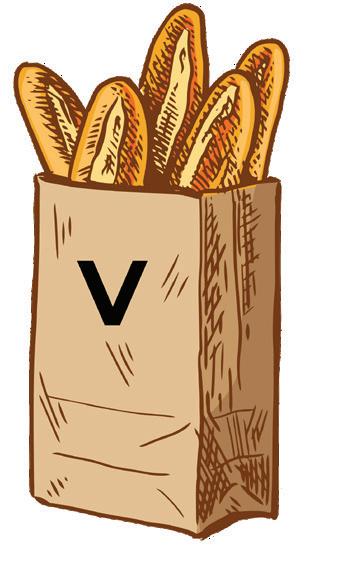






KIDS 84 COLlive Magazine A, M, ש, V M, ש, A, V ש, M, V, A V, A, M, ש
Москва ש ש 5
Shulamis was turning bas mitzvah and wanted to give the Rebbe a personal brachah—but she didn’t want anyone else to see. So she wrote it in code. Even though the Rebbe was busy taking care of millions of Yidden, he took the time to answer her in just the way she asked! What brachah are we all asking for?



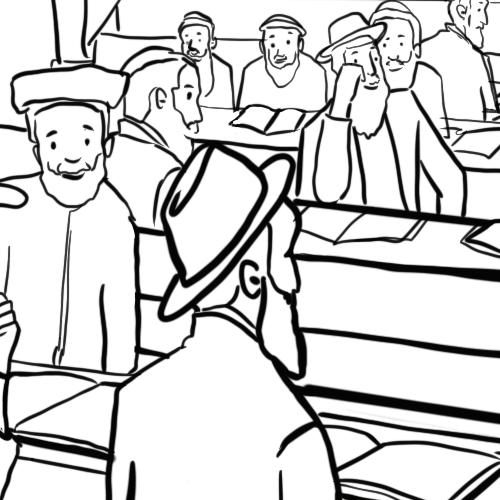

KIDS Tishrei, 5783 85 VD LNRGHZBG VZMS MNV! E=I M=N A=Z Z=A
6
The misdialed phone call from Germany
By Yosef Shidler
Close your eyes and pretend you’re sitting in your family’s sukkah. What do you see? Is there a fresh bouquet of flowers? Is the table set with beautiful dishes and delicious-smelling food? Are you wearing a new outfit for Yom Tov, and maybe even a pair of new shoes?
Most of us take what we have for granted. We’re used to having everything we need, and we even spend extra money in honor of Yom Tov.
This wasn’t the case for Gavriel (name changed to protect his privacy). A resident of Beit She’an, a historic town in the Northern District of the holy land of Israel, he didn’t have enough money for his basic needs. Each week, he worked to earn enough to buy bread and milk for his family. If they were lucky, they could sometimes afford chicken for supper. When they weren’t, they settled for cereal. There was no
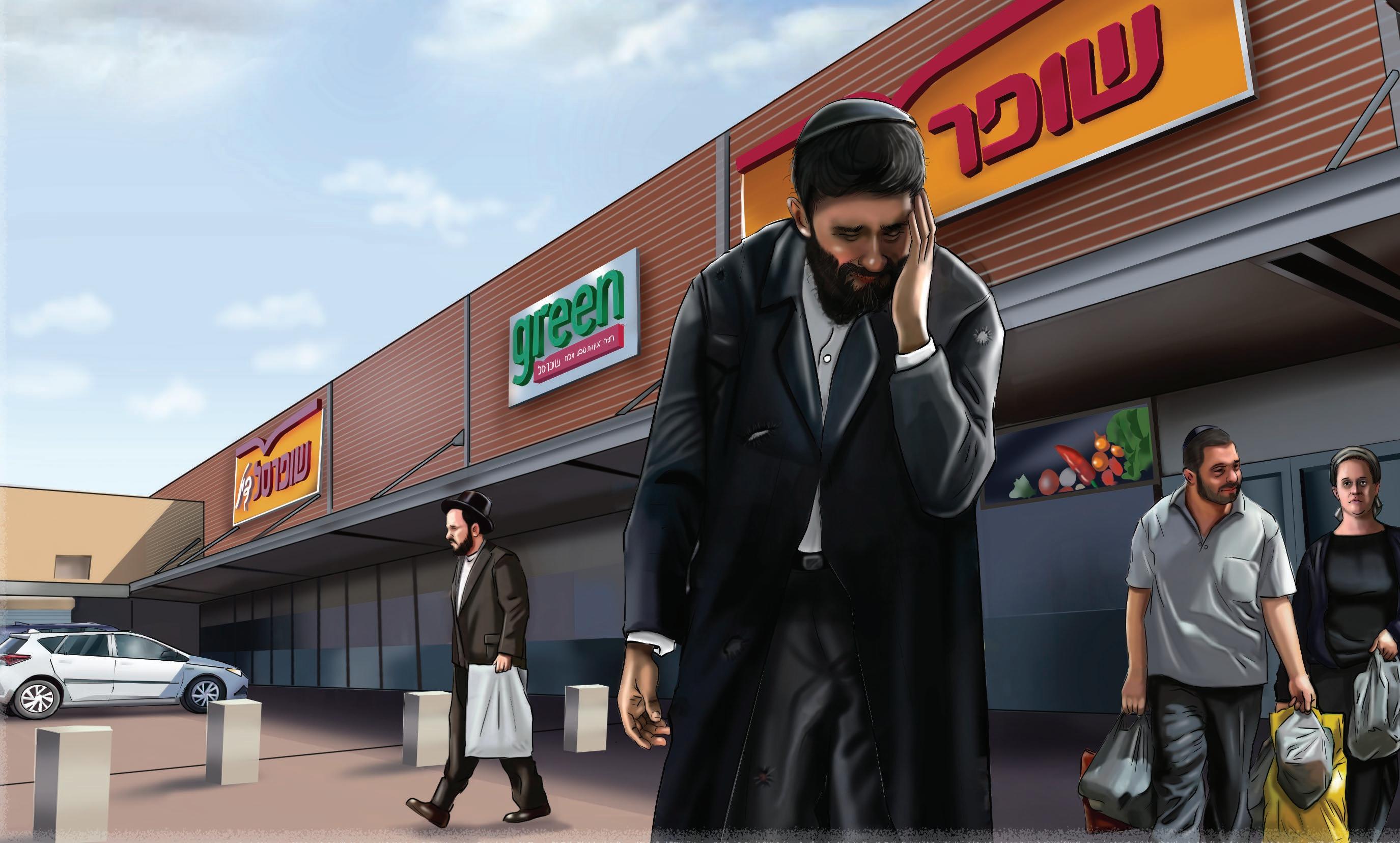
86 COLlive Magazine
such thing as “spending extra” for Yom Tov. This is the story of how a misdialed phone call from Germany changed the Yom Tov experience for Gavriel and his entire family.
***
On Erev Sukkos one year, Rabbi Yaakov Schemulevitz, the Director of Chabad of Beit She’an, received a phone call. One the line was Rabbi Zalman Gurevitch, Director of Chabad-Lubavitch of Frankfurt in Germany.
“Hi!” Rabbi Schmulevitz warmly replied. “It’s always nice to speak with another Shliach.”
“It’s nice to meet you, too! But sadly, I’m not just calling to talk. I need a favor, if it’s not too much trouble,” Rabbi Gurevitch said. “There’s a family in your community with no money to buy food for Yom Tov! A wealthy man from my community wants to help them, but it will take a few days until the money reaches them. We really wanted them to have this money for Yom Tov...”
“Oy vey!” Rabbi Schmulevitz exclaimed. “What can I do to help?”
“Well, could you give them the money today, and we will pay you back after Yom Tov?”
The sum was a large and generous one, but Rabbi Schmulevitz didn’t think twice. “Of course! Who should I
reach out to?”
Rabbi Gurevitch gave him the name of Gavriel, which Rabbi Schmulevitz immediately recognized.
“He’s asked for help before, and I always give him whatever I can,” Rabbi Schmulevitz said. “I already knew he didn’t have it easy with parnassah - but I didn’t realize how bad things were. He really can’t afford any food for Yom Tov?”
“That’s what it seems like,” Rabbi Gurevitch said.
“Okay. I’ll meet him and give him the money. We’ll make sure his family has everything they need for Yom Tov.”
“Yashar Koach,” the Shliach from Germany said. “Tizku l’mitzvos, and have a wonderful Yom Tov.”
Rabbi Schmulevitz hung up and gathered the money the wealthy man wanted to donate. It was an amount that would provide Gavriel and his family more than enough for Yom Tov. There was even enough for him to buy a
special Yom Tov gift for his wife!
But how did a poor man from Beit She’an know a rich man from Frankfurt?
***
Rabbi Schmulevitz contacted Gavriel, and he hurried to come to pick up the money.

“You don’t know how much this means to my family and me!” he exclaimed, shaking Rabbi Schmulevitz’s hand.
“What would I do without you?”
“Use it well, Gavriel,” Rabbi Schmulevitz, and curiously asked, “I’m interested, though; who do you know in Germany?”
“You wouldn’t believe it,” Gavriel said. “I don’t know the man that’s giving me this money. The first time I ever spoke to him was yesterday!”
“Really? So… why’s he sending you money?”
“I’ll tell you,” Gavriel replied.
***
You know me. I’ve worked
STORY Tishrei, 5783 87
hard all my life but never had enough money. I’ve tried a lot of different kinds of jobs, but one way or another, they never seem to work out. Parnassah is my greatest struggle. I’ve gotten used to it - I make do with the little money I have, and I ask for help when I need it.
However, in the last six months, things just got so much worse. We hit a point where was no food in the fridge. I asked people for help like I usually did, but the little money they gave me didn’t last very long. We were barely surviving.
Two days ago, my wife started to cry. “Gavriel,” she told me, “I know you work very hard, and I don’t want to complain - but Sukkos is almost here! What are we supposed to serve at our Yom Tov meal? Our kitchen is empty, and if nothing changes, our table will be, too.”
She flung open the fridge. There was absolutely nothing
inside except for a single bottle of milk. “We don’t have challah, let alone fish or chicken!” she cried. “We don’t even have vegetables for a salad!”
“Please,” she begged me, “Get out there and try to bring home some food for Yom Tov.”
I left the house and wandered down the street, not knowing what to do. My wife was right. I had to bring home food for our family. But how would I buy food with no money in my pockets?
I first went to the local grocery store and walked up to Boaz, the owner.
“Boaz,” I stammered, “It’s almost Yom Tov, and I have no food in my house. Please, can you help me?”
Boaz looked at me sadly. “I want to help you, but you already owe me hundreds of dollars. I can’t do it this time. I’m sorry. Please try to understand.”
I did understand. Sometimes, people can help - and sometimes, they just can’t. I know that if I had the money, I’d help Boaz how he often helped me - but I’m not the only one in the world who can’t do that right now. I had to try somewhere else, so I thanked him for his time and left.
My next stop was Tzion’s grocery store. “How are you, Gavriel?” he greeted me.
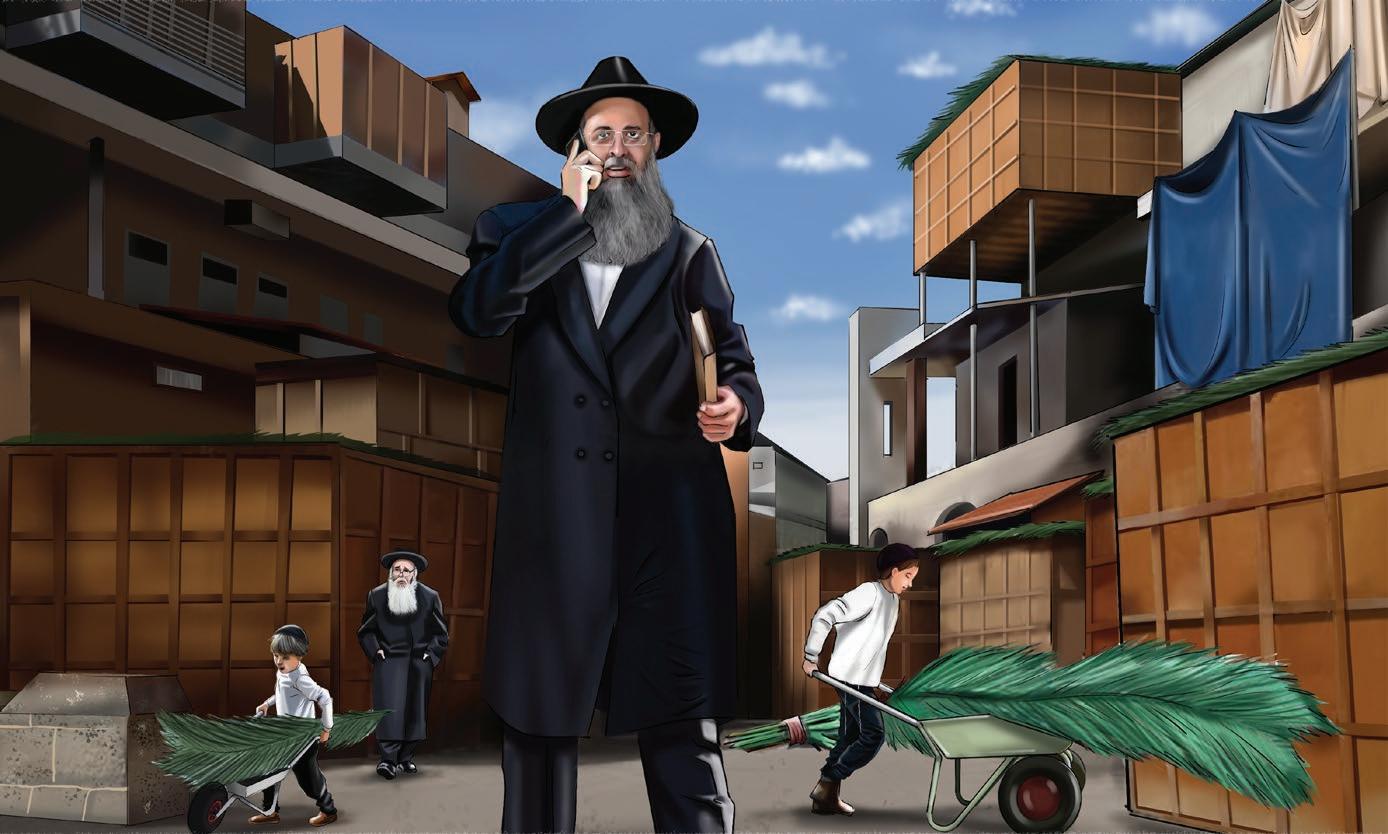
I told him the whole story and begged him to help. But, just like Boaz, Tzion looked uncomfortable. “You know I like to help you,” he told me. “But I can’t afford to give you free food all the time. Pay me back what you owe, and I’ll be happy to help you again.”
Sadly, I left his store and tried a few more places - but nobody would let me buy food on credit alone. They insisted I pay for it, but I simply couldn’t. I even went to the bank and asked if they could lend me some money, but they refused.
What do I do now? How can I go back home to my wife without any food?
I sat down on a bench and started to cry. “Hashem,” I whispered, “You know I work hard to make a parnassah. Somehow, it seems You decided, a long time ago, that I’m supposed to be poor. But now, I have no food for
STORY 88 COLlive Magazine
Yom Tov! I asked everyone for help, but they all turned me down. So now, I’m turning to You. I’m going to build a Sukkah, and You will make sure that we have food to eat in it.”
Feeling a little better, I got up from the bench. Suddenly, my phone rang from an unknown number.
I wasn’t in the mood to talk to anyone, but I answered anyway. “Hello?”
“Hi, Meir!”
“I’m sorry,” I said. “I think you have the wrong number.”
“Really? You’re not Meir?”
“No. I’m not Meir,” I said. “I hope you can get a hold of them, though. Bye.”
“Wait, don’t hang up! Where are you from?”
“Beit She’an.”
“Perfect! Meir lives there, too! Maybe you can help me find him?”
I was getting annoyed. Who was this guy, and what did he want from me?
“Listen,” I snapped. “It’s really not a good time. You have no idea how stressed I am. I’ve got too much to worry about right now. I don’t have time to run around town, looking for some guy named Meir whom I don’t know. And I don’t know you either! I’m going to hang up now. Have a good...”
“No, don’t!” the caller
exclaimed. “What do you mean? What’s wrong?”
“Everything!” I shouted. “My family has nothing to eat for Yom Tov. My wife sent me to find food, but nobody wanted to help me! We have no potatoes, no fish, and no meat. Not even challah!”
The man was quiet for a second. “I’m going to help you,” he finally said. “I’ll give you enough money to buy whatever you need for Yom Tov.”
I was speechless. “Whatreally? Are you… are you joking?”
“I’m completely serious.”
“But you don’t even know me!”
“All Yidden are brothers,” the man replied. “Look, I live in Germany, so I can’t bring you the money in person. Do you have a bank account I can transfer the money to?”
I gave him my bank details, but, as you know, he wasn’t able to transfer the money in time for Yom Tov. Sending it through the mail would have taken too long, too.
This morning, he called me again.
“Gavriel, I have an idea! What’s the name of the Chabad Shliach in your city?”
“Rabbi Schmulevitz.”
“Perfect! I’m good friends with Rabbi Gurevitch, the Shliach here in Frankfurt. I’ll ask him to speak with Rabbi
Schmulevitz and figure it out.”
***
“...and that’s when I got the call from the Shliach in Germany!” Rabbi Schmulevitz exclaimed.
“Yep!” Gavriel said happily. “I davened to Hashem with all my heart, and then everything just fell into place. I don’t know this man, but Hashem sent him to help me. Anyway, thank you so much for getting me the money in person. I’d better get going - the shops are closing soon, and I have a Yom Tov meal to buy!”
Gavriel rushed out to the stores, eager to fill up his cart.
Rabbi Schmulevitz had lots more to do before Yom Tov, but he took a moment to sit in his office to marvel at this miraculous chain of events he was part of. Thanks to a heartfelt tefillah, a misdialed number, and the network of the Rebbe’s Shluchim in every community, a family was going to have a beautiful Yom Tov.
*
The story was told by Rabbi Yaakov Schmulevitz OBM and was published in the new book “Amazing Miracle Stories for Kids,” available at www.TzaddikStory.org and Jewish bookstores.
STORY Tishrei, 5783 89
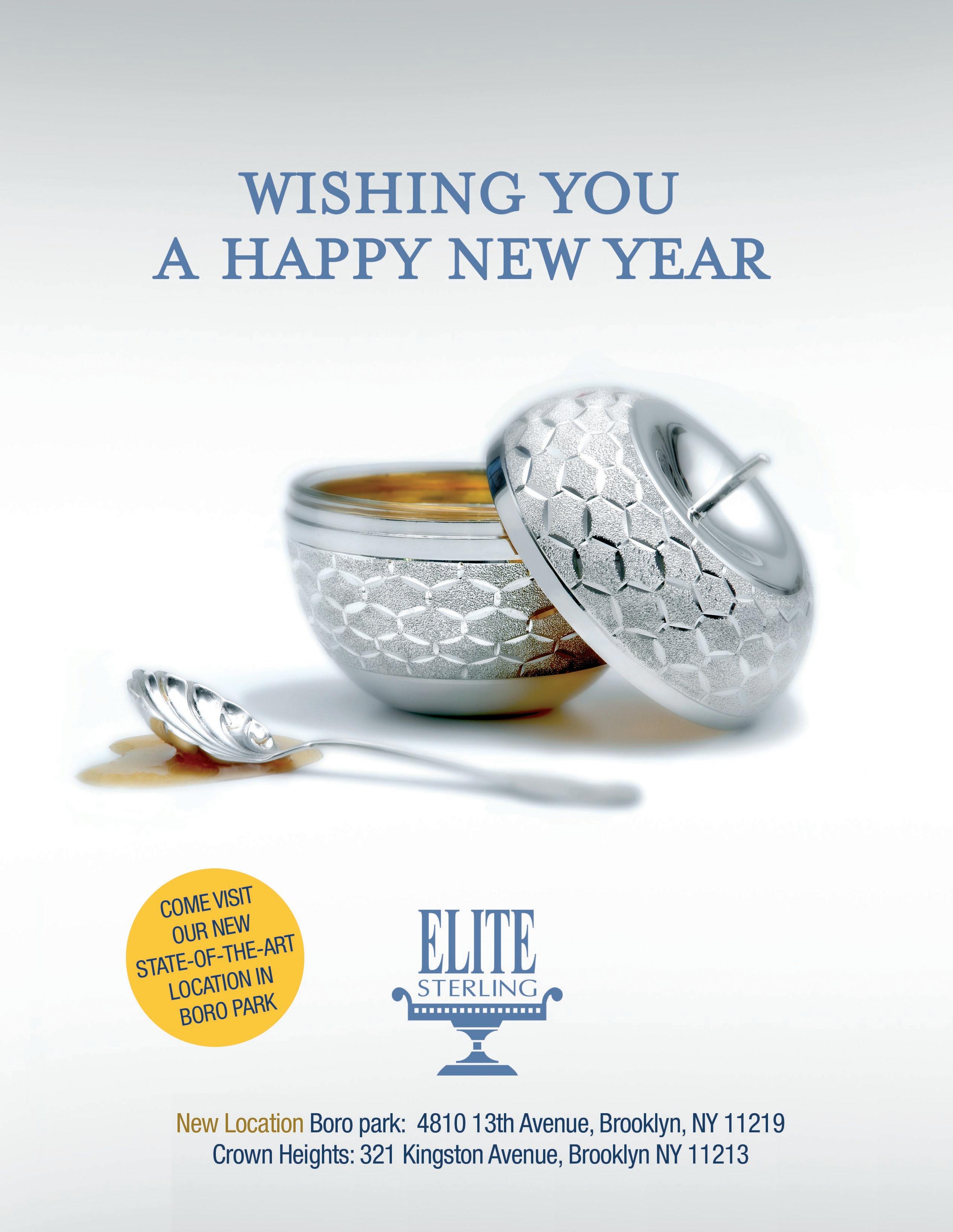
WISHING OUR CUSTOMERS A HAPPY AND
NEW YEAR

HEALTHY
ASK THE THERAPIST
WITH RABBI DANIEL SCHONBUCH, LMFT

REDEFINING THE NEW YOU
THE PSYCHOLOGICAL EQUIVALENT TO EATING THE HEAD OF A FISH ON ROSH HASHANAH
As we begin the new year, it is time to remember what we already accomplished last year, what we would have liked to do but were unable to do, and most importantly - to define for ourselves what we want to achieve in the future year.
According to Chassidic thought, on the evening of Rosh Hashanah, Hashem withdraws His light. Then, during Musaf the next day, we arouse His will to
re-enter the world by blowing the Shofar, offering our prayers, and defining our highest intentions. We have the unique opportunity to go to the “rosh” (head) and define who we are and what we want to become in the upcoming year.
This is the meaning of our tradition to eat a head of a fish when we proclaim: “We should be the head and not the tail.” In other words, we determine
“who” we are and “what” we want to accomplish for the next 12 months (in both cases, a leadership -rosh- role and attitude).
One may also glean from this a lesson in psychology. In order to heal, we need to define “what” or “who” we would like to become first and then bring that vision into conscious reality.
This differs from classic psychotherapy where therapists
92 COLlive Magazine
focus on a person’s past. For over one hundred years, “depth” therapy aimed to dig into our past to uncover our hidden drives and dark intentions.
Viktor Frankl, the Holocaust survivor and author of Man’s Search for Meaning, maintained that we need to focus more on defining our future, and add “height” into the equation. To do so, he created Logotherapy, the therapy of uncovering meaning in life.
In a famous video, Frankl describes the inner dialogue we need to have with ourselves: “I wish to become this way or that way. I need to decide, within the limitations of genetics, my situation, and other factors beyond my control, what I choose to become. This could be seen in Auschwitz for example where the Nazis were able to take away all human freedoms where people faced inescapable suffering. Despite this, we still have the last of all human freedoms, the ability to choose our attitude towards our predicament.”
This, we may say, is the psychological equivalent to Rosh Hashana, when we have the opportunity to define what we want to become and then spend the rest of the year actualizing these potentialities.
What would stop us from carrying out those goals? I found there seems to be a combination of several reasons:
1. Defined goals. More often than not, our goals are not necessarily clear to us. Because of this, we tend to send out mixed messages to ourselves, and to others, about what we
want to accomplish. Therefore, we end up not getting where we want to be because we’re not sure where that is.
2. Sustaining motivation. At times, our motivation for what we want to accomplish may not be sustainable in the long run. For example, one intends to make money to be recognized or amass wealth. But when we don’t see that automatically, we become demotivated since our motivation is only invested toward the actual outcome, and we can’t appreciate all the small steps along the way.
3. Lack of discipline and focus. We may not have defined and created certain systems in place to ensure that we stay focused and committed to taking the necessary steps each day to achieve our goals.
4. Self-sabotage. We may consciously or unconsciously sabotage our goals through certain fears, beliefs, and insecurities that keep us from taking action. Some of those core negative beliefs may be as fundamental as “I’m not capable of doing that,” “Whatever I do never really works out well,” or “I’m powerless to make changes in my life no matter how hard I try.”
As Stephen Covey writes in his book The Seven Habits of Highly Effective People, we need to first “begin with the end in mind,” and the rest will flow from the top. The first step is to clarify our goals and vision of what we want to achieve. We then discuss ways to sustain motivation, create systems to ensure our success and reduce self-sabotage.
Here are some questions one could ask to make this easier:
What can I be best at during the next 12 months?
What do I value the most, and what are my core principles?
What do I need to change in my life for my goals to become a reality?
What motivators will I need along the way if I don’t see automatic results?
What systems could I put in place now to ensure that I stay focused and committed to achieving my goals?
What are some of the messages I could give myself when my negative thoughts arise?
After answering these questions, you can use this as a living document as you progress through your journey in the new year. This can serve as a reminder as we seek to improve ourselves and affect positive change in this world.
- Rabbi Daniel Schonbuch, LMFT is a licensed psychotherapist specializing in treating trauma, anxiety/depression, and marriage therapy. He is also the director of torahpsychology.org offering accredited life coaching programs.
ADVICE Tishrei, 5783 93

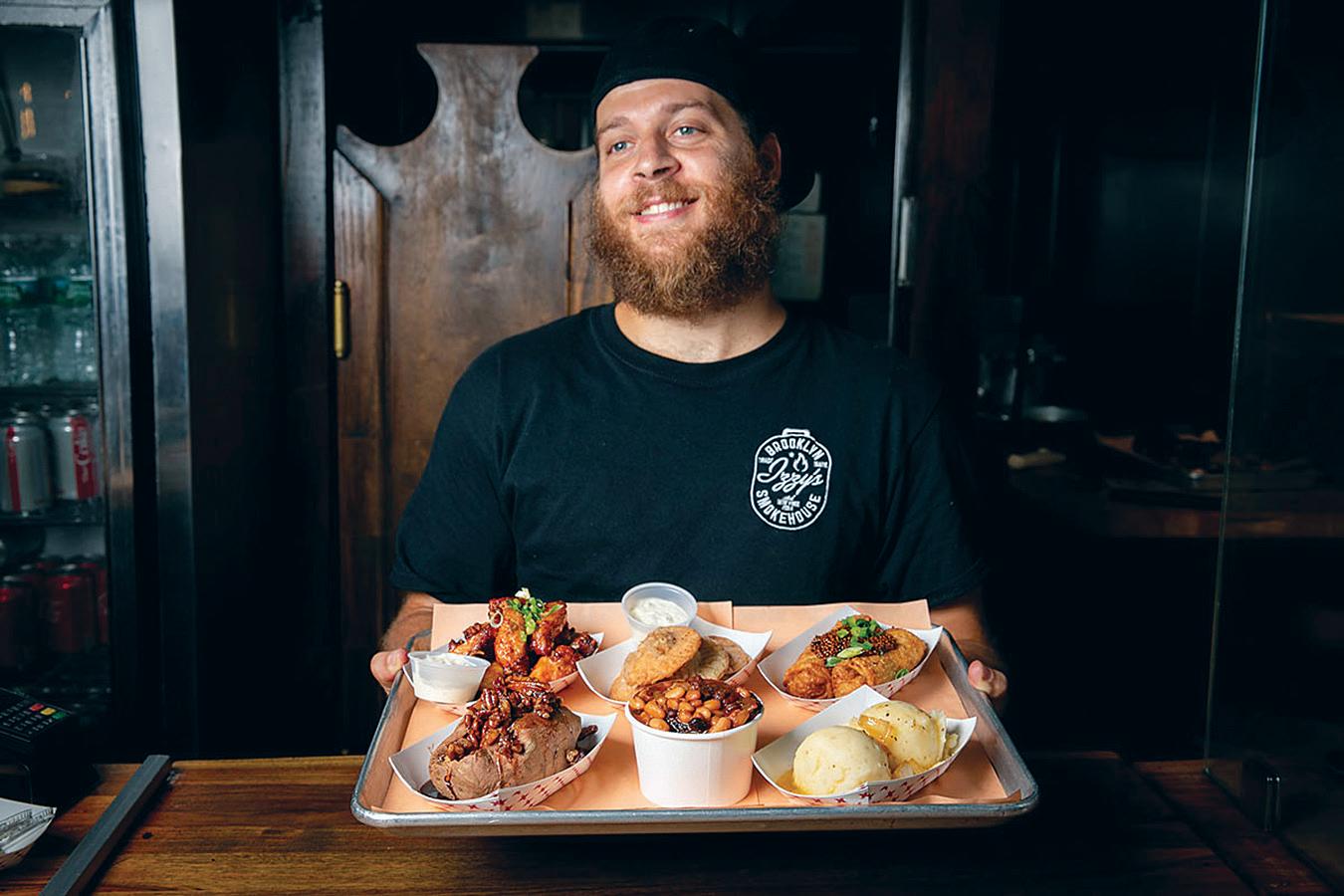


Startups • Expanding Businesses • Storefronts • Home-Based • Men/ Women Owned Get a loan up to $50,000 No Interest. No Fees. Ever. Restrictions apply. TWO GUARANTORS MAY BE REQUIRED. The Hebrew Free Loan Society provides interest-free business loans to low-and moderate-income residents of New York City. Find out what HFLS can do for you: 212.692.9023 • biz@hfls.org WWW.HFLS.ORG SOMETIMES ALL A BUSINESS OWNER NEEDS TO SUCCEED IS A HELPING HAND LET US LEND YOU A HAND. An initiative of the Hebrew Free Loan Society in partnership with Crown Heights Young Entrepreneurs
In ב"משת, the Rebbe instructed Bais Rivkah to write a הרות רפס compiled with letters bought by everyone associated with the דסומ. This year, as part of the year of celebration, Bais Rivkah is writing their 8th הרות רפס to date!
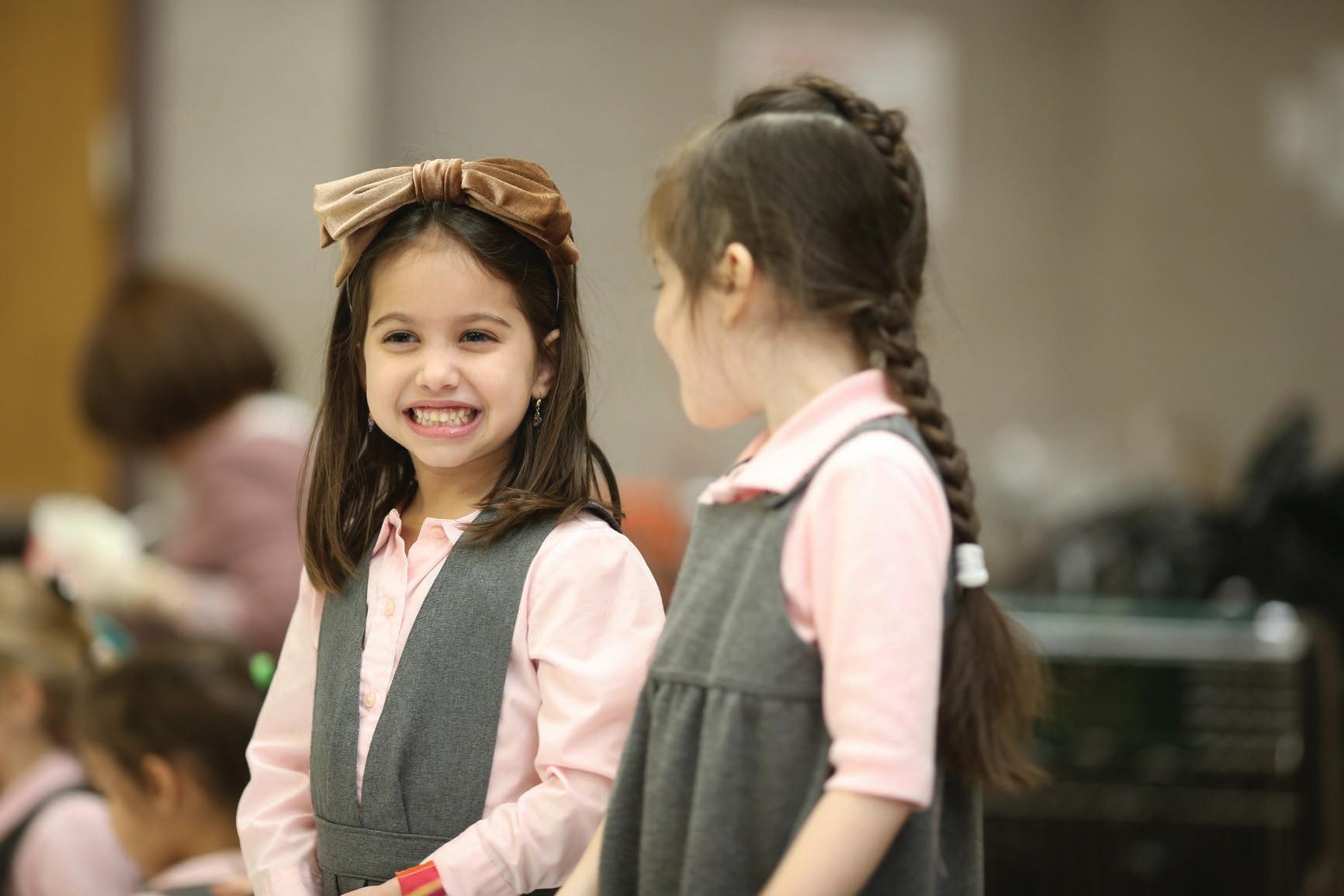

AD ב " פ ש ת ה ר ו ת ר פ ס ה ק ב ר ת י ב BUY YOUR LETTER TODAY! bethrivkah.edu/sefertorah B"H
Paddle boating with the in-laws
 By Mordechai Schmutter
By Mordechai Schmutter
A
as
96 COLlive Magazine
few thoughts on Chol Hamoed trips -
our forefathers have done
Chol Hamoed trips are an ancient tradition dating back thousands of years to Biblical times. Our forefathers had a long Sukkos – 40 years actually – but they couldn’t just sit in their sukkahs the whole time, complaining, so they went on trips. Mostly nature hikes. It was hard to come up with anything else to do because they were in the desert. There were no bumper boats. Also, there were really no rainy days. Fortunately, nowadays, we have tons of options, which is why, when it comes to Chol Hamoed, we can come up with absolutely nothing. Every night of Chol Hamoed is spent researching the same places you researched the previous night, because you don’t want to do that in the morning, because once you’re finished with the extended Shacharis and fatherson learning, it’s almost time to get back for Mincha.
That’s why you want to go somewhere with a million Jews - so you don’t have to come home for Mincha. You can just daven in the food court while goyim pass by, and you all pretend to be doing something else, facing the same direction.
YOU (casually):
“What a beautiful sunset!”
GENTILE: “The sun is behind you.” So here are some ideas for Chol Hamoed trips:

1. Paddle Boating
Paddle boating, as the name implies, is boating without a paddle. It consists of boats with PEDALS rented out on small lakes that are one-foot deep but that you still don’t want to fall into because there’s something large and slimy at the bottom. But it’s great for a day trip if your idea of a relaxing time is pedaling furiously while arguing with the person next to you about who’s doing more of the work. Paddle boats sound like a lot of fun – it’s like biking on the water! – until you realize that there’s a lot of pedaling and not a lot of coasting. It’s not like there are hills.
I’ve actually made several attempts to go paddle boating on Chol Hamoed with my in-laws because it’s something everyone can do. You’re either pedaling, or you’re sitting on the back of the boat making it heavier. No offense. And attempting to switch seats is a lot of fun too, because you have to figure out how to phase
HUMOR Tishrei, 5783 97
through each other without tipping the boat over and having everyone touch the muck, chas v’shalom. But it’s never actually worked out. The first time we tried going, we ended up at a park where paddle boating was closed for the season, despite all signs stating the contrary. So we ended up at the nearby playground.
The second time we went, we specifically tried a different place, but then my GPS totally misunderstood which town we were talking about and led us an hour in the opposite direction and told us we were at our destination in middle of a deserted, windy deadend road. So we ended up at a nearby swingset store, which pointed us to a nature preserve, probably to get our kids to stop trying to climb on their swingsets.
To date, we have never successfully gone paddle boating. In fact, in our family, “going paddle boating” has come to mean attempting to go somewhere, getting lost, and then doing something else that is not as good and that we could have done without all the driving. We don’t attempt to go paddle boating anymore. But that doesn’t mean you can’t. Bring a good pair of boots.
2. Aquariums
An aquarium is like a zoo for fish, except the only thing that separates you from all these denizens of the deep, not to mention slime, is a thin layer of
glass that you’re not allowed to touch, just in case.
Thankfully, the other difference is that if an animal escapes from the zoo, you need to run. If an animal escapes from the aquarium, you just have to say, “Oh, there’s the shark!” And step over it. It’s not like the fish are coming up through the toilets.
One highlight of aquariums is the touch tank, which is kind of like the barnyard section at a petting zoo. But unlike petting zoos, where you get to touch sheep and goats, in a touch tank, you get to touch starfish, which you’re not entirely sure are a kind of fish. That might be a lie dreamed up by the aquarium industry. They keep saying that if you cut one leg off a starfish, it’ll grow back, even though they never let you try it. But even if it’s true, it kind of sounds like a starfish is a plant.
They also let you touch shells that may or may not have crabs inside them, which is terrifying.
I don’t know what it is about a hermit crab that made them say, “Let’s put these in a touch tank.” Was it the fact that it’s called a hermit?
But they don’t let you touch the big fish. Those are usually kept outside, though they do post what time they’re going to feed them. That way the fish can go, “I’m starving. What time is lunch? Oh, 2:30. Is everyone going to stand around and watch me eat again? Or is the trainer going to bring enough fish for
everybody?”
“What are we eating?”
“Fish.”
“Are these the same fish that we just saw inside?”
“No, these are the slow learners.”
In fact, this is why they keep the big fish outside. If the big fish came inside and saw how many little fish there were, they would bust out of their pens and go for it. We’d have sea lions jumping around everywhere. Or seals. I don’t know. I don’t actually believe those are two different things. I think that’s another lie the aquariums keep telling us.
Something smells very fishy over there.
3. Alpine Slide

An alpine slide is something you can do at a ski resort that doesn’t involve spending hundreds of dollars on ski equipment you don’t know how to use just so you can be more aerodynamic when you plow face-first into the side of the gift shop.
The thing about ski resorts is they noticed at some point that business tends to go downhill during the summer. (Oy.) So they looked into it and realized that it might be because there was no snow.
So they set up a concrete slide that goes down the mountain, but it doesn’t go straight down the mountain, or you’ll be hurtling down at speeds of about 70 billion miles per hour. So they throw in curves, which
HUMOR 98 COLlive Magazine
slow you down by throwing you off the track as soon as you reach, say, 20 billion. They also, baruch Hashem, give you a little cart to sit on, along with a tiny handbrake that is just as terrified as you are. The entire brake is a skinny pole between your legs that feels like it’s going to snap off at any moment.
In fact, in the safety speech that they give you, they say, “Don’t overuse the handbrake, or you’ll wear it out.” Like there’s only a certain amount of uses of the handbrake until it totally stops functioning – statistically in middle of the mountain. And you’re thinking, “The person who uses this cart after me is going to die if I overuse my handbrake. So should I die instead?” You could totally overuse it and have no idea. Especially if you cluelessly go down really slowly with everyone else tailgating you.
So if you go to these places, you should really check the newspaper the next day.
4. Factory Tours
In a factory tour, they show you how something is made, which usually involves some kind of machine that they don’t sell in regular stores, and you’re like, “Well, sure. If I had that machine, I could make it too. No big deal.”
Everyone goes and pretends to be interested in the whole manufacturing process, but everyone knows you’re all there for the free samples. That’s why they don’t give them out until the end. Sure, you think they think you’re interested. You’re asking questions, taking notes… (“So


you’re saying the first machine dumps it onto the second machine? Wow!”) But they know that you did not go on vacation so you can learn stuff. They talk to hundreds of people a day, and not one of them actually wants to know, say, how glue is made and why it doesn’t stick to the inside of the bottle. They just want their free sample.
When I was growing up, my parents actually took us to the Kedem factory one year. We spent a while paddle-boating around and looking for the factory, which, as it turns out, did not give tours. They just had a tasting room. For wine.
My parents showed up with eight or nine underage children, so they gave us 4-oz. cups of grape juice, which we couldn’t drink because it was Sukkos. But then another family made a sukkah out of some branches and a flat refrigerator box that I’m pretty sure they found in the dumpster, and we got to squeeze in one at a time and drink our 4 ounces of grape juice, at least until the Sukkah fell over.
So it turns out our ancestors are right. If you’re going on Chol Hamoed trips, bring a Sukkah. But that won’t help if you are stuck halfway down the alpine slide...
-- Mordechai Schmutter is a freelance writer and a humor columnist for Hamodia, COLlive Magazine and other publications. He also has six books out and does stand-up comedy. He can be contacted at mschmutter@gmail. com
IMPORTANT NUMBERS & INFORMATION HATZOLAH (718) 230.1000 SHMIRA (718) 221.0303 SHOMRIM (718) 774.3333 CHAVERIM (718) 222.1800 BIKUR CHOLIM OF CROWN HEIGHTS (718) 467.1661 CROWN HEIGHTS URGENT CARE 555 Lefferts Ave. Brooklyn, NY 11225 BEIS DIN OF CROWN HEIGHTS 390 Kingston Ave. (Above Kettle & Cord) (718) 604.8000 RABBI OSDOBA ext 1 RABBI BRAUN ext 3 Tishrei, 5783 99
By Zev Gotkin
824 Eastern Parkway, situated on one of the most heavily trafficked blocks in Brooklyn, is flanked on either side by a row of pre-war apartment buildings and a yeshiva on a tree-lined boulevard. Looking quite ordinary to the eye, most people only have a vague sense of what transpires within its walls.
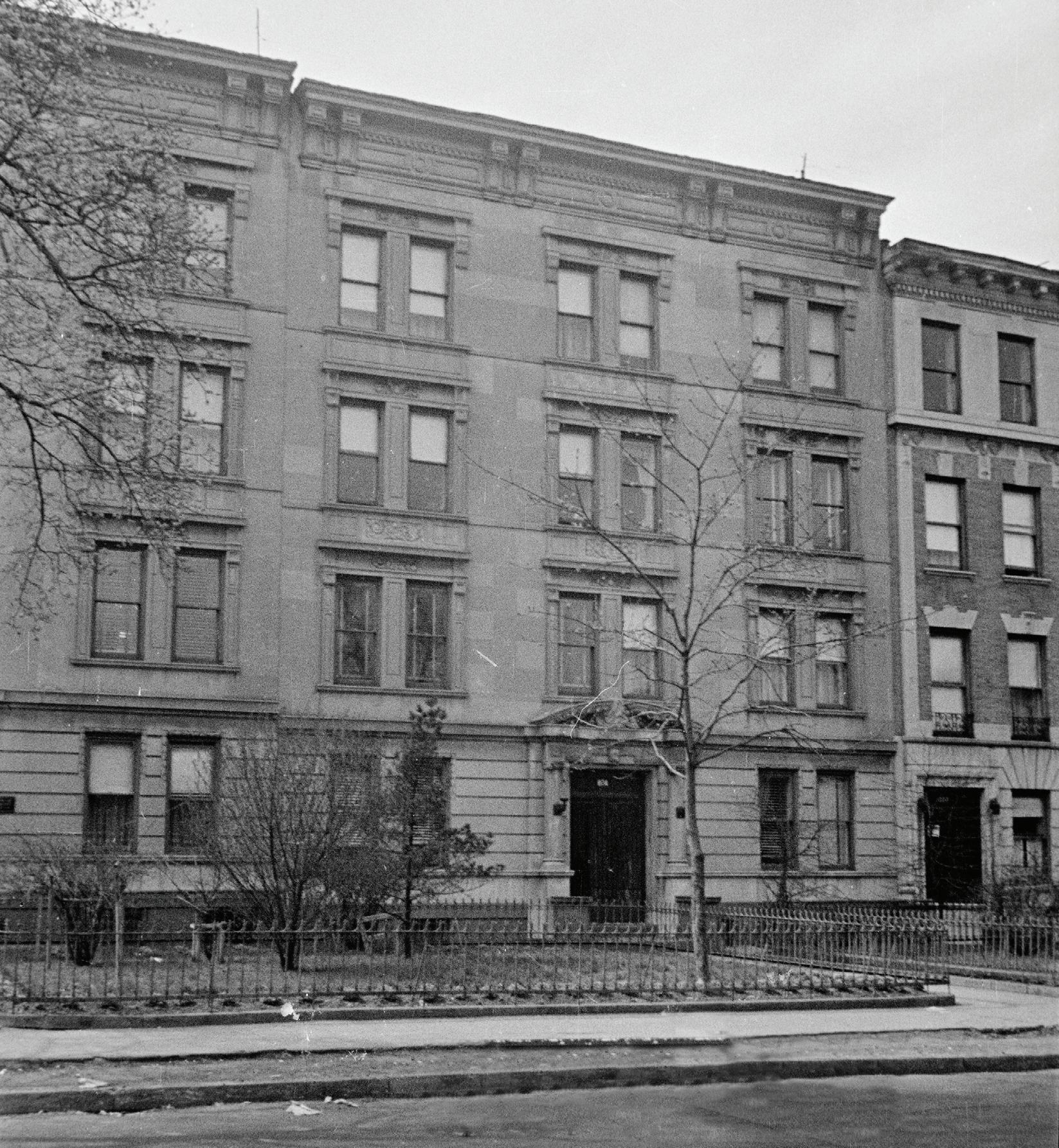
Initially built in 1915, the building is 12,736 square feet and has four floors plus a finished basement. In 1965, Rabbi Yaakov Yehuda “J.J.” Hecht purchased it as the headquarters for the National Committee for the Furtherance of Jewish Education (NCFJE), which he headed. He later learned that 824 has the same gematria (numerical value) as the letters Chof, Beis, and Dalet, which spells Chabad.
Initially, all of the units in the building were residential apartments, and tenants living on the top three floors continued their leases. Rabbi Hecht ran the organization from an office on the first floor, but as work grew, he used office spaces in neighboring buildings. Gradually, tenants moved out, and the entire building was made available.
Quickly filling a sizable portion of it was Hadar Hatorah, the world’s first Yeshiva providing Torah education to baalei teshuvah, or young men from assimilated backgrounds. The Yeshiva was founded by Rabbi Yisroel Jacobson, one of the first Lubavitcher activists to arrive in the United States. He founded an ally for the Yeshiva in Rabbi Hecht, who agreed to house and fund it.
The top two floors of 824, as well as neighboring 828 Eastern Parkway, serve as dormitories for students of the institution, which has since remained Yeshivas Kol Yaakov Yehudah - Hadar
HaTorah in memory of Rabbi Hecht. The second floor of 824 has a beis midrash, classrooms, a shul, and the Yeshiva’s offices. The basement serves as a kitchen and a dining room for the Yeshiva.
The Yeshiva’s presence in the building was the cause of unique visits by the Rebbe to 824 Eastern Parkway on the first night of Pesach for several years. The Rebbe would inspect the kitchen before making an appearance at the Seder held for the students in the dining room. The Rebbe also walked up the stairs and reviewed every floor, including the students’ dorm rooms on the upper floors.
The Rebbe took a keen interest in all of the activities in the building. “The Rebbe asked a lot of questions about everything down to the smallest details,” said Rabbi Shea Hecht, a son and successor of Rabbi J.J. Hecht. “The Rebbe was always very supportive [of our activities].”
824 is known as the site for Kapparos custom before Yom Kippur, and the Rebbe would ask for
100 COLlive Magazine Then &
1940
a detailed report about what transpired – “How many chickens were sold? How many Kapparos were made?” etc.
From 1979-1980, the building became the temporary home of young Jewish boys who escaped the Islamic Revolution in Iran with the help of Rabbi J.J. Hecht and his son Rabbi Sholom Ber Hecht. A shul called “The Persian Synagogue” was built for them on the second floor, where it remains today. The story is told that on the first night of Pesach in 1979, the Rebbe requested that maror from the Iranian refugees’ Seder be brought for use at his own Seder.
Today, several NCFJE divisions run from its first floor. Among them are Camp Emunah for girls, Operation Survival to prevent at-risk youths from drug and alcohol addiction, Toys for Hospitalized Children, the Jewish Summer Fellowship (formerly Ivy League Torah Study), the Beth Din of East Flatbush, and a variety of funds. Release Time, which provides Jewish educational programming for public school students, also
operates out of the building.
Depending on the time of year, seasonal initiatives, such as the Lag BaOmer Parade and Jewish children’s rallies, are conducted from the building. Another son of Rabbi J.J., Rabbi Shimon Hecht, presents a Daily Siyum (completion of a Talmudic tractate) Broadcast during the Nine Days from 824. One office is often used for private family counseling, working with couples, youth, and people trapped in cults.
A humble building on the outside, 824 Eastern Parkway continues to buzz with activity on the inside. What happens between its walls provides for the well-being of Jews, and even non-Jews, well beyond the borders of Crown Heights.
Amidst a sea of change in the neighborhood, 824 Eastern Parkway remains an engine that powers various organizations and initiatives making a lasting impact.
 824 Eastern Parkway, Brooklyn, NY 11213
824 Eastern Parkway, Brooklyn, NY 11213
Tishrei, 5783 101
Now 2022


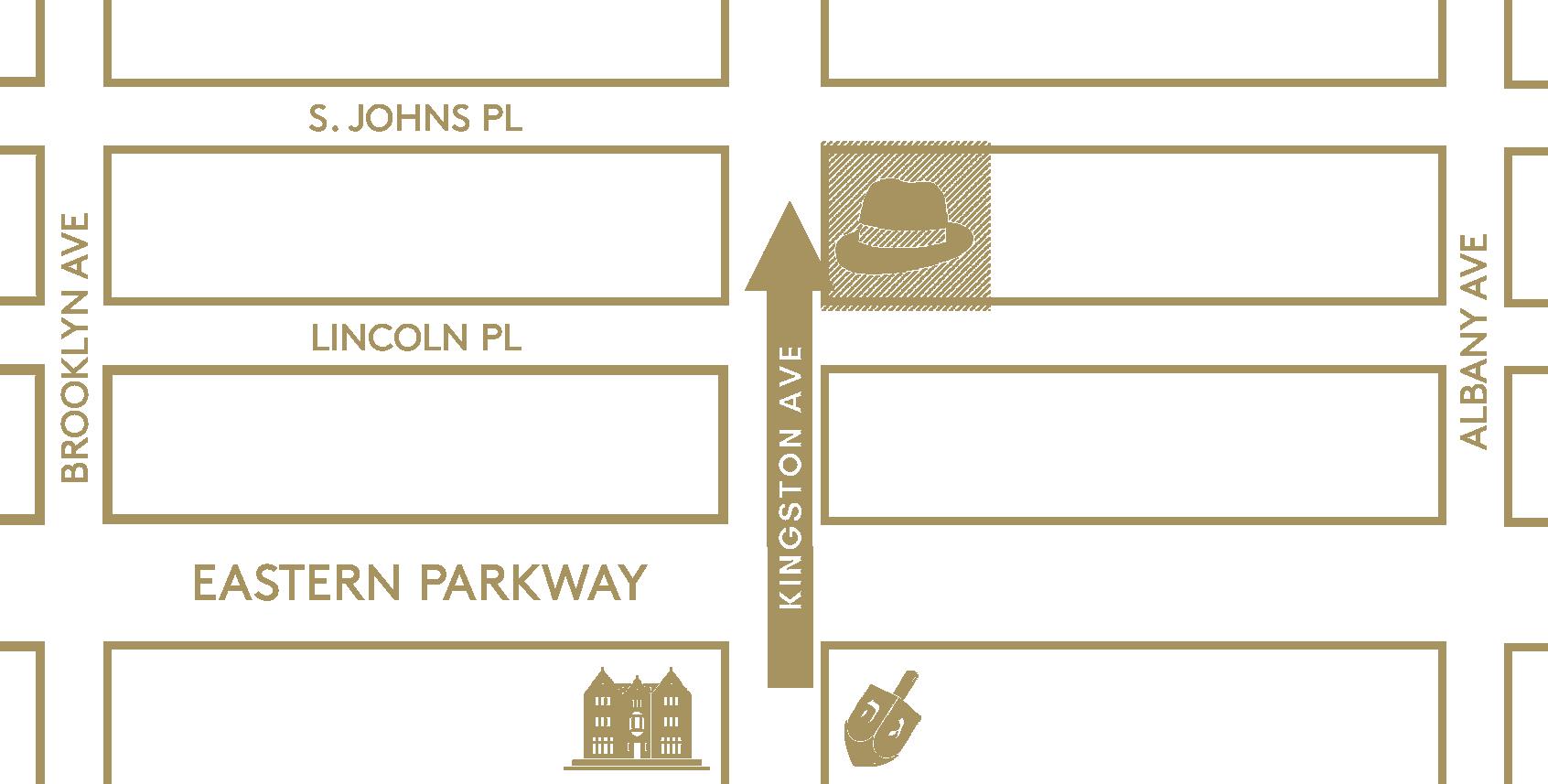
Find us at 267 Kingston Ave, Brooklyn, New York.









BH





















URefuah.org 770-417-4222 Sharing is in accordance with Sharing Guidelines. United Refuah HealthShare is not an insurance company and does not offer insurance Affordable Nationwide Healthcare Membership Single: $199 /mo. ▪ Couple: $349 /mo. ▪ Family: $499/mo. Comprehensive & Caring Medical Cost Sharing for:
